


GHD announced a partnership with Pacific Gas & Electric Company to provide preliminary engineering design services for a H2/natural gas blending project, named Hydrogen to Infinity (H2∞).
At the Canadian Hydrogen Convention, Edmonton International Airport and Hydra Energy announced the signing of an MoU to deliver North America’s first airside H2-diesel fleet.
Sasol ecoFT has signed a letter of intent with Uniper to investigate the possibility of establishing an industry-scale production facility for sustainable aviation fuel.
Olin Corporation and Plug Power announced the signing of a MoU with the intention to create a JV to produce and market green H2.
Lummus Technology announced a partnership with Braskem to license green ethylene technology.
Maire Tecnimont S.p.A. announces that its main subsidiaries have been granted new awards for approximately €155 MM for licensing as well as engineering, procurement and construction activities.
Tierra del Fuego and MMEX jointly announce the potential development of a green H2 project in the Río Grande area.
Green Hydrogen International and Hydrogen Optimized have signed a MoU for the proposed development of a large electrolyzer manufacturing facility in Texas.
MOL Group has teamed up with Plug Power to build one of Europe’s largest-capacity green H2 production facilities at MOL’s Danube refinery in Százhalombatta, Hungary.
McDermott International has joined a group of industry experts focused on unlocking the potential for a H2-led energy hub located at Bacton, Norfolk, UK.
JAEA and Mitsubishi Heavy Industries will establish a demonstration H2 production project at the high-temperature test reactor in Oarai, Ibaraki Prefecture.
Air Products announced that it is teaming up with World Energy to build a new $2 B major expansion project at World Energy’s Sustainable Aviation Fuel (SAF) production and distribution hub in Paramount, California.
TC Energy and Nikola Corporation are evaluating plans for a H2 production hub in Crossfield, Alberta.
Clear Hydrogen UK Ltd. announced an expansion of its agreement with Proton Technologies. The plan will produce Clear Hydrogen from the UK’s old offshore oil assets and sequestering vast amounts of CO2 as solid carbonate within the same systems.
McPhy has announced that it has finalized its strategic partnership agreement with Hype, key player in light and heavy hydrogen mobility, whose principles were described by McPhy in its press release in December last year.
Wystrach has received a follow-on order worth approximately €1.5 MM (approx. NOK 14 MM) to deliver H2 distribution systems to a leading global industrial gas company.
| Layout | Title | Date | Featured | Meta Title | Meta Description | Sectors | Summary | Content |
|---|---|---|---|---|---|---|---|---|
| pageLayoutLeft | GHD to provide engineering, support services for California H2 project | 5/2/2022 12:46:45 PM | False | GHD to provide engineering, support services for California H2 project | GHD announced a partnership with Pacific Gas & Electric Company to provide preliminary engineering design services for a H2/natural gas blending project, named Hydrogen to Infinity (H2∞). | GHD announced a partnership with Pacific Gas & Electric Company to provide preliminary engineering design services for a H2/natural gas blending project, named Hydrogen to Infinity (H2∞). | GHD announced a partnership with Pacific Gas & Electric Company (PG&E) to provide preliminary engineering design services for a groundbreaking H2/natural gas blending project, named Hydrogen to Infinity (H2∞). This world-class project, being developed in Lodi, California, will address a key data gap in blending H2 into high-pressure natural gas transmission systems. The GHD and PG&E partnership represents the nation’s most comprehensive end-to-end H2 feasibility pilot, which will advance studies of hydrogen as a zero-carbon fuel and renewable energy source for not only PG&E customers but the global natural gas industry. H2∞ is a large-scale demonstration project that will blend H2 and natural gas in a stand-alone transmission pipeline system. It will enable GHD, PG&E and the University of California at Riverside to conduct a complete study of different levels of hydrogen blends in a multi-feed, multi-directional natural gas pipeline system that is independent from its current natural gas transmission system. A world-class training and education facility is also part of the project. The dedicated facility will allow for a controlled and safe study of H2 injection, storage, and combustion of different hydrogen blends in a variety of end uses. The Northern California Power Agency’s Lodi Energy Center power plant is located adjacent to H2∞ and will accept a hydrogen-natural gas blend for electric generation in the Siemens Energy 5000F4 Gas Turbine. Both projects mark the starting point for the creation of the Northern California Hydrogen Hub, which is under development. “This project and the Northern California Hydrogen Hub represent a powerful, impactful, holistic solution to energy and climate change challenges,” added Fred Taylor, project director and GHD Hydrogen Lead. “At complex intersections such as these, GHD can deliver integrated solutions making energy, water and communities sustainable for generations to come.” |
|
| pageLayoutLeft | Hydrogen Europe joins African Hydrogen Partnership | 5/2/2022 1:48:20 PM | False | Hydrogen Europe joins African Hydrogen Partnership | Hydrogen Europe has become the first association member of the African Hydrogen Partnership. | Hydrogen Europe has become the first association member of the African Hydrogen Partnership. | Hydrogen Europe has become the first association member of the African Hydrogen Partnership (AHP). The AHP is the only continent-wide association dedicated to the development of green and naturally occurring hydrogen and fuel cell technology in Africa.
|
|
| pageLayoutLeft | Toyota Motor Europe to supply Toyota fuel cell module to second bus OEM | 5/2/2022 2:14:37 PM | False | Toyota Motor Europe to supply Toyota fuel cell module to second bus OEM | Toyota Motor Europe will supply its Toyota fuel cell module for Daimler Buses’ new city bus, the Mercedes-Benz eCitaro Range Extender. | Toyota Motor Europe will supply its Toyota fuel cell module for Daimler Buses’ new city bus, the Mercedes-Benz eCitaro Range Extender. |
Toyota Motor Europe (TME) will supply its Toyota fuel cell module (TFCM) for Daimler Buses’ new city bus, the Mercedes-Benz eCitaro Range Extender. Daimler Buses is part of Daimler Truck AG. The TFCM2-F-60 is a second generation flat-type module that produces 60kW power and can be easily integrated into the roof of the bus, alongside the battery and H2 tanks. A major benefit of Toyota’s fuel cell technology is that the range of the all-electric bus can be extended in urban traffic to around 400km for the solo bus and up to 350km for the articulated version of the bus. The combination of the battery and the fuel cell as a range extender eliminates the need for intermediate charging on-the-go. TME engineers will support the overall design of the system and the integration of the module into the bus to ensure optimum efficiency, power and service life. The heavy-duty unit’s efficiency results in a comparatively low consumption of hydrogen relative to the power generation. With an integrated voltage converter, the TFCM operates in a voltage range of 450 to 700 volts and most efficiently at around 30kW. In line with its vision of a decarbonized society, Toyota is promoting the application of its H2 fuel cell technology beyond passenger cars to include heavy duty trucks, small delivery trucks, boats and buses. To realize this goal, Toyota is establishing partnerships with several European OEMs that share the same H2 vision. Bringing together all types of hydrogen applications around H2 infrastructure, will support the development of ecosystems where H2 mobility can expand further. "We are delighted to work with Daimler Buses and are pleased to see that our hydrogen powertrain sales activities in Europe continue to expand. Toyota is committed to achieve carbon neutrality and we believe hydrogen is one of the key building blocks of a future decarbonized society," said Matt Harrison, President & CEO of Toyota Motor Europe. |
|
| pageLayoutLeft | C-Job Naval Architects design a new class of liquid H2 tanker | 5/3/2022 9:58:57 AM | False | C-Job Naval Architects design a new class of liquid H2 tanker | C-Job Naval Architects have designed a brand-new class of liquid H2 tanker in partnership with LH2 Europe. | C-Job Naval Architects have designed a brand-new class of liquid H2 tanker in partnership with LH2 Europe. | C-Job Naval Architects have designed a brand-new class of liquid H2 tanker that will revolutionize the renewable energy market. The tanker concept, developed in partnership with LH2 Europe, is a critical element in realizing a green end-to-end liquid H2 supply chain. 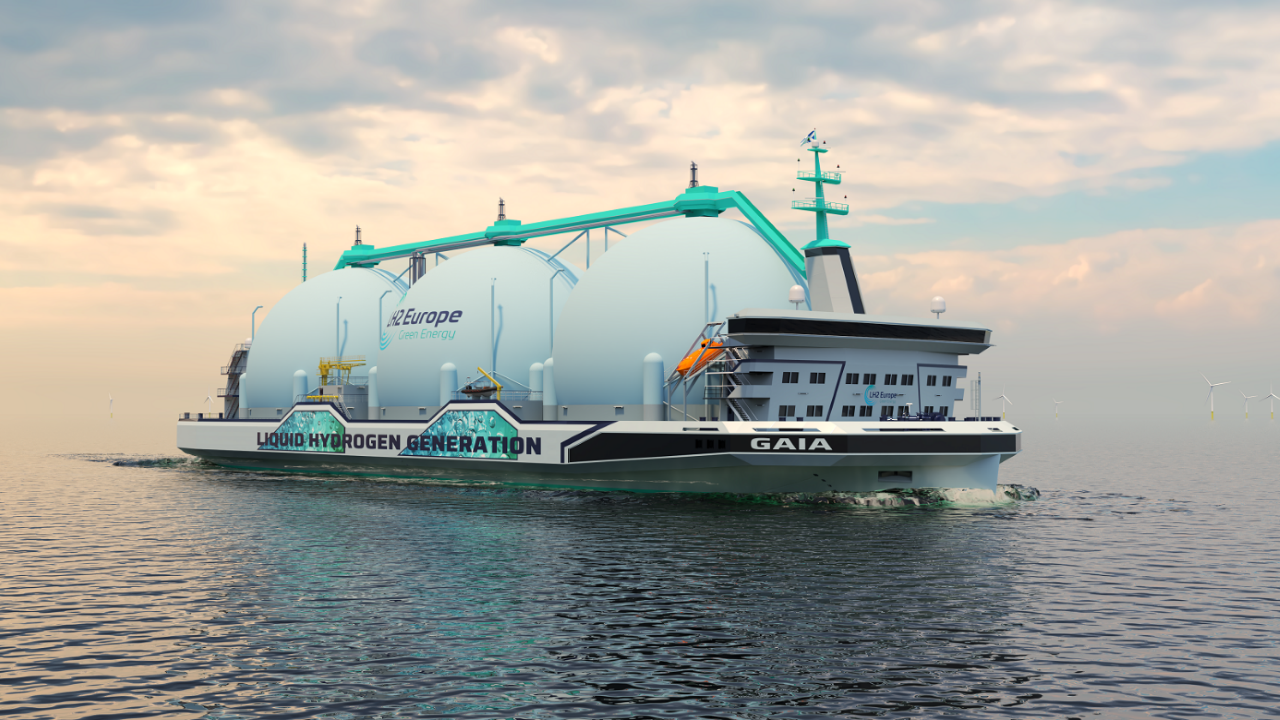
LH2 Europe will use the abundant renewable electricity in Scotland to produce green H2 and market it at a competitive price with diesel. The new tanker will transport the liquid H2 to terminals in Germany, with a strategic vision to expand supply to other markets as demand increases. “Hydrogen will be essential to the future of energy. It is up to us how quickly we can make that happen. LH2 Europe aims to have a full liquid hydrogen supply chain ready by 2027,” said Dr. Peter Wells, CEO of LH2 Europe. “We plan to initially deliver 100 tpd of green hydrogen and ramp up production to 300 tpd within three years, depending on demand.” “This tanker design is a key step in providing the infrastructure to make that clean energy future a reality. Current vessels in operation are not able to deliver hydrogen at the scale we expect will be required to meet the needs of the market,” he added. LH2 Europe in collaboration with C-Job Naval Architects developed an initial design for a liquid H2 tanker of 141 meters and a storage capacity of 37,500 m3. Job Volwater, CCO at C-Job, says: “Liquid hydrogen provides unique challenges in ship design and engineering. As a comparison, LNG tankers use ballast water to compensate the loss of weight following delivery to ensure enough draft. As liquid hydrogen is high in volume but 20 times lighter than LNG, this required a unique solution. We have created a trapezium-shaped hull design which creates enough deck space to fit the tanks without the need for ballast. “At C-Job, we have been researching alternative renewable fuels for many years and we are excited to work together with LH2 Europe to apply our knowledge and experience. Not only to realize a cleaner maritime industry but to support green energy across Europe.” The vessel is powered by H2 fuel cells and will be equipped with three liquid H2 storage tanks with total capacity of 37,500 m3, which is enough to refuel 400,000 medium-sized H2 cars or 20,000 heavy trucks. The tanks will have a much lower boil off than those currently used in the maritime industry. The limited remaining boil off will be captured and directly utilized in H2 fuel cells, providing power to the vessel's propulsion systems, resulting in emissions of water only. The vessel itself will have zero greenhouse gas emissions during operations. The ship is expected to be ready and commissioned six months before the first delivery of hydrogen in 2027.
|
|
| pageLayoutLeft | bp to invest up to £18 B in UK energy system by 2030 | 5/3/2022 12:31:06 PM | False | bp to invest up to £18 B in UK energy system by 2030 | bp intends to invest up to £18 B in the UK’s energy system by the end of 2030 to help the country to deliver on its ambitions to boost energy security and reach net zero. | bp intends to invest up to £18 B in the UK’s energy system by the end of 2030 to help the country to deliver on its ambitions to boost energy security and reach net zero. | bp intends to invest up to £18 B in the UK’s energy system by the end of 2030 to help the country to deliver on its ambitions to boost energy security and reach net zero. As one of the largest oil and gas producers in the UK, bp intends to continue investing in North Sea oil and gas, while driving down operational emissions. bp is also in action on a range of lower carbon energy investments in the UK, which are expected to bring jobs and develop new skills and capabilities. 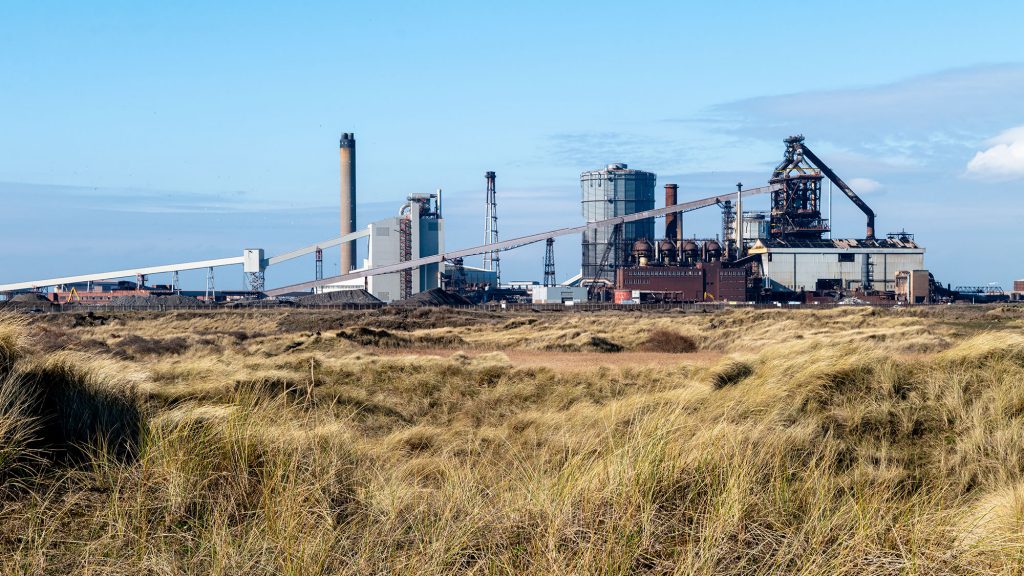
Bernard Looney, chief executive officer, bp said, “We’re backing Britain. It’s been our home for over 110 years, and we’ve been investing in North Sea oil and gas for more than 50 years. We’re fully committed to the UK’s energy transition – providing reliable home-grown energy and, at the same time, focusing on the drive to net zero. And we have ambitious plans to do more and to go faster. Our plans go beyond just infrastructure - they see us supporting the economy, skills development and job opportunities in the communities where we operate. We are all in.” These projected investment figures are in addition to bp’s significant operating spend in the UK. In 2019, prior to the pandemic, an estimated 0.5% of UK GDP was supported by bp’s activities. bp also anticipates paying up to £1 B in taxes for its 2022 North Sea profits, on top of around £0.25 B that it has paid annually in other taxes in the UK in recent years. The UK projects in which bp is looking to invest - and the wider activities supporting them - include: EV charging:
Hydrogen:
CCS:
Aberdeen:
Retail:
|
|
| pageLayoutLeft | New Zealand's first green H2 refueling site to begin construction | 5/3/2022 4:38:38 PM | False | New Zealand's first green H2 refueling site to begin construction | Construction of New Zealand’s first high-capacity green H2 refueling station starts in Palmerston North this week. | Construction of New Zealand’s first high-capacity green H2 refueling station starts in Palmerston North this week. | Construction of New Zealand’s first high-capacity green H2 refueling station starts in Palmerston North this week. The site, adjacent to Palmerston North Airport, is the first of four H2 refueling stations to be developed by innovative Kiwi energy companies Hiringa Energy and Waitomo Group. The partners are building New Zealand’s first nationwide H2 refueling network. Andrew Clennett, CEO of Hiringa Energy, said this is one of the first refueling networks for heavy transport in the world. Financial backing for the project has been provided through investment from Hiringa’s partners, Mitsui and Co (Asia-Pacific), Government funding from EECA and the COVID-19 Recovery Fund, and growth capital from key investors including Sir Stephen Tindall’s K One W One and international funders. Waitomo Group is self-funding its investment in the project because the kiwi business sees H2 as an important step in the transition to lower emission fuels. Waitomo Group Managing Director Jimmy Ormsby said breaking ground at the Palmerston North airport station marks a major milestone for the partnership. “What began as a discussion between two innovative, future-focused Kiwi companies about developing H2 on our existing and new Waitomo Fuel Stops, is now becoming a reality for future Kiwi generations,” Mr. Ormsby said. “Seeing this vision come to life is particularly poignant for me as the third-generation owner of Waitomo, given Waitomo celebrates its 75th anniversary this year. What a way to cement in the transition to a low-emissions fuel future for the fourth generation.” Mr Clennett said heavy transport makes up only 4% of New Zealand’s vehicles, but accounts for more than 25% of our total vehicle emissions. “Green H2 is the key technology that will allow these fleets to stay on the road. It is a mass-market, clean energy solution that can have a real impact on reducing our transport emissions,” Mr Clennett said. “Adding low-emission alternative fuel solutions to our network is a no-brainer. We want to leave a legacy for the next generation of Ormsby’s to continue in our footsteps. The exciting opportunities that green H2 technology offers allows us to deliver on that,” Mr Ormsby said. Specialist H2 equipment for the station has been sourced from Europe. The station will be built next to a Waitomo Group Fuel Stop, servicing petrol and diesel customers. Once operational, H2-powered heavy transport vehicles such as trucks and buses will be able to refuel at the station in similar time to what they are used to. Mr. Clennett said the Palmerston North station will help cement Manawatū’s position as a key logistics hub as transport companies looked for greener fuel alternatives. The partners have been grateful for the help of both the Central Economic Development Agency (CEDA) and the Palmerston City Council. The partners say another three H2 refueling stations are due to begin construction later this year, in Hamilton, Tauriko and Auckland, creating a network servicing more than 95% of New Zealand’s North Island heavy freight routes. More than NZ$50 MM has been invested in the first phase of the project and detailed engineering and compliance work has been completed. Resource consent has been granted for both the Palmerston North and Hamilton sites and applications are in for the Tauriko and Auckland sites. Expansion of the refueling network into the South Island will begin in 2023, with 24 high-capacity refueling stations due to come online across New Zealand in the next 4-5 years to support a growing fleet of H2-powered vehicles. An initial fleet of 20 zero-emission Hyzon H2-powered trucks to support the network has been purchased by TR Group. Built to meet New Zealand regulations and the demanding road conditions, the trucks will be capable of over 600km of range between refueling stops. Hyundai New Zealand is bringing five H2 fuel-cell Xcient heavy-duty trucks to New Zealand, with the second arriving soon. Both Hyzon and Hyundai have received support from EECA funding. |
|
| pageLayoutLeft | Bosch to develop components for H2 electrolysis | 5/4/2022 1:28:50 PM | False | Bosch to develop components for H2 electrolysis | Bosch will assign the development of electrolyzer components to the Mobility Solutions business sector, investing up to €500 MM in this venture by the end of the decade. | Bosch will assign the development of electrolyzer components to the Mobility Solutions business sector, investing up to €500 MM in this venture by the end of the decade. | Bosch is branching out into the development of components for electrolyzers, which use electrolysis to split water into H2 and oxygen. Ideally, the electricity for this purpose is generated from renewable sources such as wind or photovoltaic power, in which case the result is known as green H2. 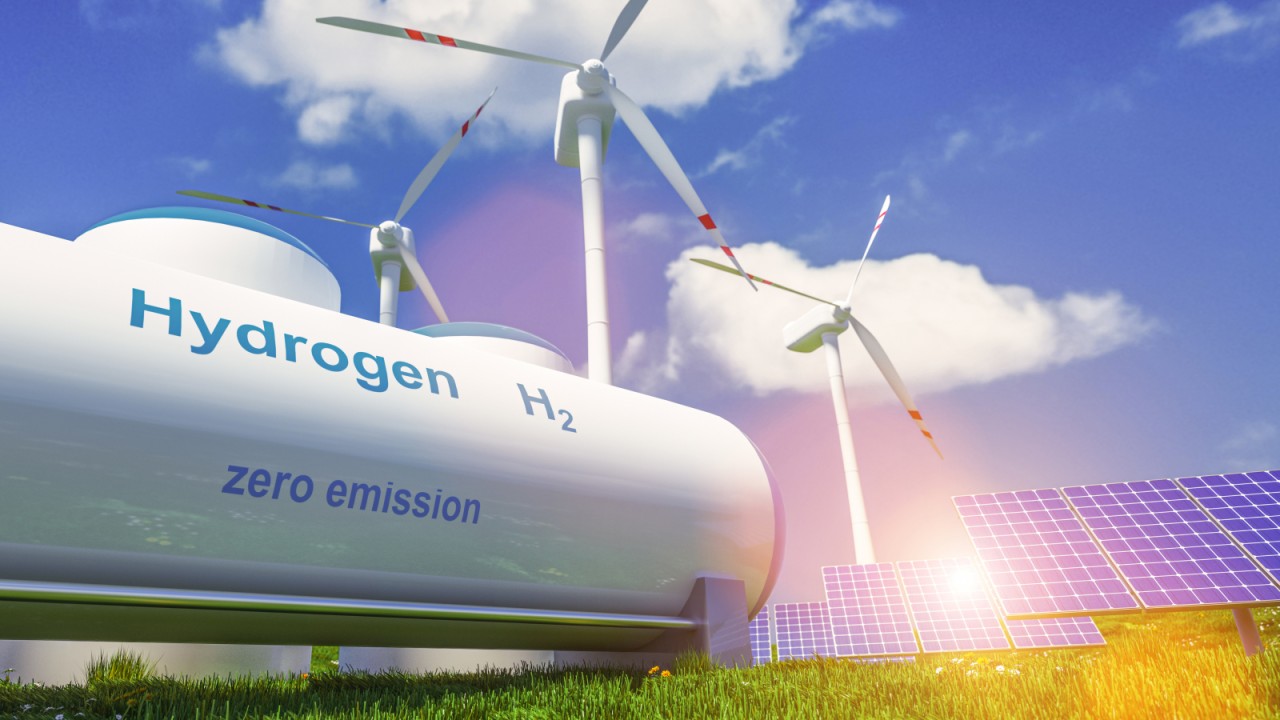
“We cannot afford to delay climate action any longer, so we aim to use Bosch technology to support the rapid expansion of H2 production in Europe,” said Dr. Stefan Hartung, chairman of the board of management of Robert Bosch GmbH, at the presentation of the company’s annual figure. Bosch will assign the development of electrolyzer components to the Mobility Solutions business sector, investing up to €500 MM in this venture by the end of the decade. Considering energy diversification, the move away from fossil fuels, and the need to reduce CO2 emissions, demand for green H2 is growing rapidly – not only in energy-intensive industries such as steel, chemicals, and heavy-duty freight, but also in private real estate. According to the EU, demand is set to rise to some 10 MMtpy by 2030. Bosch forecasts that the global market for electrolyzer components will increase to a volume of around €14 B over the same period, with Europe set to see the highest rates of growth. To help business and society reduce dependency on fossil fuels and harness new forms of energy, Bosch intends to invest some €3 B in climate-neutral technology, such as electrification and H2, over the next three years. Bosch is to develop the stack – the core component of an electrolyzer As in the fuel cell, the key component of an electrolyzer is a stack, which comprises several hundred individual cells connected in series. In each of these cells, electricity is used to split water into H2 and oxygen. This is the reverse of what takes place in a fuel cell, where electricity is generated by combining H2 and oxygen. In both cases, the chemical reaction is facilitated by means of a proton-exchange membrane (PEM). Bosch is collaborating with several partners to develop a way of combining the electrolyzer stack with a control unit, power electronics, and various sensors to create a “smart module”. With pilot plants scheduled to commence operation in the coming year, the company plans to supply these smart modules to manufacturers of electrolysis plants and industrial service providers from 2025 onward. Using a simple process, Bosch will incorporate a number of these compact modules. They can then be used both in smaller units with capacity of up to ten megawatts and in gigawatt-rated onshore and offshore plants – whether in new-build projects or in existing plants for conversion to the production of green H2. To maximize the efficiency of H2 production and extend the service life of the stack, the smart modules are to be connected to the Bosch cloud. At the same time, the use of a modular design for the electrolyzers is expected to make maintenance more flexible: any scheduled work will require the shutdown of certain sections of the plant only, instead of the entire facility. Bosch is also working on service concepts that will include the recycling of components in order to promote a circular economy. Bosch can use its strengths in mass production and economies of scale Unlike many of the electrolyzer components currently on the market, the Bosch smart modules will be mass produced. As such, the manufacturing operation will generate economies of scale. “Two key factors are involved in ramping up H2 production: speed and cost,” Heyn said. “This is where we can play to our strengths, thanks to our expertise in mass production and our automotive know-how.” Bosch is now planning to start volume production as quickly as possible at several European locations. These include Bamberg and Feuerbach (Germany), Tilburg (Netherlands), Linz (Austria), and České Budějovice (Czech Republic). Bosch portfolio expansion will safeguard jobs The ongoing transformation of the automotive sector presents a huge challenge for the industry. As ever, Bosch’s response here is to innovate. In entering a new field of business – one that will add a nonautomotive wing to its mobility solutions business – the company is seizing the opportunity to further safeguard employment. In the coming years, this expansion into electrolyzer components is expected to create work for hundreds of associates. “In fact, we’re doing three things at once,” Heyn said. “We’re making an important contribution ecologically, economically, and socially.” Bosch is working on mobile and stationary fuel cells Bosch firmly believes in H2 as a future fuel and is also working on both stationary and mobile fuel cells. One intended use for the former is as small, on-site power plants for cities, data centers, shopping malls, business parks, and as charge spots for electric vehicles. Bosch plans to use mobile fuel cells to facilitate the climate-neutral shipping of goods and commodities, initially by truck. The company’s portfolio of vehicle-related products in this field ranges from individual sensors to core components such as the electric air compressor, the stack, and complete fuel-cell modules. Production is expected to start this year. |
|
| pageLayoutLeft | EverWind Fuels selects Nel to participate in the FEED study for the Point Tupper project | 5/4/2022 1:40:29 PM | False | EverWind Fuels selects Nel to participate in the FEED study for the Point Tupper project | EverWind Fuels has announced that it has acquired the NuStar storage terminal in Point Tupper, Nova Scotia. | EverWind Fuels has announced that it has acquired the NuStar storage terminal in Point Tupper, Nova Scotia. | EverWind Fuels, a private developer of green H2 and ammonia production, storage facilities and transportation assets, has announced that it has acquired the NuStar storage terminal in Point Tupper, Nova Scotia. EverWind intends to expand and develop the Point Tupper site to be the location of a regional green H2 hub for Eastern Canada, including new green H2 and ammonia production facilities. These facilities will create new clean energy jobs, help support Nova Scotia’s carbon emissions reduction targets, and establish Nova Scotia as a global leader in the production of green H2 for domestic and export markets. “As part of the clean energy transition, we are proud to invest in Nova Scotia and support the province in unlocking the immense opportunity presented by green H2,” said Trent Vichie, CEO of EverWind Fuels. “The development of green H2 is an essential tool in the fight against climate change. Expansion of the Point Tupper site will support significant economic development in the region that can attract billions of dollars in new investment, create new jobs, and help make Nova Scotia and Canada global leaders in this exciting industry.” As an alternative fuel, green H2 produced at the site is expected to help provide a green fuel for Nova Scotia and support carbon emissions reduction by over 1 MMtpy by 2025. By 2030, the project could reduce domestic and international carbon emissions by more than 4 MMtpy through the production of green H2. The Point Tupper site is ideally positioned to produce green H2 as early as 2025, supported by significant existing in-place infrastructure. Point Tupper has an existing ice-free, deep-water port with 27-meter depth and two berths which can accommodate the largest vessels in the world. The port is the deepest in Nova Scotia and the surrounding region. In addition, the Point Tupper site has existing rail loading facilities and is adjacent to pipeline networks to support domestic and regional markets. Electricity transmission is available at the site as well as 7.7 MM barrels of liquids storage and abundant freshwater, which is adjacent to the site. The site is operated by a highly qualified, 70-person team trained to protect the surrounding environment and deliver safe operations. In addition, EverWind has engaged a world-class group of partners to support development of the initial phases of the project, including:
|
|
| pageLayoutLeft | Air Products to supply first Rotterdam green H2 filling station for trucks | 5/4/2022 2:36:32 PM | False | Air Products to supply first Rotterdam green H2 filling station for trucks | Air Products, Schenk Tanktransport and TNO are collaborating on an endeavor which will develop H2 trucks and a public H2 refueling station. | Air Products, Schenk Tanktransport and TNO are collaborating on an endeavor which will develop H2 trucks and a public H2 refueling station. | Air Products, Schenk Tanktransport and TNO are collaborating on the Clean H2 and Road Transport Project (CH2aRT), an endeavor which will develop H2 trucks and a public H2 refueling station. The project focuses on H2 in heavy-duty road transport and is subsidized by the DKTI transport scheme of the Dutch Ministry of Infrastructure and Water Management. 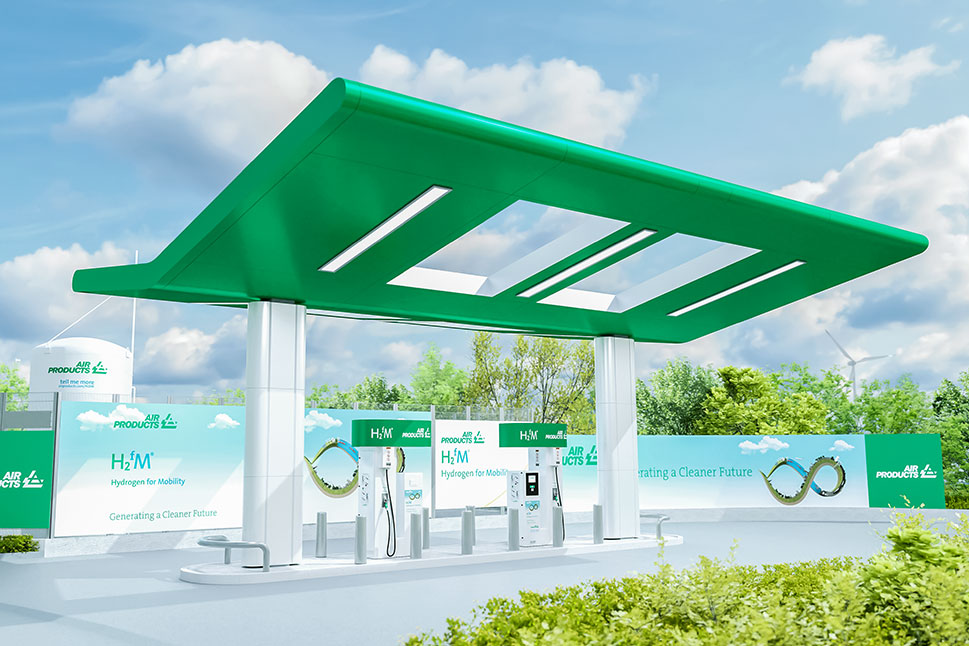
This project is in cooperation with the Port of Rotterdam to create the largest H2 refueling station in The Netherlands, initially supplying three zero-emission trucks from Air Products, Schenk Tanktransport and other early H2 adopters in the Rotterdam port area. Air Products will supply and operate the refueling station in the Botlek area and supply green H2 in an efficient and safe manner, while Schenk Tanktransport will use the trucks for its daily logistics operations. TNO will monitor the entire project and use the insights obtained for the further development and application of H2 in heavy-duty road transport. The allocated DKTI transport subsidy is meant to support projects for sustainable transport. The grant was created to accelerate these sustainable innovations in the transport sector. The project also contributes to the ambitions of HyTrucks, an international consortium of various parties, which aims to deploy H2 in heavy road transport on a large scale by 2025 with 1,000 H2-powered trucks in the triangle of Rotterdam, North Rhine-Westphalia and Antwerp. The parties, working under a memorandum of understanding, include not only Air Products but also port companies, transport companies, fuel station operators and truck manufacturers, among others. Kurt Lefevere, Vice-President Benelux, Germany and France at Air Products said, “This partnership is very positive for Air Products as it offers the possibility, as the world's largest producer of H2, to contribute even more to the necessary deployment of H2 in heavy-duty road transport. It is expected that H2 will help meet society's need to make transport more sustainable, based on zero or low carbon dioxide (CO2) emissions. The choice of H2 for heavy duty vehicles, compared with other technologies, allows for faster refueling, a greater vehicle range and the transport of heavier loads. The subsidy is evidence of the commitment locally and provides even further momentum to move forward. Our technology has been used in over 250 projects around the world. In addition, Air Products has decades of expertise and experience in H2 production, equipment, logistics and services.'' Boudewijn Siemons, COO Port of Rotterdam said, "All modes of transport, from shipping to road transport, must be CO2 neutral by 2050. H2 is a clean, viable alternative to diesel for freight transport. But then, of course, there must be refueling stations. I am delighted that Air Products is taking the lead in this respect by commissioning the first H2 filling station for trucks in Rotterdam within two years." Harry Schenk, Co-CEO Schenk Tanktransport said, "For Schenk Tanktransport, this collaboration is fully in line with the partnership with Air Products and gives substance to our aim to be a frontrunner as a sustainable and innovative logistics service provider. Schenk Tanktransport has been focusing on reducing CO2 emissions for years and its fleet now consists of an increasing number of trucks running on (BIO) LNG. For us, H2 as a fuel is the next logical step in making our company and our environment more sustainable and future-proof." Martijn Stamm, Director Market TNO Traffic & Transport said, "TNO's mission is to contribute to the achievement of the zero emission targets by accelerating solutions for sustainable powertrains. Trucks based on H2 fuel cells are one of the ways to achieve 100% reduction. TNO has many years of experience in monitoring and analyzing the reliability, maintenance and consumption of trucks under various conditions. In addition to this technical analysis, TNO also looks at driver acceptance and satisfaction, and analyses the opportunities, barriers and scenarios for scaling up in practice.” |
|
| pageLayoutLeft | Hyundai Motor, Advent Technologies to collaborate on high-temperature fuel cells | 5/5/2022 10:02:10 AM | False | Hyundai Motor, Advent Technologies to collaborate on high-temperature fuel cells | Advent Technologies announced a collaboration with Hyundai Motor Company to assess applications of Advent’s proprietary technology in supplying Hyundai’s high-temperature fuel cell needs. | Advent Technologies announced a collaboration with Hyundai Motor Company to assess applications of Advent’s proprietary technology in supplying Hyundai’s high-temperature fuel cell needs. | Advent Technologies announced a collaboration with Hyundai Motor Company, under which Advent and Hyundai will work together to assess applications of Advent’s proprietary technology in supplying Hyundai’s high-temperature fuel cell needs. 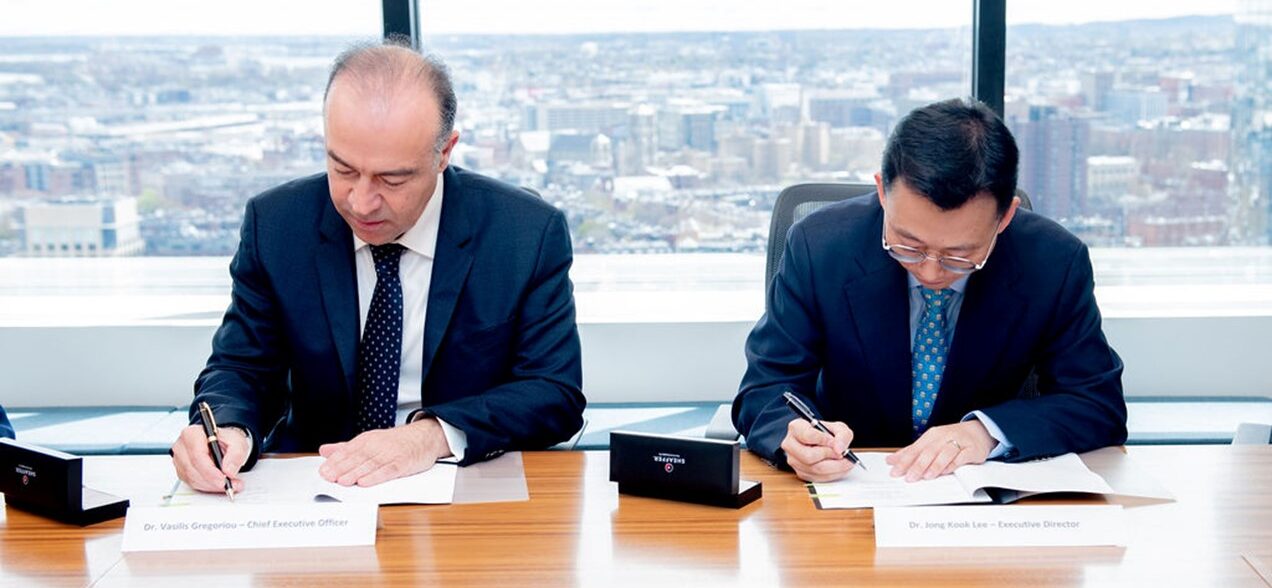
Dr. Vasilis Gregoriou, Advent’s Chairman and Chief Executive Officer (left), and Dr. Jong Kook Lee, Hyundai’s Executive Director (right), during the signing ceremony in Advent’s Headquarters in Boston
More specifically, Hyundai’s Executive Director, Dr. Jong Kook Lee, traveled to Advent’s headquarters to participate in an in-person ceremonial signing of the agreement with Advent’s Chairman and Chief Executive Officer, Dr. Vasilis Gregoriou. This ceremonial signing marked the first such event in which Advent has partaken with Hyundai. Dr. Vasilis Gregoriou, Advent’s Chairman and Chief Executive Officer said, “We are excited to work with Hyundai as they pursue a decarbonization strategy involving high-temperature fuel cells. Bringing green energy solutions to carbon-intensive applications is imperative for achieving climate goals, a fact that both Advent and Hyundai understand. We recognize the importance of this agreement by choosing to begin this cooperative relationship with an in-person, ceremonial signing ritual and underscore the close relationship that the companies plan to share over the course of the agreement, with the goal of advancing high-temperature fuel cell development.” 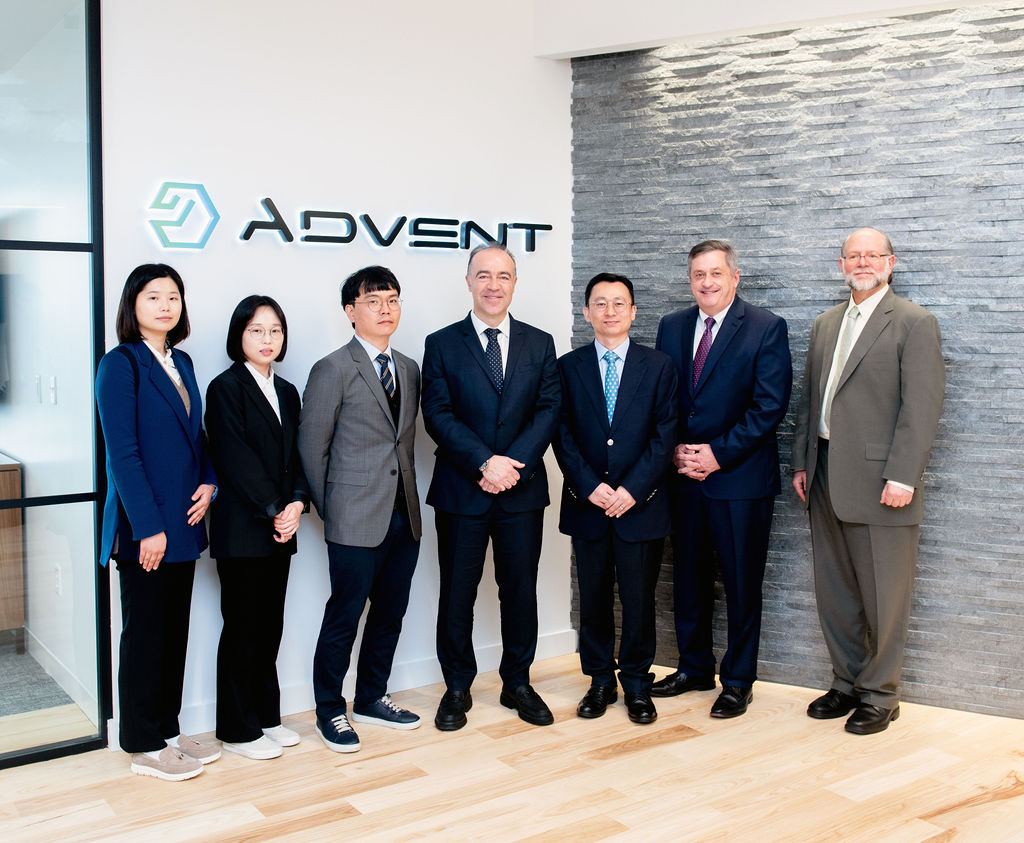
Dr. Jong Kook Lee, Hyundai’s Executive Director said, “Hyundai is delighted to take these steps with Advent to develop best in class high-temperature fuel cells. We look forward to working with Advent through this testing and development phase in the hope that it will unlock a key step for more widespread adoption of fuel cell technology in high-temperature applications. With this agreement, Hyundai takes an important step forward with a new partner and leader in the HT-PEM space.” |
|
| pageLayoutLeft | Clean Port & Logistics, HHLA create cluster to test H2-powered equipment | 5/5/2022 11:10:52 AM | False | Clean Port & Logistics, HHLA create cluster to test H2-powered equipment | Clean Port & Logistics (CPL) and Hamburger Hafen und Logistik AG (HHLA) have created a cluster to test H2-powered port logistics equipment. | Clean Port & Logistics (CPL) and Hamburger Hafen und Logistik AG (HHLA) have created a cluster to test H2-powered port logistics equipment. | Clean Port & Logistics (CPL) and Hamburger Hafen und Logistik AG (HHLA) have created a cluster to test H2-powered port logistics equipment. The collaboration is to drive forward the decarbonization of handling and transport processes. 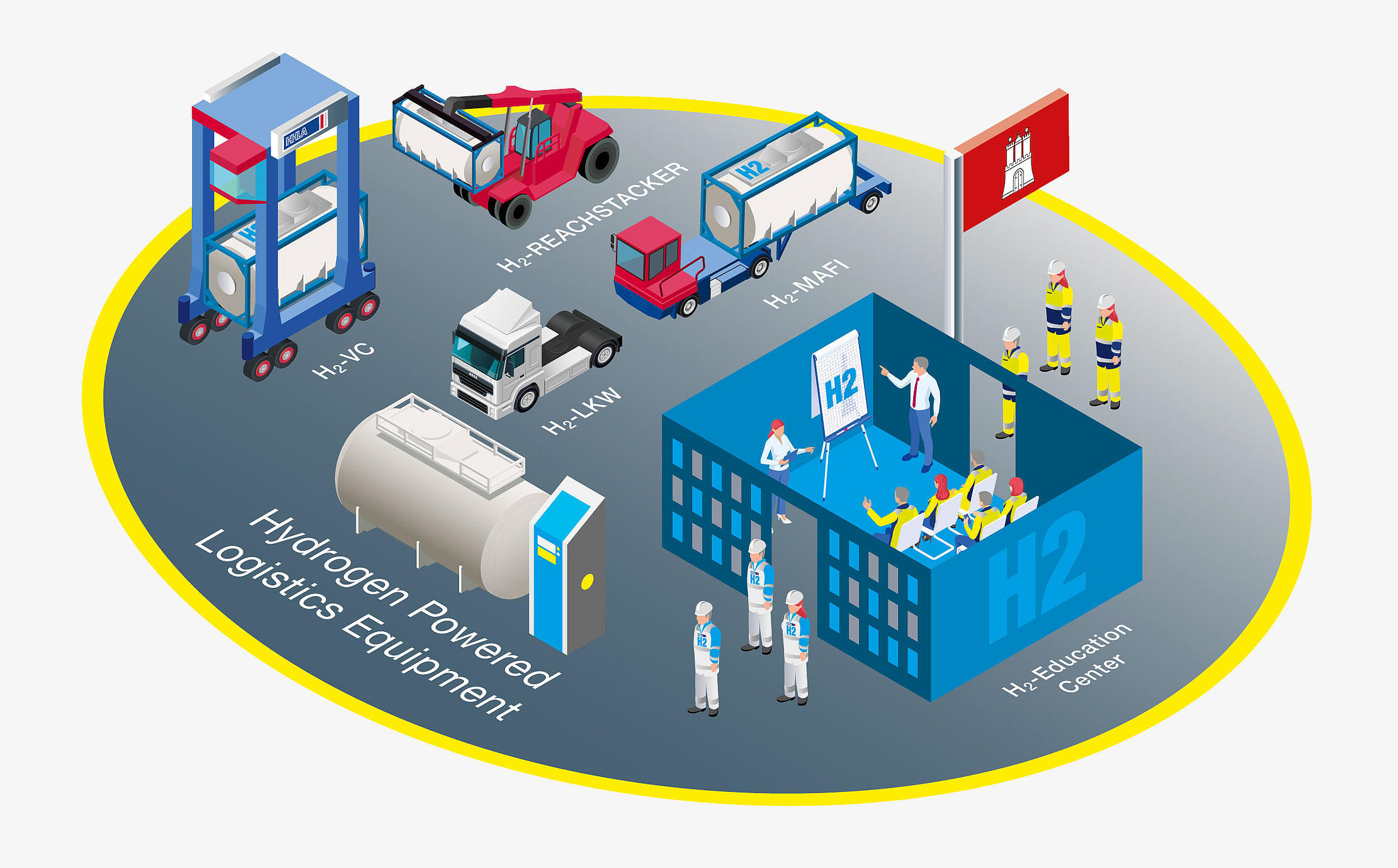
This will support and accelerate both the achievement of market maturity and the integration into regular port operations. To reduce emissions in port handling and the associated logistics chains, the innovation cluster has the support of the Federal Ministry of Transport and Digital Infrastructure – with HHLA in charge of managing the cluster. CPL brings together equipment manufacturers as well as port and logistics companies with academic partners, producers of renewable H2, software companies and operators and manufacturers of storage tank locations. The parties cooperate nationwide to conduct research and practical tests into how H2 can be used in a reliable way to supply power to port technology and port logistics. The cluster carries out simulations and investigations and develops training concepts for this purpose. At the core of activities will be a test center for H2-powered equipment at the HHLA Container Terminal Tollerort in Hamburg. The cluster will be sponsored by the Federal Ministry of Transport and Digital Infrastructure as part of a national innovation program for H2 and fuel cell technology. The funding guidelines will be coordinated by NOW GmbH and implemented by Projektträger Jülich. Angela Titzrath, Chairwoman of HHLA’s Executive Board said, “Port handling and heavy goods logistics will make their contribution to climate protection and improving the quality of life in urban areas. The key element here is the decarbonization of logistics. That can also be achieved with the help of hydrogen as the operating energy. This is why I am delighted to be launching a cluster alongside committed partners to test this promising new energy source. CPL will provide an additional boost to the transformation process." The cluster will enable cooperation across sites and support many ports in their efforts for more climate protection. Michael Westhagemann, Hamburg Minister for Economic and Labour Affairs said, the importance of the cluster for Hamburg in an exemplary manner: “The port is a focus area of our hydrogen strategy, which also includes the application of hydrogen, particularly in intralogistics, as an important pillar. HHLA will gain valuable, cross-disciplinary experience from the project on how the fuel of the future can make a concrete contribution toward reaching Hamburg’s climate targets.” Johannes Daum, Managing Director for hydrogen, alternative fuels and batteries at coordinating company NOW GmbH said, “NOW looks forward to accompanying the CPL innovation cluster as part of the e4ports network. Through our network activities, we are already aware of the urgent need for action at ports concerning the energy transition, but we also know the commitment port companies have for pursuing this goal. With CPL, we will bring the concrete application of hydrogen in port logistics to a new level.” As part of CPL, HHLA has already agreed the first MoU for the delivery of H2-powered empty container handlers and terminal tractors with Hyster Yale Group, Inc. The units will be powered by Nuvera fuel cells. The delivery of the terminal tractor is planned for the end of 2022, followed by the empty container handler in early 2023. |
|
| pageLayoutLeft | Deutsche Bahn and Siemens Mobility present new H2 train, storage tank trailer | 5/5/2022 12:42:58 PM | False | Deutsche Bahn and Siemens Mobility present new H2 train, storage tank trailer | Deutsche Bahn and Siemens Mobility developed a next-generation H2-powered train, and a newly designed mobile H2 storage trailer. | Deutsche Bahn and Siemens Mobility developed a next-generation H2-powered train, and a newly designed mobile H2 storage trailer. | Deutsche Bahn (DB) and Siemens Mobility are continuing to drive the climate-friendly transportation transition in rail. The two partners premiered elements of their innovative complete system at the Siemens plant in Krefeld: The newly developed Mireo Plus H, the next-generation H2-powered train, and a newly designed mobile H2 storage trailer. The train and its new infrastructure are intended to replace diesel multiple-unit trains in commuter and regional transport and reduce rail-related CO2 emissions to zero. 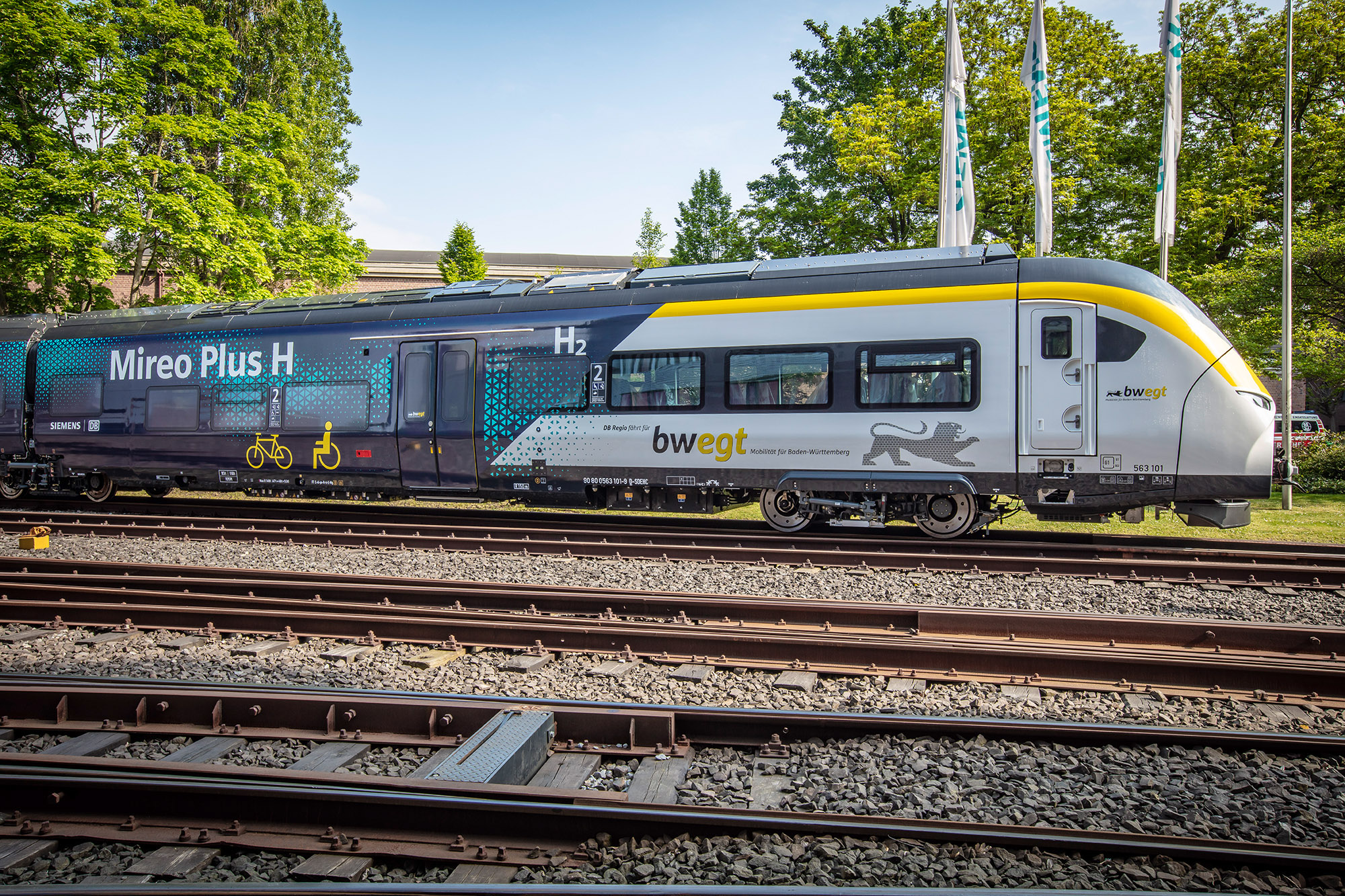
The H2goesRail project is being funded as part of the National Innovation Program for Hydrogen and Fuel Cell Technology (NOW GmbH) with €13.74 MM by the Federal Ministry for Digital and Transport (BMDV). The funding guideline is coordinated by NOW GmbH and implemented by project lead Jülich. “In its coalition agreement, the federal government agreed to electrify 75% of the country’s rail network by 2030,” said Michael Theurer, Parliamentary State Secretary in the BMDV. “Here, alternative drives can help reduce emissions from diesel rail transport. This way, we’ll be able to operate virtually climate-neutral on rail routes where full electrification is not possible. The H2goesRail project will not only test the use of hydrogen for rail, but substantially advance the technology.” “Only with a strong rail system and alternative types of drives will we be able to make a significant contribution to the fight against climate change. The Mireo Plus H enables climate-friendly and emission-free passenger transport,” said Michael Peter, CEO of Siemens Mobility. “With the Mireo Plus H, we’ve developed the next generation of hydrogen-powered trains that offers a particularly long operating range and faster acceleration. Each delivered train can save up to 45,000 tons of CO2 over its service life of 30 years compared to corresponding travel with cars.” “For Deutsche Bahn, hydrogen trains are an important component on our way to achieving climate neutrality,” said Dr. Daniela Gerd tom Markotten, Member of the Management Board for Digitalization and Technology at Deutsche Bahn. “With our development of the mobile hydrogen filling station and the related maintenance infrastructure, we are showing that we not only can-do mobility, but technology as well. And exactly that is what is needed for providing the climate-friendly transport of tomorrow. Together with Siemens and the newly developed hydrogen train, we are creating an overall system which will take us another step towards phasing out diesel and enable the greening of the fleet.” As a two-car train, the Mireo Plus H for the H2goesRail project has an operating range of up to 800 kilometers, is as powerful as its electric multiple-unit counterpart, has 1.7 MW of traction power providing up to 1.1 m/s2 acceleration, and a top speed of 160 kilometers per hour. A three-car version has a range of up to 1,000 kilometers. One key element needed to make H2 technology competitive with diesel fuel in daily operation is a fast-refueling process. To provide this, DB has developed a new method that, for the first time, enables a H2 train to be refueled as fast as a diesel-powered train. This is an especially important factor considering the closely timed scheduling of DB’s regional passenger service. The fast refueling of hydrogen trains will make the technology competitive in daily operations. H2 trains have a particularly climate-friendly drive technology, since it operates emission-free with green H2 and emits only water vapor. In the H2goesRail project, for example, the H2 train will save around 330 tons of CO2 in one year on the Tübingen-Pforzheim route, compared to a diesel-powered train. In general, the Mireo Plus H can save 520 tpy depending on the route profile (calculated on mileage of 200,000 kilometers). The H2 will be produced in Tübingen by DB using green electricity taken directly from the overhead power line. To service the train, the DB maintenance depot in Ulm will be equipped accordingly. The Mireo Plus H will start testing in Baden-Württemberg in 2023. During its planned passenger service in 2024, the H2 train for the H2goesRail project with Deutsche Bahn will provide regular passenger service between Tübingen, Horb and Pforzheim and replace a diesel train. Siemens Mobility and Deutsche Bahn will also be showcasing the H2goesRail project and the Mireo Plus H at the InnoTrans 2022, the world’s largest trade fair for railway technology, being held in Berlin. Project details: H2 propulsion Mireo Plus H Filling station Rapid refueling Maintenance Passenger operations |
|
| pageLayoutLeft | Sponsored Content: Burckhardt Compression: Groundbreaking for the construction of a H2 test facility in Winterthur | 5/5/2022 1:27:07 PM | False | Sponsored Content: Burckhardt Compression: Groundbreaking for the construction of a H2 test facility in Winterthur | Burckhardt Compression laid the groundbreaking in Winterthur for the construction of a H2 test facility. | Burckhardt Compression laid the groundbreaking in Winterthur for the construction of a H2 test facility. | Burckhardt Compression laid the groundbreaking in Winterthur for the construction of a H2 test facility. It will serve the further development of sealing technologies and solutions for H2 refueling stations for heavy-duty vehicles. 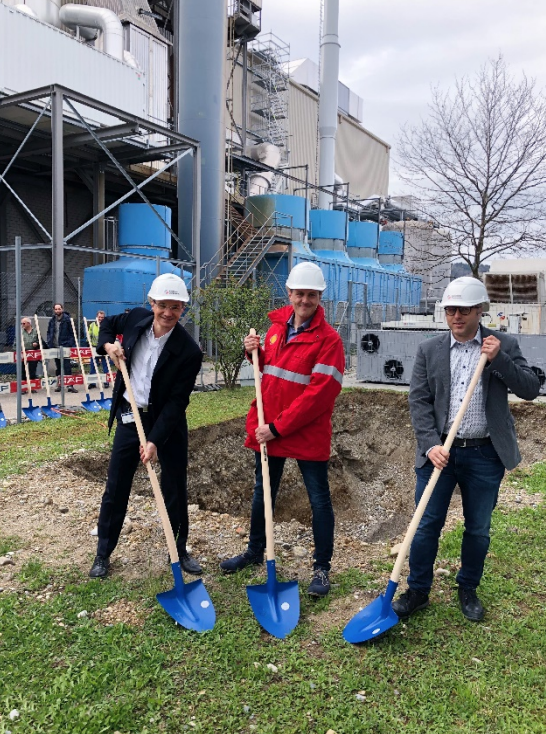
Fabrice Billard, CEO Burckhardt Compression, Guido Kluth, Machinery Systems Manager Hydrogen Mobility Shell New Energies, Markus Vogt, Engineer, Engineering Office K. Vogt AG
Burckhardt Compression is one of the finalists selected by Shell New Energies as a partner for the development of oil-free high-pressure H2 compressors. Burckhardt Compression’s solutions for export and refueling applications will enable the compression of H2 gas up to 900 bar (as a booster) using non-lubricated compressors. “Hydrogen is an energy carrier with considerable potential, especially for heavy-duty applications,” said Fabrice Billard, CEO Burckhardt Compression. “We are pleased to continue researching these technologies together with Shell New Energies in order to contribute to the energy transition and the reduction of CO2 emissions. Our teams, together with Shell New Energies, have successfully completed the first technical milestones of the project and this new facility will allow us to test and optimize the new compressors before launch.” The test facility is expected to be operational by the end of 2022/early 2023, with testing to be completed by the end of the same year. |
|
| pageLayoutLeft | ScottishPower and Storegga form green H2 partnership | 5/6/2022 9:56:51 AM | False | ScottishPower and Storegga form green H2 partnership | ScottishPower and Storegga announced plans to build a series of green H2 projects in the Highlands. | ScottishPower and Storegga announced plans to build a series of green H2 projects in the Highlands. | ScottishPower and Storegga announced plans to build a series of green H2 projects in the Highlands. The initial project phases will be focused on the Cromarty Firth region (north of Inverness) and will provide green industrial heat across the region for a range of customers including distilleries and transportation sectors. The projects are expected to deliver hundreds of MW of green H2 production capacity before end of the decade, with plans for the first project to be operating by 2024. ScottishPower and Storegga have formed a partnership to develop, build and operate green H2 production plants across Scotland – with the potential to transform industry and transportation in the Highland region. The first project to be progressed will be the Cromarty Hydrogen Project, located just north of Inverness. The project is designed to deliver up to 20 tpd of green H2 from 2024 and has, subject to customer demand, the potential to scale to 300MW in a series of modular expansion phases. It will displace existing fossil fuel sources and enable the supply of green H2 into the heating processes of distilleries, with additional potential application to other local manufacturing, food production, and industrial heating applications. The Cromarty Hydrogen Project follows a successful feasibility study by ScottishPower and Storegga, undertaken in collaboration with major distillers Diageo, Glenmorangie, and Whyte & Mackay – all of which have operations in the Cromarty region. As part of meeting ambitious carbon reduction targets set by one of Scotland’s most valuable exporting sectors, the use of green H2 will decarbonize production processes, helping make Scotland’s national drink greener. Discussions on similar projects for other customers and industries are also underway. Green H2 has clear benefits in terms of security of energy supply. As well as accelerating the potential for cleaner industrial heating processes, green H2 is poised to transform the heavy transport sector across the country, with clean fuel potentially powering vehicles such as refuse collection trucks, buses, and HGVs. Green H2 is also a suitable alternative clean fuel for rail, air and shipping. Barry Carruthers, Hydrogen Director at ScottishPower said, “This is a really exciting milestone in our ambitions to support the growth of green hydrogen production across the country and the decarbonization of heavy industry. We can now get to work on turning plans on paper into tangible and deliverable projects that will transform industry in the Highlands – making a long and lasting difference for people, businesses and communities.” Andrew Brown, Head of Hydrogen at Storegga said, “The Cromarty Green Hydrogen Project is expected to be the UK’s largest green hydrogen facility when it commences operations in 2024 and is expected to rapidly expand thereafter. Storegga has been working with the distilling sector on the energy transition since 2014. In 2019, the Scotch Whisky Association’s Pathway to Net Zero report identified that hydrogen would play a key role in enabling Net Zero for the distilling sector. Phase 1 of the Cromarty Hydrogen Project is expected to be the first of many as we develop a broader green hydrogen manufacturing capacity in Scotland this decade. Storegga is proud to be working with ScottishPower and the distillers on this groundbreaking project.” |
|
| pageLayoutLeft | Study suggests solar energy can be cleanly converted into H2 | 5/6/2022 10:26:58 AM | False | Study suggests solar energy can be cleanly converted into H2 | Research led by the University of Strathclyde suggests that solar energy can be accessed and converted into H2. | Research led by the University of Strathclyde suggests that solar energy can be accessed and converted into H2. | Research led by the University of Strathclyde suggests that solar energy can be accessed and converted into H2. 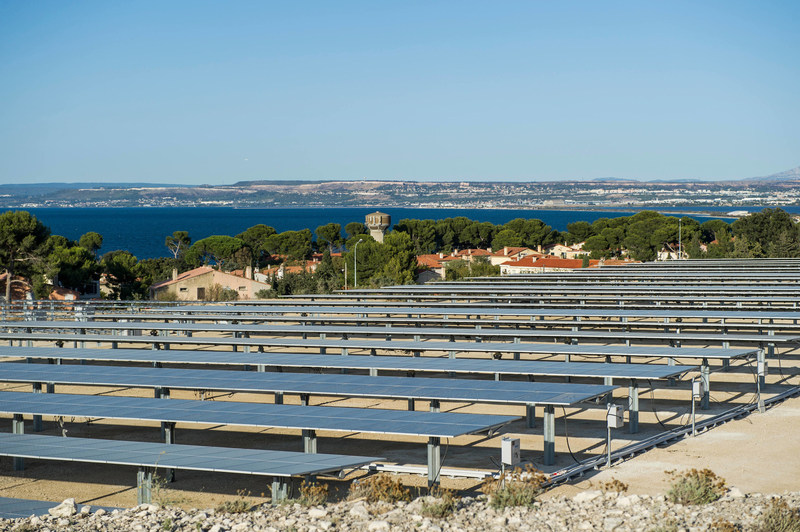
Greenhouse gas (GHG) emission need to be significantly reduced to avoid potentially catastrophic effects of climate change, with access to clean and affordable energy needed to eliminate our reliance on fossil fuels. The UK Government plans to replace fossil fuels using H2, a storable fuel. Green H2 Most H2 is still made from natural gas, producing GHGs and green H2 production is urgently needed. Green H2 is produced from water using a photocatalyst – a material which drives the decomposition of water into H2 and oxygen using sunlight. The study, ‘Photocatalytic overall water splitting under visible light enabled by a particulate conjugated polymer loaded with iridium’ is published in Angewandte Chemie, a journal of the German Chemical Society. It suggests that using a photocatalyst under simulated sun light facilitates the decomposition of water when loaded with an appropriate metal catalyst - in this case iridium. When used in a fuel cell, H2 does not emit any GHGs at the point of use and can help decarbonize sectors such as shipping and transportation, where it can be used as a fuel, as well as in manufacturing industries. Solar energy “An abundant renewable energy resource to address the challenge of sustainable energy exists in the form of the Sun, with the energy reaching Earth's surface eight thousand times greater than the entire annual global energy need of our societies,” said Principal Investigator, Dr Sebastian Sprick, from Strathclyde. “The reported photocatalyst can access solar energy through energetically unfavorable processes to generate a storable energy carrier in the form of hydrogen from water. The hydrogen then can be converted cleanly into electricity in a fuel cell with water being the only side-product. “This study provides a way forward to optimize further as it is not sacrificial. The photocatalysts (polymers) are of huge interest as their properties can be tuned using synthetic approaches, allowing for simple and systematic optimization of the structure in the future and to optimize activity further.” Researchers say another potential advantage is that polymers are printable, allowing the use of cost-effective printing technologies for scale up - just like newspaper printing. Dr. Sprick said, “This will also be important to produce hydrogen at scale to address climate change effectively.” |
|
| pageLayoutLeft | ZeroAvia to expand U.S. base to test new components for H2-electric powertrains | 5/6/2022 10:53:16 AM | False | ZeroAvia to expand U.S. base to test new components for H2-electric powertrains | ZeroAvia has received its second twin-engine 19-seat Dornier 228 aircraft at its headquarters in Hollister, California. | ZeroAvia has received its second twin-engine 19-seat Dornier 228 aircraft at its headquarters in Hollister, California. | ZeroAvia has received its second twin-engine 19-seat Dornier 228 aircraft at its headquarters in Hollister, California. The new U.S. initiative will take the system developed in the UK HyFlyer II project and integrate it into the same type of aircraft. It will serve as the basis for testing new components and integrations, as well as a testbed for working with the FAA ahead of the ZA600 engine's planned certification in 2024. The company will test new components and integrations under an FAA certificate ahead of the ZA600 engine's planned certification in 2024. 
The company will expand its U.S. base to test new components for the ZA600 H2-electric powertrains. With certification of the ZA600 planned for 2024, ZeroAvia’s second Dornier 228 aircraft to be retrofitted and tested in the coming months. The U.S. based aircraft will also be utilized to showcase several use cases for the company’s powertrains, including passenger, cargo, and industrial applications Val Miftakhov, CEO and founder of ZeroAvia said, “This new project in California will allow us to use architectures from our Hyflyer II initiative, where we are working with the same aircraft, and apply those lessons as we further test and demonstrate the system across a number of different use cases. Ultimately, this will help us optimize our zero-emission powertrain design ahead of certification. This year we will have two demonstration aircraft flying on two continents powered by our hydrogen-electric powertrains which will further help us secure partner and customer commitments across the worldwide aviation industry.” ZeroAvia will work towards a hybrid engine configuration that incorporates both the company's H2-electric powertrain and a conventional engine into the aircraft. The conversion is expected to take approximately 3-4 months to prepare the aircraft for test flights. After the engine is configured, it will enter the flight testing and demonstration program, spanning passenger, cargo, and industrial use cases with several to-be-announced partners. In addition to the launch of this program, ZeroAvia will be expanding its facility at Hollister to ensure adequate staff and resources to reach planned milestones. The company has added a new 15,000 square foot hangar to its footprint at the airfield, enabling space for conducting engineering work on the aircraft and its HyperTruck test bed platform, as well as ample office space to support its growing operations. Renee Wells, Executive Director of the Economic Development Corporation of San Benito County said, “There is huge potential for Hollister Municipal Airport to become a hydrogen hub. There will be significant demand and since California leads the world in adopting zero-emission vehicles, zero-emission flight infrastructure is the next natural frontier. ZeroAvia’s technology is an economically viable solution, and the EDC is thrilled to support them as they become the first TTF business development at the Airport, bring 50+ new jobs by year-end, and put Hollister on the map for innovative technology.” Last fall, ZeroAvia conducted the first program ground test of its HyFlyer II program and successfully tested the flight-intent 600kW powertrain with its 15-ton HyperTruck mobile ground testing platform. The HyperTruck, developed based on heavy-duty military trucks, is sized to also support testing the company’s larger planned powertrain (ZA-2000, with shaft power over 1.8 megawatt) which can be used to test systems for 40-80 seat aircraft. The HyFlyer II Project is co-funded by a £12.3 MM ($16.3 MM) grant through the UK Government’s ATI Programme. Progressing the demonstrations of the two Dornier aircraft is an important next step for ZeroAvia's sequential R&D pathway to realizing the transformational possibilities of moving from fossil fuels to zero-emission hydrogen as the primary energy source for commercial aviation. In the last quarter of 2021, ZeroAvia secured partnerships and funding with major airlines Alaska Air Group and United Airlines to accelerate the development of its ZA2000 engine, the largest of ZeroAvia's powertrain platforms, capable of producing between 2,000 kW and 5,000 kW. The company also recently announced their latest partnership with ZEV Station, where the two will collaborate to develop H2 refueling infrastructure at airports in California. ZeroAvia was also just named as a Bloomberg NEF Pioneer for its efforts to decarbonize aviation. |
|
| pageLayoutLeft | HAV Group receives preliminary approval for H2-based energy system for ships | 5/6/2022 11:10:09 AM | False | HAV Group receives preliminary approval for H2-based energy system for ships | HAV Group ASA has been granted preliminary approval for the H2-based energy system developed in the FreeCO2ast project. | HAV Group ASA has been granted preliminary approval for the H2-based energy system developed in the FreeCO2ast project. | HAV Group ASA has been granted preliminary approval for the H2-based energy system developed in the FreeCO2ast project. The approval is a major step towards the commercial use of H2 fuel by a commercial vessel. 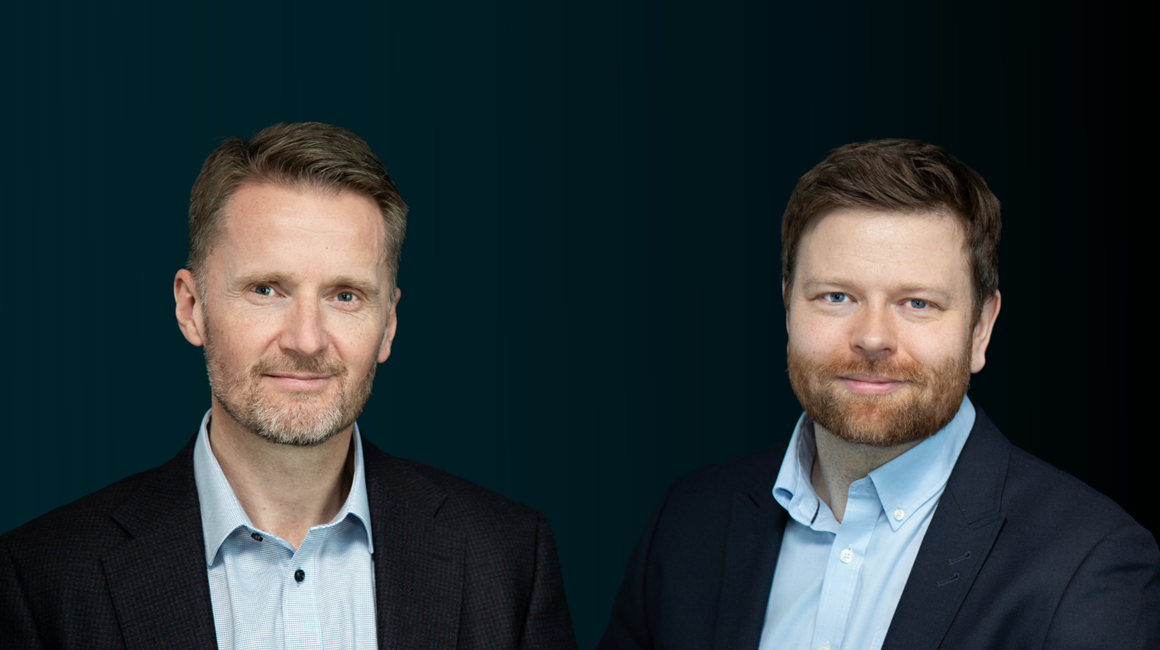
“Hydrogen can be the key to achieve zero-emission shipping. This regulatory approval takes us an important step towards commercializing our hydrogen solutions and realizing the zero-emission ambition. The learnings from this comprehensive approval process are highly important for HAV Hydrogen’s competence in designing hydrogen system solutions,” said Kristian Osnes, project manager for the FreeCO2ast Project and managing director at HAV Hydrogen. Alternative design approval The Norwegian Maritime Authority has issued a statement of preliminary assessment which confirms that the alternative design is considered feasible and sound in accordance with IMO guidelines on alternative design (MSC.1/Circ.1455) and that the project is ready to advance into the final design phase. This means that HAV Hydrogen’s technology is ready to enter the commercial stage where the company can start offering its products to the global maritime market HAV Hydrogen is one of the first companies to receive this type of approval for a maritime H2-based energy systems with a liquid hydrogen tank below deck from the Norwegian flag. FreeCo2ast project HAV Hydrogen’s energy system is a spin-off from the groundbreaking FreeCo2ast project, which is currently developing a high-capacity H2 energy system that can be retrofitted onboard one of Havila Kystruten's coastal cruise ships. The FreeCo2ast project is supported by the Norwegian Research Council, Innovation Norway and Enova. Major project partners are amongst others Havila Kystruten and HAV Group's subsidiaries HAV Design, Norwegian Electric Systems and HAV Hydrogen, in addition to the research institutions Sintef Ocean and Prototech. The fuel cell manufacturer Powercell AB and tank system supplier Linde Engineering GmbH have contributed with knowledge and expertise in their respective areas. “The almost four years of cooperation with internal and external project partners in the FreeCo2ast project is obviously a major contributor towards the preliminary design approval. The ability to cooperate closely with highly experienced sister companies covering both ship design, electrical integration and hydrogen systems, gives us a competitive edge as a group”, adds Gunnar Larsen, CEO of HAV Group ASA. Next steps HAV Hydrogen will now enter the final design stage for its H2-based energy system. “We are now in a position where we can offer shipowners the necessary competence in selecting hydrogen system solutions and guide them through their approval processes, as well as delivering the marine zero-emission systems. The key is to align the right technology for the right need at the right time,” said Kristian Osnes at HAV Hydrogen. |
|
| pageLayoutLeft | Nel ASA receives purchase order for an alkaline electrolyzer system | 5/6/2022 11:45:11 AM | False | Nel ASA receives purchase order for an alkaline electrolyzer system | Nel Hydrogen Electrolyser AS has received a purchase order from an undisclosed Indian refinery for an alkaline electrolyzer to provide H2 for oleochemicals production. | Nel Hydrogen Electrolyser AS has received a purchase order from an undisclosed Indian refinery for an alkaline electrolyzer to provide H2 for oleochemicals production. | Nel Hydrogen Electrolyser AS, a subsidiary of Nel ASA, has received a purchase order from an undisclosed Indian refinery for an alkaline electrolyzer to provide H2 for oleochemicals production. Nel Hydrogen has received a contract for an alkaline electrolysis H2 production unit to be delivered to a leader in the production of oleochemicals. Oleochemicals are used in a broad range of products and industries, like metalworking lubricants, additives for plastics, rubber and paper production, automotive lubricants, greases and fuel additives, and personal care products such as soaps, lotions, cosmetics and deodorants. “This project represents an opportunity to showcase an electrolyser solution that provides reliable and cost-effective hydrogen for oleochemicals production. We are thrilled to be working with an established and respected leader in this sector,” said Tom Skoczylas, Sales Manager for Nel Hydrogen US. The purchase order has a value of approximately €2 MM, and delivery of the equipment is expected to be mid-2023. |
|
| pageLayoutLeft | Siemens Energy statement about joining President Biden for AM Forward initiative | 5/6/2022 5:04:41 PM | False | Siemens Energy statement about joining President Biden for AM Forward initiative | Rich Voorberg, President of North America for Siemens Energy, joined President Biden and a group of U.S. manufacturers at the United Performance Materials facility in Hamilton, OH to launch AM Forward. | Rich Voorberg, President of North America for Siemens Energy, joined President Biden and a group of U.S. manufacturers at the United Performance Materials facility in Hamilton, OH to launch AM Forward. | Rich Voorberg, President of North America for Siemens Energy, joined President Biden and a group of U.S. manufacturers at the United Performance Materials facility in Hamilton, OH to launch AM Forward (Additive Manufacturing Forward). AM Forward is an initiative designed to upgrade the capacity of America’s small and medium-sized manufacturers using additive manufacturing or 3D printing. “It was an honor to join President Biden and executives from other companies in the energy and aerospace industries this afternoon to kick off the implementation of AM Forward. We believe that for our company and for the industry to remain competitive, we must have a robust supply chain in the U.S. producing and processing critical parts and components for the energy sector. AM Forward will help accelerate the adoption of 3D printing at scale, increasing the agility and resiliency of our supply chain and supporting good-paying jobs across the United States. “Siemens Energy has been a pioneer and global leader in additive manufacturing for more than a decade. The company uses 3D printing at locations such as our Innovation Center in Orlando, FL, a global additive manufacturing hub that enables suppliers and customers to design, simulate, produce, and test prototypes using AM and other technologies. Because of our expertise, it was important to us to join the AM Forward initiative and continue to support suppliers in increasing additively produced parts, expanding training, accelerating standards development, and providing technical assistance. “Siemens Energy is proud to be part of AM Forward. We are excited to work with government leaders and other companies to invest in the future of American manufacturing.” |
|
| pageLayoutLeft | Topsoe signs joint declaration to ramp up manufacturing of electrolyzers | 5/9/2022 11:05:40 AM | False | Topsoe signs joint declaration to ramp up manufacturing of electrolyzers | Europe’s leading electrolyzer manufacturers agreed to increase their manufacturing capacity to reach 17.5 GW by 2025. | Europe’s leading electrolyzer manufacturers agreed to increase their manufacturing capacity to reach 17.5 GW by 2025. | Roeland Baan, CEO at Topsoe, said, “Power-to-X and energy independence will not happen in the EU unless we ramp up the manufacturing of electrolyzer in the EU as well. Therefore, I am extremely happy to see commitment from both the EU and industry to do exactly that.” 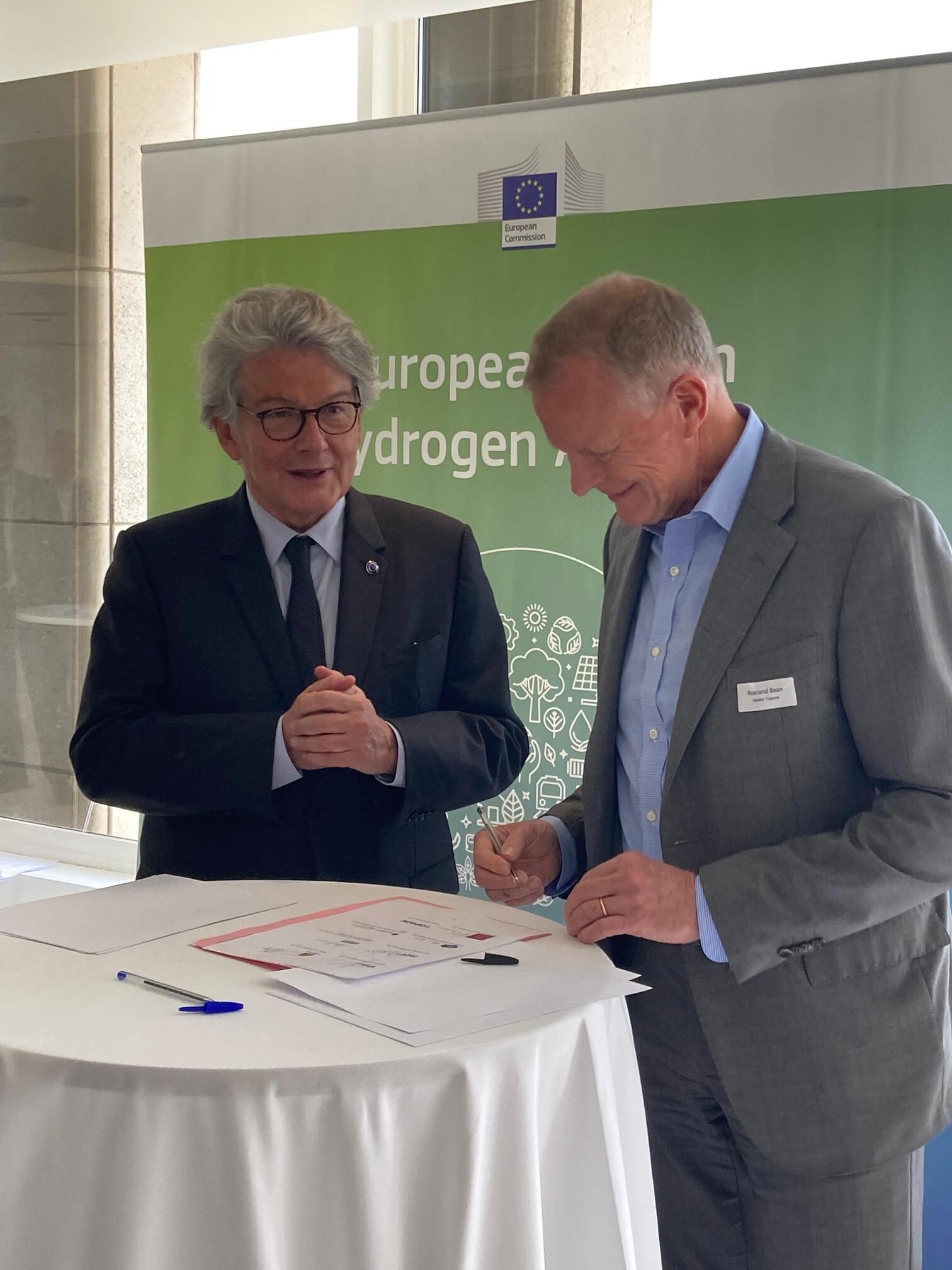
In Brussels, the industry committed to have 10 times as much combined annual electrolyzer manufacturing capacity in the EU by 2025 as is the case today – in return the EU committed to ensure a supporting regulatory framework and EU funds. Roeland Baan elaborates on the needed capacity,” If the EU wants to be independent of Russian gas – we need to produce 10 MMt of renewable hydrogen in the EU every year. Manufacturing electrolyzers must therefore be scaled up significantly. This represent both an unprecedented challenge and a significant opportunity for Topsoe.” The joint declaration features three pillars:
Under the Joint Declaration, Europe’s leading electrolyzer manufacturers agreed to increase their manufacturing capacity to reach 17.5 GW by 2025 and to further increase capacity by 2030 in line with projected demand for renewable H2. |
|
| pageLayoutLeft | Hexagon Purus Maritime receives inaugural order for H2 cylinders for maritime applications | 5/9/2022 12:03:30 PM | False | Hexagon Purus Maritime receives inaugural order for H2 cylinders for maritime applications | Hexagon Purus Maritime has received its inaugural order for cylinders to be used in onboard storage of H2 in maritime vessels. | Hexagon Purus Maritime has received its inaugural order for cylinders to be used in onboard storage of H2 in maritime vessels. | Hexagon Purus Maritime has received its inaugural order for cylinders to be used in onboard storage of H2 in maritime vessels. Hexagon Purus’ type 4 H2 cylinders will be used in onboard swappable storage containers for maritime vessels operating in the inland waterways in Europe. The value of the order is approximately €1.1 MM. Driving Energy Transformation “Our Type 4 high-pressure cylinders are at the core of what we do and with their corrosion resistance and long lifetime, the cylinders enable lower operational cost and total cost of ownership, which makes them ideal for maritime applications,” said Robert Haugen, Managing Director of Hexagon Purus Maritime. “This order represents an important commercial milestone for Hexagon Purus Maritime and lends further credence to our maritime strategy”. About the market Hexagon Purus combines maritime experience with extensive H2 storage expertise to provide a holistic approach to zero emission maritime solutions. Hexagon Purus is at the forefront of developing innovative H2 storage solutions with lightweight composite cylinders that are ideal for maritime applications. Hexagon Purus’ H2 storage and distribution business is well-positioned to support the ambitious energy transition required in the maritime sector - and to take a global leading role for integrated products in the emerging maritime H2 market. Together with partners, Hexagon Purus can cover major parts of the maritime H2 value chain. Timing Delivery of the cylinders are scheduled for 4Q 2022. |
|
| pageLayoutLeft | BEH2YDRO launches 100% H2 engines for heavy-duty applications | 5/9/2022 12:23:38 PM | False | BEH2YDRO launches 100% H2 engines for heavy-duty applications | BEH2YDRO will be launching its 100% H2 engines for heavy-duty applications. | BEH2YDRO will be launching its 100% H2 engines for heavy-duty applications. | At the World Hydrogen Summit in Rotterdam, BEH2YDRO will be launching its 100% H2 engines for heavy-duty applications. These innovative, zero emission engines are ready to use and will allow the industry to further engage in 100% sustainable and environmentally friendly development. BEH2YDRO is a JV between ABC and CMB.TECH. 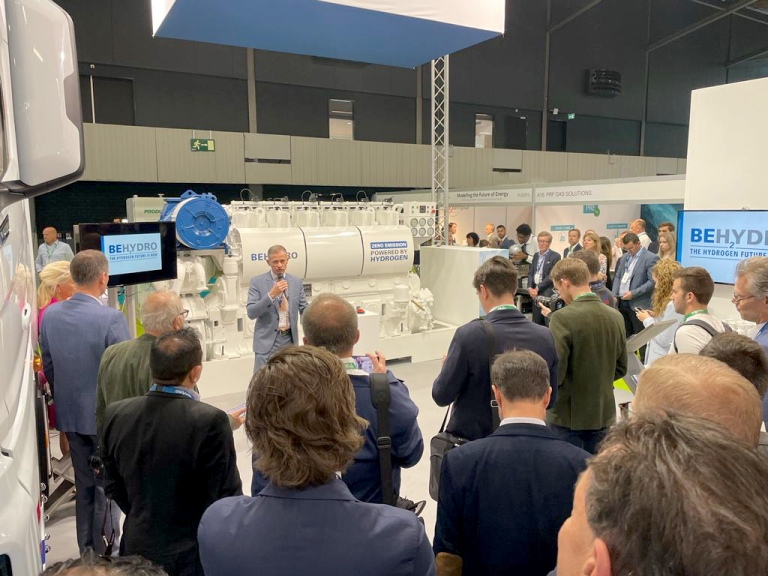
After the successful launch of dual-fuel engines in September 2020, BEH 2 YDRO is now launching 100% H2 engines. Dual fuel engines Operating on 85% H2 gas and 15% conventional fuel, they make the owner or user less dependent on fossil fuels and reduce CO2 emissions by as much as 85%! They can also be used flexibly when H2 is (temporarily) not available. 100% H2 engines In recent years, however, BEH 2 YDRO has not rested on its laurels and has been working hard on an additional, completely new range of 100% H2 engines. The pioneering BEH 2 YDRO H2 engines deliver 100% clean energy. They emit no harmful emissions such as CO2, nitrogen, sulfur oxides or soot particles. In addition, they are non-toxic and:
They also have a long service life, thanks to an optimized air/gas mixture that reduces component heat-up. “With the launch of this monofuel hydrogen engine we are taking an important next step in the development of our BEH 2 YDRO engines. BEH 2 YDRO can now supply both dual fuel and mono-fuel hydrogen applications for a wide range of heavy industrial applications such as shipping, gensets, locomotives, etc. Thanks to BEH2YDRO we can already green a large part of the off-grid industry today,” said Alexander Saverys, CEO CMB.TECH. Power and utilization The innovative 100% H2 engine range has been developed for heavy duty applications and has a power range from 1 MW to 2.6 MW. These H2 engines are available in 6- and 8-cylinder in-line engines and 12- and 16-cylinder V-engines. As a main drive or in combination with an alternator, they are a reliable and 100% environmentally friendly source of energy for ships, drilling rigs or other marine applications. They are also ideally suited for driving locomotives. In addition, the BEH 2 YDRO H2 engines are extremely versatile because they have no problem with slight impurities in the H2. For example, they can also be used to recover waste H2 instead of flaring it. The BEH 2 YDRO 100% H2 engines use proven technology and are designed to ensure long term and efficient operation. In addition to their long service life, they are also very easy to maintain. This saves costs and time for owners and operators. |
|
| pageLayoutLeft | Advent Technologies co-signs joint declaration to increase electrolyzer manufacturing capacities | 5/9/2022 12:56:35 PM | False | Advent Technologies co-signs joint declaration to increase electrolyzer manufacturing capacities | Advent Technologies announced that its Chairman and CEO, Dr. Vasilis Gregoriou, participated in the European Electrolyzer Summit in Brussels. | Advent Technologies announced that its Chairman and CEO, Dr. Vasilis Gregoriou, participated in the European Electrolyzer Summit in Brussels. | Advent Technologies announced that its Chairman and CEO, Dr. Vasilis Gregoriou, participated in the European Electrolyzer Summit in Brussels. This event was organized by the European Commission in cooperation with Hydrogen Europe and took place under the auspices of the European Clean Hydrogen Alliance. 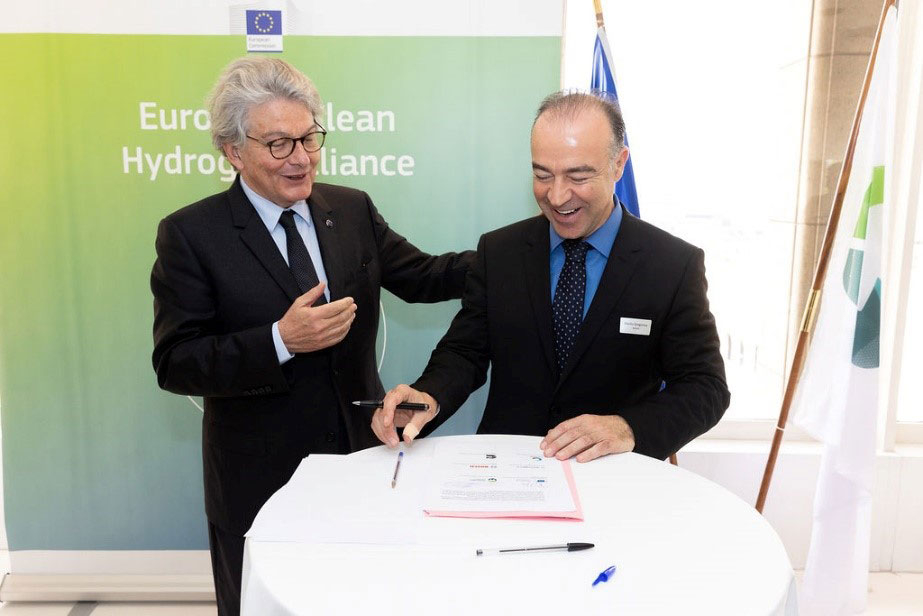
Commissioner for the Internal Market Thierry Breton, CEO of Hydrogen Europe Jorgo Chatzimarkakis, and 20 CEOs and executives representing companies including Advent, Bosch, Convion, Cummins, De Nora, Elogen, Enapter, Genvia, Green Hydrogen Systems, Helbio, H2B2, HyStar, John Cockerill, McPhy, Nel Hydrogen, Siemens Energy, SOLIDpower, Sunfire, Thyssenkrupp nucera and Topsoe, met and signed a Joint Declaration, establishing a clear goal of paving the way towards achieving the objectives of the REPowerEU’s proposed Hydrogen Accelerator, which sets out a strategy to double the previous EU renewable hydrogen target to 10 MMt of annual domestic production and an additional 10 MMt of annual H2 imports. Under the Joint Declaration, Europe’s leading electrolyzer manufacturers agreed to increase their manufacturing capacity to have, by 2025, a combined annual electrolyzer manufacturing capacity in Europe of 17.5 GW, as well as to further increase that capacity by 2030 in line with projected demand for renewable and low-carbon H2. Furthermore, the Joint Declaration features the three following pillars:
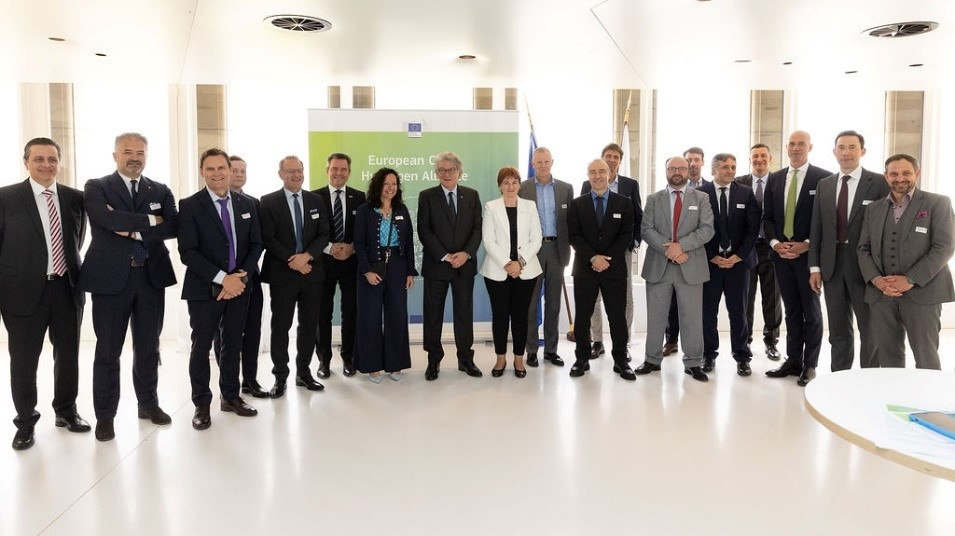
Dr. Vasilis Gregoriou, Advent’s Chairman and Chief Executive Officer, said “Today marked an important milestone for ensuring Europe’s long-term energy self-sufficiency and significantly reducing its reliance on fossil fuels. To achieve the goals outlined in the Joint Declaration that we signed today, the European electrolyzer manufacturing sector needs to enhance collaboration to ramp up electrolyzer production to approximately 25 GW per year with an installed electrolyzer capacity of 90-100 GW. We all recognize this as a challenge but also as a significant industrial opportunity that can positively contribute to Europe’s transition to clean energy at a far faster rate than ever before. Advent is highly honored to be part of this joint commitment, and we are delighted to see the Commission supporting the industry’s goal to boost electrolyzer manufacturing. All of us at Advent Technologies look forward to sharing our long-standing expertise and playing a key role in the scale-up of electrolyzer manufacturing capacity, aiming to secure energy self-sufficiency and help Europe meet the growing demand for renewable hydrogen.” |
|
| pageLayoutLeft | Delivery of the first Patriot units to Kimberley Clean Energy is underway | 5/10/2022 7:34:20 AM | False | Delivery of the first Patriot units to Kimberley Clean Energy is underway | The first payment to Renewables Plus has been made for the delivery of the initial Patriot unit to Kimberley Clean Energy at Kilto Station. | The first payment to Renewables Plus has been made for the delivery of the initial Patriot unit to Kimberley Clean Energy at Kilto Station. | The first payment to Renewables Plus has been made for the delivery of the initial Patriot unit to Kimberley Clean Energy at Kilto Station near Broome. 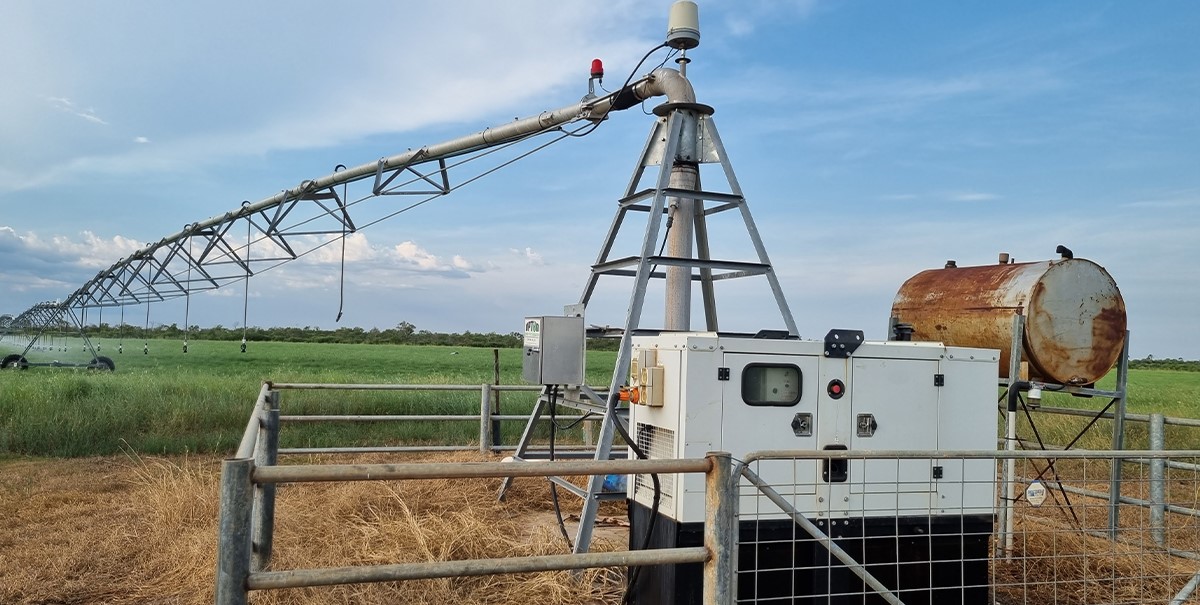
Project update:
Following this progress, we are well placed to see the unit arrive in the Kimberley mid-way through this year. 
Once the unit arrives at Kilto Station, it will be assembled, tested and commissioned, with production expected to begin in the third quarter of 2022. This will be used to create clean energy for Kilto Station’s abattoir, irrigation and homestead complex, cutting their diesel usage by two-thirds. Initially, the modular H2 production unit will form part of Kimberley Clean Energy’s fossil fuel substitution strategy for Kilto Station. Once complete, the next stage will see a H2 system built across the various sites Kimberley Clean Energy is involved with. This will be achieved as we work with Kimberley Clean Energy to fulfil a MoU for 75 Patriot units. The goal is for the 75 units to decarbonize the entire value chain of the projects Kimberley Clean Energy is working on, while also developing baseload renewable power, green hydrogen, and fertilizer to support a cleaner future for the region. Kimberley Clean Energy will use this system as a proof of concept to seek additional power contracts over the next three to five years in the West Kimberley, which they hope will see a transformation to 100% renewable energy. Background to the Kimberley Clean Energy project Over the past hundred years, the Western Australian Kimberley region has observed a worrying transformation in its landscape and its effects have been devastating. To combat the region’s challenges, Kimberley Clean Energy has partnered with Patriot Hydrogen. 
Kimberley Clean Energy has engaged Patriot to provide energy solutions that will enable a large-scale rehabilitation plan to restore its natural grasslands, create renewable power and aid economic development throughout the region. Research into West Kimberley has shown that the region was once known for its large and vast grasslands over 120 years ago. This is no longer the case today due to the domination of native Acacia Tumida and Acacia Eriopoda, which is also the cause of destructive bushfires. Patriot Hydrogen is working with Kimberley Clean Energy to provide the region with an energy solution that will use Acacia to produce green H2. Overall, Patriot Hydrogen’s goal is to partner with Kimberley Clean Energy to help protect their beautiful natural land, reduce fossil fuel usage and remove the risk of bushfires by turning the Acacia into green H2. |
|
| pageLayoutLeft | FuelCell Energy extends term of agreement with ExxonMobil for carbon capture technology | 5/10/2022 8:11:55 AM | False | FuelCell Energy extends term of agreement with ExxonMobil for carbon capture technology | FuelCell Energy announced that it has extended the term of its joint development agreement with ExxonMobil Technology and Engineering Company. | FuelCell Energy announced that it has extended the term of its joint development agreement with ExxonMobil Technology and Engineering Company. | FuelCell Energy announced that it has extended the term of its joint development agreement with ExxonMobil Technology and Engineering Company through December 31, 2022. The agreement will enable the companies to continue working to advance fuel cell CCS technology closer to commercialization and to explore market applications with a focus on three areas:
“Extending the scope of our long-standing agreement is evidence of ExxonMobil and FuelCell Energy’s joint desire to accelerate commercial deployment of differentiated fuel cell carbon capture technology,” said Jason Few, CEO of FuelCell Energy. “We are excited to build on the recent achievement of a key technical milestone as we advance toward the goals of a carbon capture demonstration and, ultimately, full scale deployment. We believe carbon capture is an essential requirement toward achieving global climate objectives.” “We are extending our agreement with FuelCell Energy to continue joint development of a novel technology that may accelerate deployment of carbon capture in industrial sectors,” said Prasanna Joshi, Vice President of ExxonMobil Technology and Engineering Company. “Carbonate fuel cell technology is part of our lower-emissions research and development portfolio as we look to identify commercially scalable technologies that can help reduce greenhouse gas emissions from vital sectors of the economy in support of a net-zero future.” |
|
| pageLayoutLeft | Lancaster, California announces partnership with Choshu Industries | 5/10/2022 8:33:54 AM | False | Lancaster, California announces partnership with Choshu Industries | The City of Lancaster, California, announced its partnership with Choshu Industries Corp. of America (CICA), a Yamaguchi. | The City of Lancaster, California, announced its partnership with Choshu Industries Corp. of America (CICA), a Yamaguchi. | (PRNewswire) – The City of Lancaster, California, announced its partnership with Choshu Industries Corp. of America (CICA), a Yamaguchi, a Japan-based R&D, solar energy power stations, environmental equipment, semiconductors and H2 technology and power solutions company. The partnership will initially seek to integrate Choshu's SHiPS, a containerized H2 production and refueling station system, and MizTomo, a stationary fuel cell power system, into the City's Green Energy Microgrid (GEM) system. 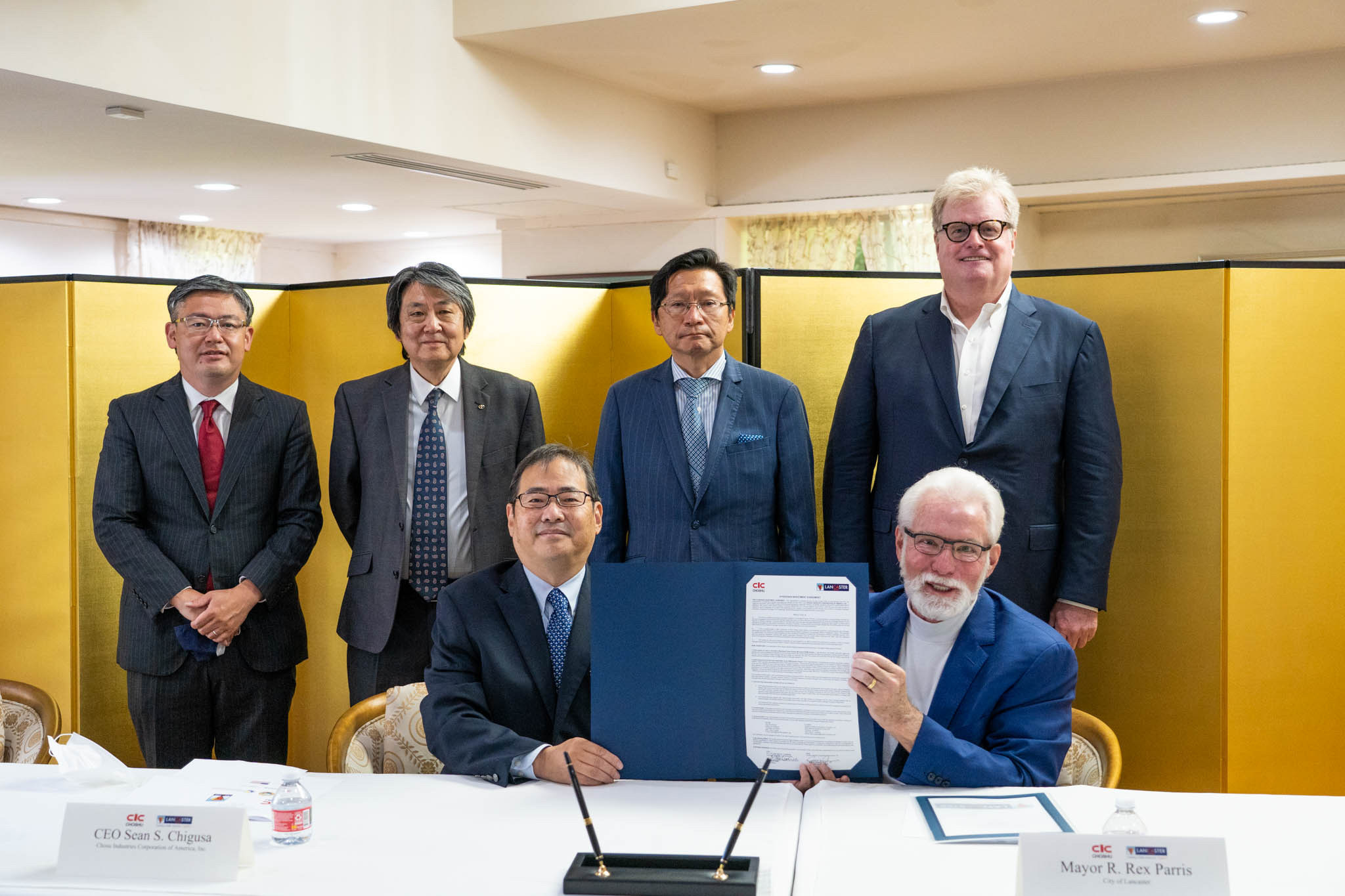
"Since the City of Lancaster announced its goal to become the first hydrogen city in the U.S., we have made steady progress and today marks the next phase of our vision," said Lancaster Mayor R. Rex Parris. "We are excited to partner with Choshu Industries on our GEM system, which will add a hydrogen backbone to the system's solar and battery capabilities, all driven by Choshu's advanced artificial intelligence." The SHiPS and MizTomo systems deployment represent the first projects of Lancaster's partnership with Choshu. These systems can be scaled to extend the City's H2 capacity to other sectors. Choshu and Lancaster will explore additional opportunities to supply H2 to commercial users and to support the city's fleet goal. "Lancaster has committed to having the first all-hydrogen municipal fleet in the United States. We plan to replace Lancaster's current fleet of passenger vehicles with new hydrogen vehicles as leases on gas vehicles expire," said Parris. Additionally, Lancaster is engaged with several H2 refueling station providers to develop a network of passenger and heavy-duty vehicle stations. 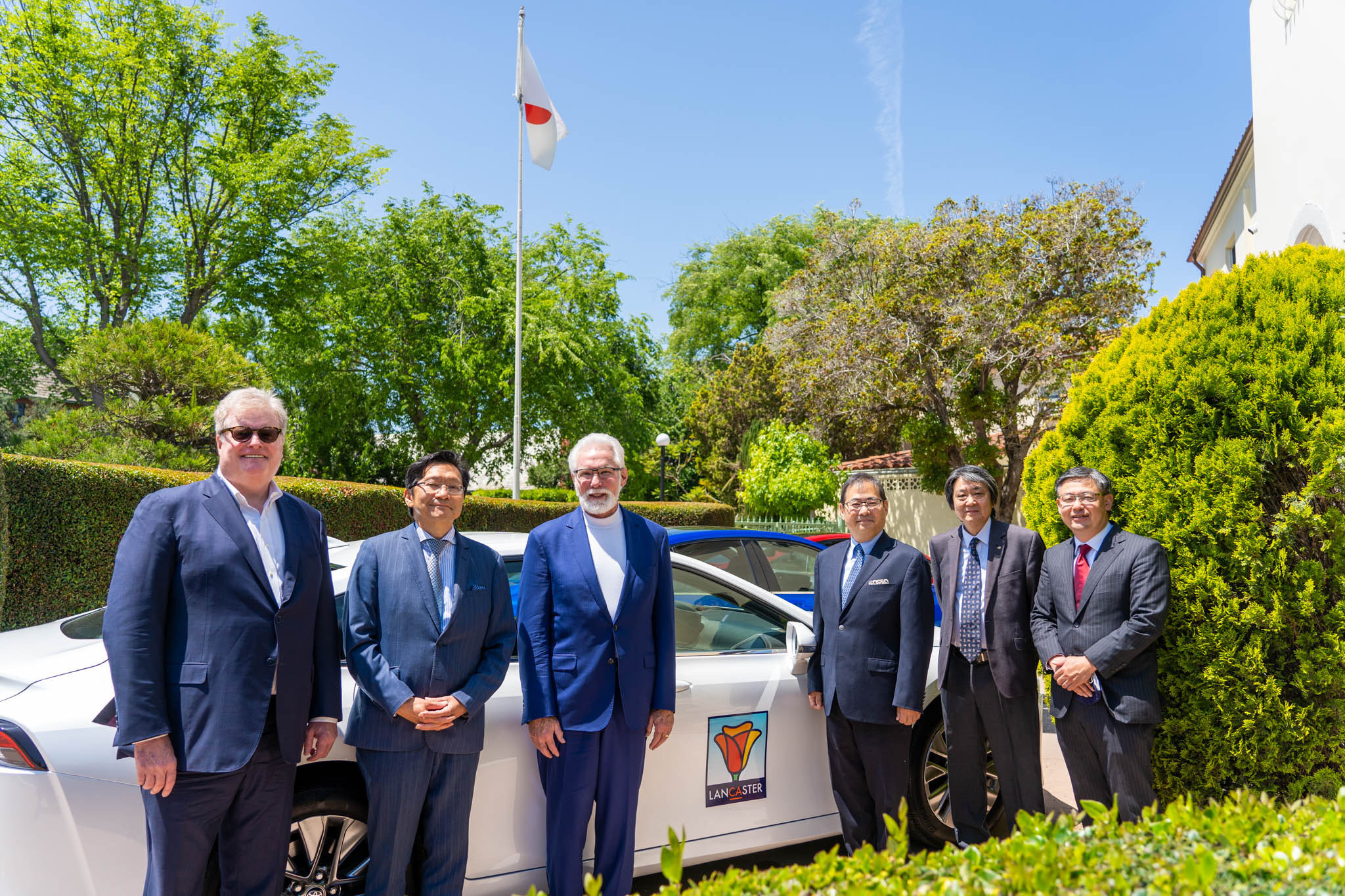
The event was commemorated by the agreement signing at the official residence of Japan Consul General Akira Muto in Los Angeles, and joined by CICA CEO Sean Chigusa with greetings and congratulations from Tadashi Mogi, Deputy Minister of METI Japan, Renewable Energy at METI Japan, Norihiko Saeki, Executive Director of JETRO Los Angeles, Lex Heslin, Senior Project Developer of Hitachi Zosen Inova, Takehito Yokoo, Senior Executive Engineer of Toyota Motor North America, and Emily Desai, Deputy Director of International Affairs and Trade of the State of California. Parris is a fifth-term Republican mayor who transformed Lancaster into a renewable energy leader over the past decade by attracting more than $2 B of investment in cutting-edge green companies and technologies. Investors include BYD, which manufactures electric buses; Heliogen, which generates H2 from concentrated solar energy; SGH2, which gasifies wastepaper into H2; and Hitachi Zosen Inova, which converts organic waste into renewable natural gas and H2. The city also started its own utility company, Lancaster Choice Energy, allowing residents to choose local renewable energy at lower prices. |
|
| pageLayoutLeft | H2 fuel network trial gets underway with INEOS at Grangemouth | 5/10/2022 1:53:04 PM | False | H2 fuel network trial gets underway with INEOS at Grangemouth | INEOS is taking part in a project with SGN to bring H2 distribution networks a step closer to reality in the UK. | INEOS is taking part in a project with SGN to bring H2 distribution networks a step closer to reality in the UK. | INEOS is taking part in a project with SGN to bring H2 distribution networks a step closer to reality in the UK. 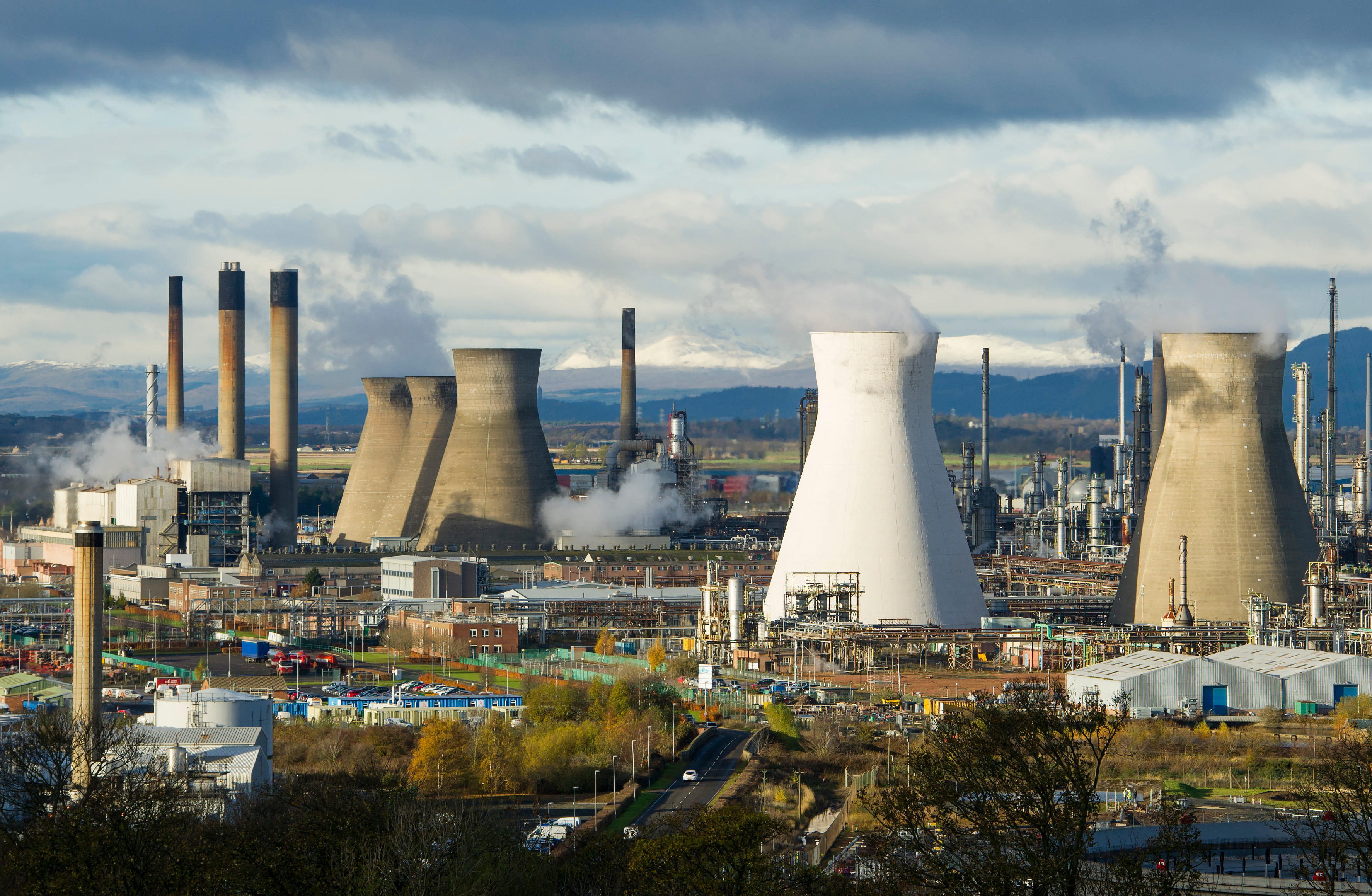
H2 supplied from the Grangemouth site in Scotland to the SGN project will help determine how existing natural gas networks can be repurposed for H2. Andrew Gardner, Chairman INEOS Grangemouth, said, “We believe that Grangemouth is the ideal location in Scotland to create a hub for hydrogen production, use and export. This trial, in partnership with SGN, will play an important role in helping to make hydrogen distribution networks a reality.” Building a UK-wide delivery network for H2 takes a step closer to reality with the SGN trial at Grangemouth in partnership with INEOS. The trial which is funded by the Energy Regulator and gas distribution companies, will use H2 supplied by INEOS in a 29 km section of decommissioned pipeline between the Grangemouth site and Granton. SGN Director of Energy Futures Gus Mcintosh, said, “Our Local Transmission System is part of the national critical infrastructure that reaches millions of homes and businesses across the UK. So, repurposing it for hydrogen could support a hydrogen system transformation that is least cost and least disruptive to customers.” Andrew Gardner, Chairman INEOS Grangemouth, said, “We are delighted to be partnering with SGN in a trial that will help determine how the UK’s transmission networks can be repurposed for hydrogen gas. We believe that Grangemouth is the ideal location in Scotland to create a hub for hydrogen production, use and export.” In January, INEOS announced the next step in its plans to build a world-scale low-carbon H2 plant at Grangemouth as it commits to being net zero by 2045. This trial will help improve an understanding of existing networks and the suitability to deliver H2 as a clean alternative to natural gas, to homes and businesses. |
|
| pageLayoutLeft | Enbridge, Humble Midstream to develop low-carbon H2 and ammonia production facilities | 5/10/2022 3:13:51 PM | False | Enbridge, Humble Midstream to develop low-carbon H2 and ammonia production facilities | Enbridge and Humble Midstream announced the joint development and marketing of a low-carbon H2 and ammonia production and export facility. | Enbridge and Humble Midstream announced the joint development and marketing of a low-carbon H2 and ammonia production and export facility. | Enbridge and Humble Midstream announced the joint development and marketing of a low-carbon H2 and ammonia production and export facility which will be located at the Enbridge Ingleside Energy Center (EIEC), near Corpus Christi, Texas. Enbridge and Humble plan to develop a utility scale ultra-low carbon production facility, capable of supplying both low-carbon H2 and ammonia to meet the growing global and domestic demand. Up to 95% of the carbon dioxide (CO2) generated in the production process will be sequestered in newly developed carbon capture infrastructure, including facilities to be owned and operated by Enbridge, making this a fully integrated low-carbon solution. Enbridge's affiliate, Texas Eastern Transmission Pipeline, is expected to provide the transportation service for feed gas that will be used for the production process. Both H2 and ammonia have zero CO2 emissions at the point of use. Enbridge and Humble intend to jointly market the capacity of the facility and are in discussions with several potential offtake customers. The construction of any facilities will be subject to sufficient customer support and receipt of all necessary regulatory approvals. "This is a good example of how Enbridge is leveraging existing conventional energy assets and capabilities to extend growth and capitalize on low carbon opportunities in the energy transition," said Colin Gruending, Enbridge Executive Vice President and President, Liquids Pipelines. "The EIEC is already the premier export facility on the U.S. Gulf Coast and will play an even greater role in global energy security and sustainability. We're excited to work with Humble to further develop this opportunity." "Humble is pleased to be joining Enbridge in this first-mover effort to develop clean energy alternatives on a world-class scale," said Humble Midstream CEO Steven Huckaby. "We believe the midstream expertise of both companies positions us well to provide affordable hydrogen and ammonia to a marketplace seeking low carbon alternative fuels. Our team is glad to be partnered with EnCap Flatrock Midstream to pursue this opportunity, a natural extension of their longstanding midstream strategy." |
|
| pageLayoutLeft | ENERTRAG plans green H2 project in the Tacuarembó region of Uruguay | 5/11/2022 9:01:06 AM | False | ENERTRAG plans green H2 project in the Tacuarembó region of Uruguay | ENERTRAG is planning the Tambor Green H2 Hub in the Department of Tacuarembó, Uruguay. | ENERTRAG is planning the Tambor Green H2 Hub in the Department of Tacuarembó, Uruguay. | ENERTRAG is planning the Tambor Green H2 Hub in the Department of Tacuarembó, Uruguay. The project will consist of wind and solar plants as well as an electrolyzer and conversion facilities to produce green H2 and its derivatives. In recent years, the interest in Latin and South America’s potential to produce green H2 has been continuously increasing, given its world-class wind and solar resources. 
Besides the strong commitment of the Uruguayan government to a green energy transition, these are key factors for the generation of competitive large-scale renewable energy. Uruguay is one of the world's pioneers in the field of renewable energies and currently planning on becoming an exporter of green H2 and its derivatives. The country has the potential to produce H2 in the gigawatt scale and, thus, meet Germany's entire demand for methanol, for example. The government of the Federal Republic of Germany has noticed these ambitions and, therefore, initiated the H2Global program, of which ENERTRAG is a founding member. The aim of H2Global is to create an efficient funding program for a fast market ramp up and import of green-H2-based products to Germany. The envisaged funding mechanism will enable the long-term commercial operation of green-H2 plants and the market ramp-up towards an industrial scale which is required now. ENERTRAG looks back on more than 10 years of experience in the production of green H2 and is developing international large-scale green H2 projects in Germany, South Africa, and Namibia. The company has already been active in Uruguay for several years, working closely with the German-Uruguayan Chamber of Commerce, among others. Last year, the company also had the pleasure of receiving a delegation led by the Minister of Industry, Energy and Mining, Omar Paganini, and other government representatives in Germany. “We want to support Uruguay's role as a pioneer in Latin America in the implementation of a green energy transition. Uruguay is an ideal partner for Europe and us with its high-quality energy resources, its stable regulatory and political framework as well as its vast experience in permitting and implementing large-scale renewable energy facilities,” said Aram Sander, Head of Department International Project Development PtX at ENERTRAG. “In addition, the production of green hydrogen and its derivatives offers huge possibilities in terms of growth and structural benefits.” Tambor Green H2 Hub, which in its first phase will consist of renewable energy plants (wind and solar photovoltaic) with a capacity of 350 megawatt and an onsite electrolyzer, is planned and developed in cooperation with the Uruguayan project developer SEG Ingeniería. The 15,000 tpy of H2 to be produced will be converted into e-methanol. The e-methanol produced here could compensate for around 10% of the methanol conventionally produced from Russian crude oil in Germany's largest refinery. Methanol is an important feedstock for the chemical industry and can be used as an energy carrier. The synthesis gas required for methanol production is traditionally produced from fossil raw materials such as oil, natural gas, and sometimes coal. In the Tambor project, only renewable resources will be used. Thus, the end product can be called renewable e-methanol, whose production does not emit any climate-damaging GHGs. “The energy transition can only succeed through international cooperation and green hydrogen is key to this success,” said Aram Sander. “With a rapid market ramp-up, hydrogen can not only positively contribute to the achievement of global defossilization, but also directly reduce dependency on Russian oil and gas, while unlocking immense economic potential worldwide and allowing people to participate.” |
|
| pageLayoutLeft | Vision Hydrogen monetizes first two development projects | 5/11/2022 5:12:31 PM | False | Vision Hydrogen monetizes first two development projects | Vision Hydrogen Corporation announced that it has monetized its 100% interest in its Vlissingen green H2 development project. | Vision Hydrogen Corporation announced that it has monetized its 100% interest in its Vlissingen green H2 development project. | Vision Hydrogen Corporation announced that it has monetized its 100% interest in its Vlissingen green H2 development project and its 50% interest in its Terneuzen green H2 development project through the sale of its Dutch interests to Volt Energy BV, wholly owned by its former co-CEO Andre Jurres. The Purchaser paid total consideration of USD $23,627,274, being $11,250,000 in cash and 1,768,182 shares of the Company’s common stock owned by the Purchaser valued at the current market price of $7.00 per share, reducing the Company’s outstanding common shares by 8.3%, to 19,548,776 shares of common stock outstanding. The cash proceeds realized by the Company, before deduction of transaction costs, represent a payment of approximately $0.58 cents per share. “Consistent with our plan to fund our development trajectory through monetizing early-stage development projects, VisionH2 is pleased to have established proof of concept with our initial two projects,” said Andrew Hromyk, Vision Hydrogen CEO. “With numerous hydrogen and carbon abatement projects in very early stages of development across Europe and our proven method economically rewarded much earlier than forecast, the Company is well positioned for future growth.” |
|
| pageLayoutLeft | Prototype installation advances following a successful capital raise | 5/11/2022 5:16:49 PM | False | Prototype installation advances following a successful capital raise | H2I Technology has advanced the installation of its H2 enhancement kits at its Melbourne workshop. | H2I Technology has advanced the installation of its H2 enhancement kits at its Melbourne workshop. | After a successful capital raise via the online platform VCEX, H2I Technology has advanced the installation of its H2 enhancement kits at its Melbourne workshop. The company’s team of world-renowned engineers will be running trials with a stationary generator and collecting the data to confirm the emissions reduction and diesel fuel savings. The company has chosen this specific engine type because potential customers from the mining industry are interested in how the technology can extend the operational life and optimize the efficiency of their current diesel infrastructure. Once testing is complete, H2I Technology will share the results and footage, while also showcasing its H2 enhancement kits to decision-makers from the mining sector. The company is on track to have the final prototype ready for market by 4Q of 2022. |
|
| pageLayoutLeft | Technip Energies, Saulsbury Industries win EPC contract for CCS at ExxonMobil facility | 5/12/2022 12:11:20 PM | False | Technip Energies, Saulsbury Industries win EPC contract for CCS at ExxonMobil facility | Technip Energies and Saulsbury Industries have been awarded an EPC contract to expand the carbon capture and storage (CCS) at ExxonMobil’s LaBarge, Wyoming facility. | Technip Energies and Saulsbury Industries have been awarded an EPC contract to expand the carbon capture and storage (CCS) at ExxonMobil’s LaBarge, Wyoming facility. | Technip Energies and Saulsbury Industries have been awarded an EPC contract to expand the carbon capture and storage (CCS) at ExxonMobil’s LaBarge, Wyoming facility. 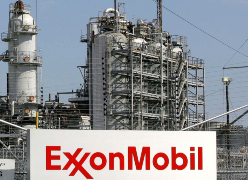
The LaBarge plant has already captured more CO2 than any other facility in the world. The plant has capacity to capture more than 6 MM metric tpy, and this expansion project will enable the capture of more than 1 MM additional metric tpy of CO2. The expansion will consist of a modification of the existing gas treatment facility to increase the carbon capture capacity and the installation of pipeline to transport the CO2 to the reservoir where it will be stored. Technip Energies will be responsible for the engineering and procurement services, while Saulsbury Industries will perform construction and the pipeline installation. Laure Mandrou, Senior Vice President Carbon-Free Solutions of Technip Energies, said “We are very pleased to be working with ExxonMobil to expand the CCS at LaBarge, the world’s largest carbon capture facility. We are committed to advancing the energy transition and this project will be a hallmark in reducing carbon emissions.” Dan Ammann, President of ExxonMobil Low Carbon Solutions, said “The expansion of carbon capture and storage capacity at LaBarge underscores ExxonMobil’s commitment to advancing lower-emissions technologies with projects around the world. Carbon capture and storage is necessary to help meet society’s net-zero goals and, with the right policies in place, the technology can be broadly deployed immediately.” Dennis Chismar, Senior Vice President of Saulsbury Industries, said “We are pleased to be collaborating with Technip Energies and supporting this exciting project with ExxonMobil. Our commitment to assisting in the reduction of carbon emissions and being a key contributor to the LaBarge expansion project marks a proud and historic moment for Saulsbury.” |
|
| pageLayoutLeft | HOERBIGER expands its H2 research center at the Vienna site | 5/12/2022 12:48:36 PM | False | HOERBIGER expands its H2 research center at the Vienna site | HOERBIGER will use its experience in H2 compression to support the energy transition with its new H2 research center in Vienna. | HOERBIGER will use its experience in H2 compression to support the energy transition with its new H2 research center in Vienna. | The demand for CO2-neutral energy is increasing. H2 will therefore become increasingly important for both industrial and consumer applications in the future. The compression of H2 is technically challenging due to the gas properties and the high pressures required. HOERBIGER has decades of experience in H2 compression and is supporting the energy transition with its new H2 research center in Vienna. 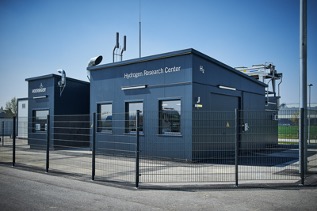
“With hydrogen, industry can significantly reduce its CO2 emissions and make an important contribution to reducing its ecological footprint,” said Wolfgang Sautter, member of the Executive Board and CEO of the Compression Division at HOERBIGER. “At the same time, hydrogen provides an attractive growth market for innovative companies with a high level of solution expertise.” Sautter sees a “rapid development in the entire industry in the direction of renewable energies.” More and more chemical companies are planning to make greater use of green H2 to manufacture their products with lower CO2 emissions. In the mobility market, it is also expected that a large proportion of commercial vehicles such as trucks and buses will increasingly require compressed H2 – and this is where HOERBIGER can help, according to Wolfgang Sautter. H2 compression requires expert knowledge – and compressors Compressing H2 for these applications is complex and costly. Compression systems must meet clear requirements from customers such as H2 filling station operators, who require high reliability and flexibility, but also cost efficiency at initial investment and operation. Most H2 applications outside refineries, which are currently the dominant field of H2 use, require oil-free compression at high pressures of up to about 1,000 bar. Conditions like this challenge the entire industry to develop new and innovative solutions. 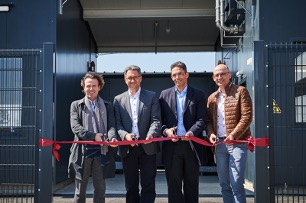
“HOERBIGER is already intensively researching innovative solutions and new products for the use of high-pressure reciprocating compressors in various applications,” said Dr. Markus Digruber, Head of Innovation and Business Development Compression Division at HOERBIGER. “To facilitate this work, we have expanded our Hydrogen Research Center in Vienna with our own high-pressure hydrogen test stand and put it into operation within just a few months. This addition allows us to evaluate and optimize our products under real conditions.” The high-pressure H2 test stand of the HOERBIGER Hydrogen Research Center was opened by HOERBIGER Executive Board on April 21, 2022. It is the next important step in the company’s journey to becoming a solution provider for H2 compressors, with linked service. |
|
| pageLayoutLeft | Maire Tecnimont secures EPC contract for a green H2 plant in India | 5/12/2022 1:08:19 PM | False | Maire Tecnimont secures EPC contract for a green H2 plant in India | Maire Tecnimont announced that it has been awarded an EPC contract by Gas Authority of India Limited to implement a 4.3 tpd green H2 production plant via a 10-MW polymer electrolyte membrane electrolysis unit. | Maire Tecnimont announced that it has been awarded an EPC contract by Gas Authority of India Limited to implement a 4.3 tpd green H2 production plant via a 10-MW polymer electrolyte membrane electrolysis unit. | Maire Tecnimont S.p.A. announced that it has been awarded an EPC contract by Gas Authority of India Limited (GAIL) to implement a 4.3 tpd green H2 production plant via a 10-megawatt polymer electrolyte membrane electrolysis unit to be located in Vijaipur (Madhya Pradesh), in Central India. The contract’s overall value is confidential and in line for this type of projects. The project’s scope of work entails full engineering, procurement and construction up to commissioning, start-up of the plant and Performance Guarantee Test Run, while its completion is expected in 18 months from the letter of acceptance. GAIL is the largest state-owned natural gas processing company with diversified activities across the whole natural gas value chain. Alessandro Bernini, Chief Executive Officer of Maire Tecnimont Group, said "In line with its National Hydrogen Mission, this project represents an important milestone of India's journey towards a hydrogen-based and carbon-neutral industry and economy, as well as a tangible confirmation of the steady growth of Maire Tecnimont’s Green Business. Blending green hydrogen into the gas network or using it as green feedstock to decarbonize the fertilizer and other hard-to-abate industrial processes are essential uses which are enabling the green hydrogen economy to accelerate and scale-up. With our historical presence in India, we are proud to concretely contribute to the country’s 2030 decarbonization targets." |
|
| pageLayoutLeft | Anglo American unveils a prototype of the world's largest H2-powered mine haul truck | 5/12/2022 2:53:47 PM | False | Anglo American unveils a prototype of the world's largest H2-powered mine haul truck | Anglo American unveiled a prototype of the world’s largest H2-powered mine haul truck designed to operate in everyday mining conditions. | Anglo American unveiled a prototype of the world’s largest H2-powered mine haul truck designed to operate in everyday mining conditions. | Anglo American unveiled a prototype of the world’s largest H2-powered mine haul truck designed to operate in everyday mining conditions at its Mogalakwena PGMs mine in South Africa. The 2MW H2-battery hybrid truck, generating more power than its diesel predecessor and capable of carrying a 290-ton payload, is part of Anglo American’s nuGen Zero Emission Haulage Solution (ZEHS). nuGen provides a fully integrated green H2 system, consisting of production, fueling and haulage system, with green H2 to be produced at the mine site. nuGen is part of FutureSmart Mining, Anglo American’s innovation-led approach to sustainable mining – which brings together technology and digitalization to drive sustainability outcomes, including its commitment to carbon-neutrality by 2040. Duncan Wanblad, Chief Executive of Anglo American, said “nuGen is a tangible demonstration of our FutureSmart Mining program changing the future of our industry. With diesel emissions from our haul truck fleet accounting for 10%–15% of our total Scope 1 emissions, this is an important step on our pathway to carbon neutral operations by 2040. The mining industry is playing a considerable role in helping the world decarbonize, both through our own emissions footprint and the metals and minerals that we produce that are critical to low carbon energy and transport systems. “Over the next several years, we envisage converting or replacing our current fleet of diesel-powered trucks with this zero-emission haulage system, fueled with green hydrogen. If this pilot is successful, we could remove up to 80% of diesel emissions at our open pit mines by rolling this technology across our global fleet.” Tony O’Neill, Technical Director of Anglo American, said “We are incredibly proud of what our team, working with expert partners, has achieved in under three years. This is truly a world-class innovation and bears testament to our technical vision and determination to deliver a cleaner and smarter future for mining. “It is these game-changing innovations that are exactly why we began our FutureSmart Mining™ journey in 2014, knowing how much of a difference we can make, including in the energy transition and across our societal footprint. Innovative, clean and independent power systems, such as our nuGen ZEHS project, offer a significant part of the emissions solution.” Natascha Viljoen, CEO of Anglo American Platinum, said “PGMs play an essential catalytic role in many clean-air technologies, including related to hydrogen production and hydrogen-fueled transportation. As part of our market development work, we have for some years been working towards establishing the right ecosystem to successfully develop, scale up and deploy hydrogen-fueled solutions. “Hydrogen has a significant and wide-ranging role to play in achieving a low carbon future – particularly as an energy carrier enabling the development of a renewables-based power generation system. We are particularly excited about the potential of nuGen, amongst other opportunities, as we work to champion the development of South Africa’s Hydrogen Valley.” The H2 economy provides an opportunity to create new engines of economic activity. With a combination of abundant renewable energy sources (i.e. solar and wind), and as the world’s largest producer of PGMs, hydrogen is a strategic priority for South Africa and presents a significant opportunity for economic development, including the creation of new jobs and the development of the PGMs sector, while also contributing to South Africa’s decarbonization objectives. Sébastien Arbola, Executive Vice President in charge of Thermal Generation, Hydrogen and Energy Supply at ENGIE, said "At ENGIE, we realize the importance of green hydrogen in the decarbonization of heavy-duty mobility, and we are dedicated to helping industry players accomplish their carbon neutrality goals. We are delighted to partner with Anglo American to provide renewable hydrogen for their proof of concept. Through this partnership, we aim to unlock the potential of green hydrogen in South Africa and pave the way for the decarbonization of the mining industry." South Africa’s H2 valley In South Africa, the Department of Science and Innovation (DSI) and the South African National Development Institute (SANEDI), in partnership with Anglo American, Bambili Energy, and ENGIE, are looking into opportunities to create a H2 valley. The proposed H2 valley will stretch approximately 835 kilometers from the platinum group metals-rich Bushveld geological area in Limpopo province, along the industrial and commercial corridor to Johannesburg and to the south coast at Durban. The nuGen Zero Emission Haulage Solution is one of the first projects for South Africa’s H2 valley. A feasibility study for South Africa’s H2 valley published in October 2021 identifies three hubs – Johannesburg, extending to Rustenburg and Pretoria; Durban, encompassing the city itself and Richards Bay; and Limpopo province centered around Anglo American’s Mogalakwena PGMs mine – with a fundamental role to play in integrating hydrogen into South Africa’s economy, and in establishing South Africa and its abundant renewable energy resources as a strategically important center for green H2 production. Nine key pilot projects have also been identified across these hubs and are recommended to be prioritized by developers. They span the transport, industrial, and construction sectors. A world first, developed by Anglo American with its partners For the nuGen project, Anglo American has worked with some of the world’s leading creative engineering and technology companies, such as ENGIE, First Mode, Ballard and NPROXX, to:
|
|
| pageLayoutLeft | Fortescue Future Industries to investigate repurposing coal infrastructure for green H2 production | 5/13/2022 8:30:31 AM | False | Fortescue Future Industries to investigate repurposing coal infrastructure for green H2 production | Fortescue Future Industries announced it will evaluate the feasibility of converting the former Centralia coal mine into a green H2 production facility. | Fortescue Future Industries announced it will evaluate the feasibility of converting the former Centralia coal mine into a green H2 production facility. | Fortescue Future Industries (FFI) announced it will evaluate the feasibility of converting the former Centralia coal mine into a green H2 production facility after entering into a binding exclusivity agreement with the Industrial Park at TransAlta (IPAT) in Washington, U.S. 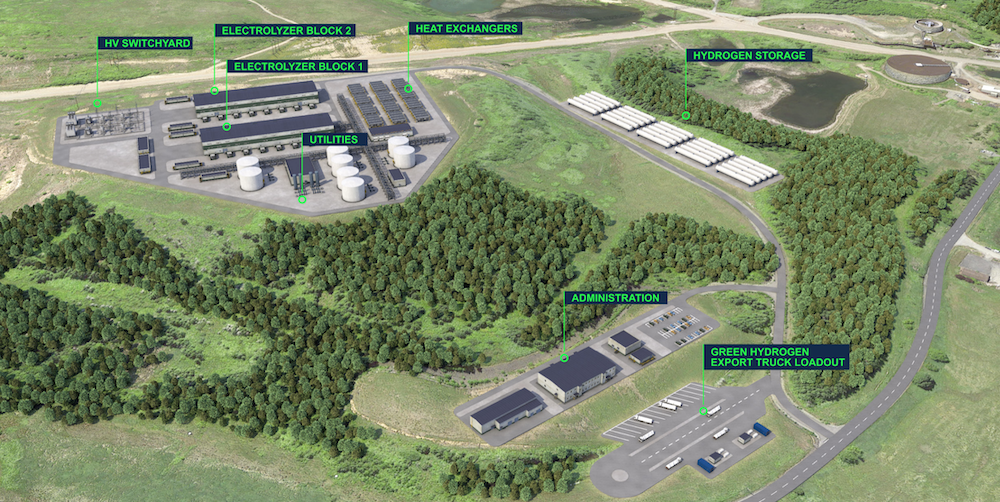
Green H2 is a zero-carbon, zero-methane fuel and unlike other types of H2 it does not require the burning of fossil fuels in the production process. The proposed FFI green H2 production plant would enable the decarbonization of hard-to-abate sectors of the North American economy and support the development of a Pacific Northwest green H2 hub, potentially creating hundreds of new local jobs. The Centralia coal-fired power plant adjacent to the IPAT project site is scheduled to close in 2025. Subject to the outcome of the feasibility studies, FFI’s intention would be to seek to employ the existing coal workforce for the proposed project, facilitating a transition into the emerging green energy economy. “FFI’s goal is to turn North America into a leading global green energy heartland and create thousands of green jobs now and more in the future,” Chairman and Founder of FFI Dr. Andrew Forrest AO said. “Repurposing existing fossil fuel infrastructure to create green hydrogen to power the world is part of the solution to saving the planet. The signing of this agreement is another important step in turning the corner once and for all, to implement the technologies carbon emitters need to reach net zero.” 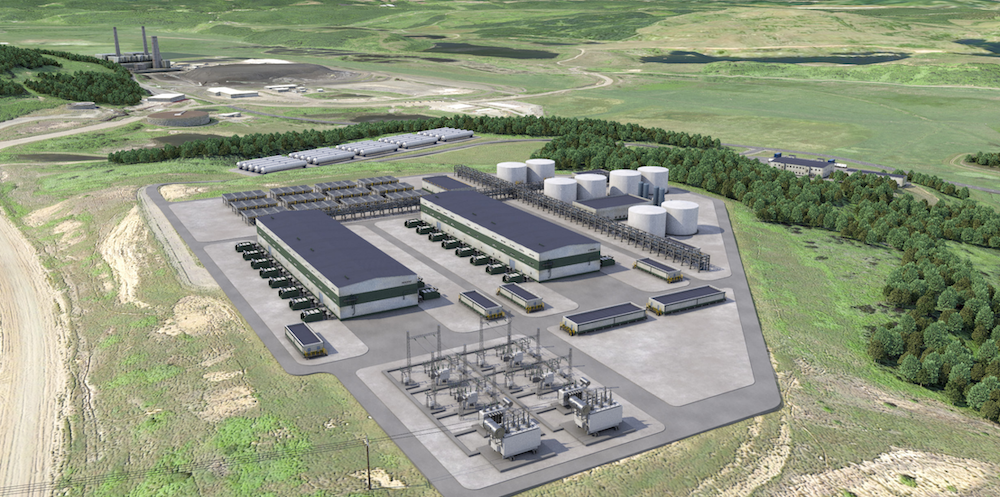
FFI has been working with the Lewis County Energy Innovation Coalition and Lewis Economic Alliance to undertake due diligence efforts on the project to date. Richard DeBolt, Executive Director of the Lewis Economic Alliance said, “With the closing of the coal mine and the scheduled retirement of the Centralia coal-fired power plant, IPAT was formed to redevelop the site and attract investment that will support well-paid, long-term employment opportunities in the region. FFI’s potential project represents the opportunity to do just that.” FFI also announced that it would apply for a U.S. Department of Energy (DOE) H2 Hub Program grant in collaboration with Pacific Northwest stakeholders. The H2 Hub Program was enacted under the Bipartisan Infrastructure Law and is being implemented by the DOE. Chief Executive Officer of FFI North America, Paul Browning, said, “The electric power grid of the Pacific Northwest is one of the lowest carbon power grids in the world and can be used to produce green hydrogen, and could extend the region’s low carbon leadership to hard to electrify sectors like long-haul trucking, ports, aviation, and heavy industry. Together with other Pacific Northwest stakeholders, we plan to utilize legacy fossil fuel infrastructure and workforce to produce green hydrogen and pursue a growing zero carbon economy in Lewis County and the Pacific Northwest region.” The Pacific Northwest stakeholders that FFI is collaborating with include Puget Sound Energy, Washington Maritime Blue, Twin Transit and the Lewis County Energy Innovation Coalition. FFI welcomes the opportunity to work with additional stakeholders to support the development of a Pacific Northwest Hydrogen Hub. Josh Jacobs, VP of Clean Energy Strategy, Puget Sound Energy said, “Our aspirational Beyond Net Zero Carbon initiative requires that we deploy innovative decarbonization technologies like green hydrogen. We look forward to taking this important work forward.” Jennifer States, VP of Projects and Strategy, Washington Maritime Blue said, “The hydrogen production envisioned by the proposed project represents the kind of scale needed to transform our port and maritime sector by delivering zero-emission fueling alternatives. This is the next step in what our Build Back Blue consortium laid the foundation for in our proposal to the US Economic Development Administration. Through collaboration and joint innovation, we can ensure that this type of large development is fully integrated into the growing clean energy and blue economy ecosystem. It is well-aligned with the DOE Hydrogen Hub and can help our Pacific Northwest Hydrogen Association build up the potential project pipeline for achieving our clean energy transition." FFI is progressing discussions with the Lewis County Energy Innovation Coalition to investigate developing H2 applications in the Centralia-Chehalis twin cities. This includes working with bus transit operator, Twin Transit, to decarbonize commuter buses and other heavy transport operations. Joe Clark, Executive Director of Twin Transit said, “Green hydrogen has the potential to decarbonize our transit operations safely and efficiently. Our central location on the I-5 corridor means the development of hydrogen infrastructure in Centralia can decarbonize the key North-South transport corridor in the Northwest and provide distribution of hydrogen across the region.” |
|
| pageLayoutLeft | Spain's King Felipe inaugurates Iberdrola's green H2 plant in Puertollano | 5/13/2022 1:38:42 PM | False | Spain's King Felipe inaugurates Iberdrola's green H2 plant in Puertollano | King Felipe VI inaugurated Iberdrola's green H2 plant, the largest facility of its kind for industrial use in Europe. | King Felipe VI inaugurated Iberdrola's green H2 plant, the largest facility of its kind for industrial use in Europe. | King Felipe VI inaugurated the company's green H2 plant in Puertollano (Ciudad Real). It is the largest facility of its kind for industrial use in Europe and is also the largest plant currently operating in the world. 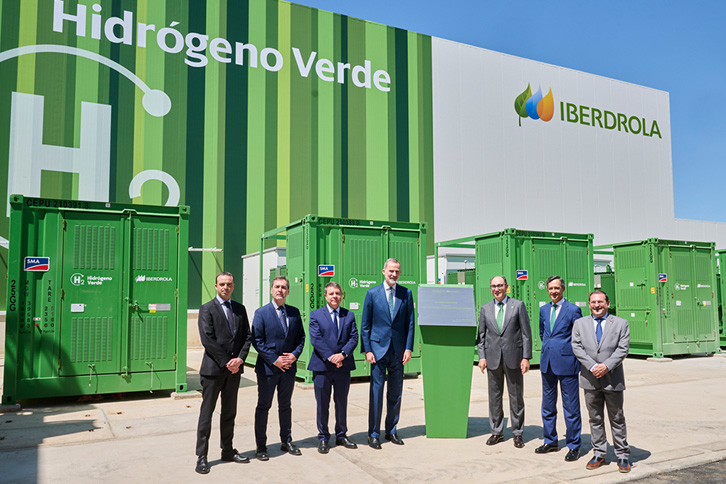
During his speech, Ignacio Galán explained that the plant presented represents the start of a major plan of more than 2,000 MM euros to replace imported gas with green H2 in the production of ammonia for fertilizers. This facility could make Spain a benchmark in the production and development of this new energy vector, which would make a decisive contribution to the decarbonization of sectors that are difficult to electrify, such as fertilizers, high-temperature industry and heavy transport. With a total investment of 150 MM euros, which includes both the green H2 facilities and a dedicated photovoltaic power plant, the Puertollano plant will be able to produce up to 3,000 tpy of green H2 and avoid the emission of 78,000 tpy of CO2. The Puertollano plant will be able to generate 100% green H2 through one of the world's largest electrolysis systems. The project will have zero CO2 emissions thanks to the use of renewable energy from an innovative 100 MW solar photovoltaic plant integrated into the facility. This plant - the company's first of its kind in Spain - has bifacial panels and a lithium-ion battery system with a storage capacity of 20 MW/h. Its bifacial modules allow for higher production, as they have two light-sensitive surfaces. It will thus have an annual output of around 156,000 MW/h. |
|
| pageLayoutLeft | Daimler Truck North America, Cummins collaborate to drive H2 fuel cell trucks forward | 5/13/2022 2:05:08 PM | False | Daimler Truck North America, Cummins collaborate to drive H2 fuel cell trucks forward | Cummins and Daimler Truck North America are collaborating to upfit and validate Freightliner Cascadia trucks with a Cummins H2 fuel cell powertrain for use in North America. | Cummins and Daimler Truck North America are collaborating to upfit and validate Freightliner Cascadia trucks with a Cummins H2 fuel cell powertrain for use in North America. | Cummins Inc. and Daimler Truck North America (DTNA) are collaborating to upfit and validate Freightliner Cascadia trucks with a Cummins H2 fuel cell powertrain for use in North America. Freightliner will leverage Cummins’ fourth generation fuel cell powertrain, which provides improved power density, efficiency and durability. 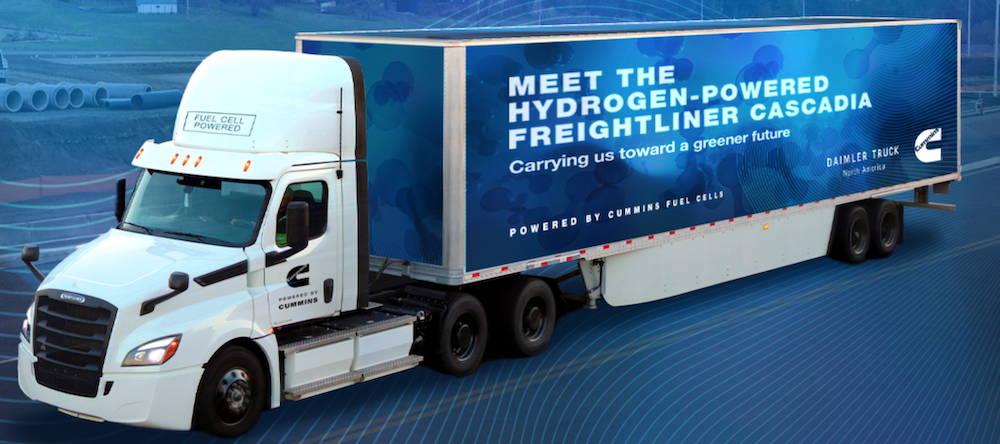
The joint effort will support both organizations’ goals to reduce emissions across product offerings and operations. Upon successful validation, the companies intend to have initial units available in 2024 for selected customers. “Cummins and Daimler Truck have a strong history of partnership, and this next step into fuel cell electric vehicles is an exciting development for zero-emissions transport,” said Amy Davis, Vice President and President of New Power at Cummins. “Hydrogen fuel cells are a promising solution for the demanding requirements of heavy-duty trucking. Our collaboration in this market is an important milestone for both companies as we work to accelerate the shift to a carbon-free economy.” “CO2-neutral commercial transportation must not only be technically feasible, but also economically viable for our valued customers,” said Rakesh Aneja, Vice President and Chief of eMobility at DTNA. “Depending on the customer application and energy infrastructure considerations, hydrogen-powered vehicles can absolutely complement battery-powered electric vehicles in accelerating our carbon-neutral journey. We are pleased to expand our partnership with Cummins to include hydrogen-powered fuel cell electric vehicles in our future portfolio. We remain focused on serving our customers by providing them with a choice of propulsion-technologies, ultimately resulting in solutions that best suit their business needs.” |
|
| pageLayoutLeft | RWE participates with unique concepts in Dutch offshore wind tender | 5/16/2022 12:50:50 PM | False | RWE participates with unique concepts in Dutch offshore wind tender | RWE’s innovative ecological concepts deliver net positive impact on biodiversity during construction and operation of offshore site VI. | RWE’s innovative ecological concepts deliver net positive impact on biodiversity during construction and operation of offshore site VI. | RWE’s innovative ecological concepts deliver net positive impact on biodiversity during construction and operation of offshore site VI. Perfect match of supply and demand through full system integration at offshore site VII, including 600 MW electrolyzer capacity for green H2 production, e-boilers for heating and battery storage. Comprehensive Research & Development program on system integration and ecology with leading partners from the Netherlands to foster local research and businesses as well as knowledge sharing. 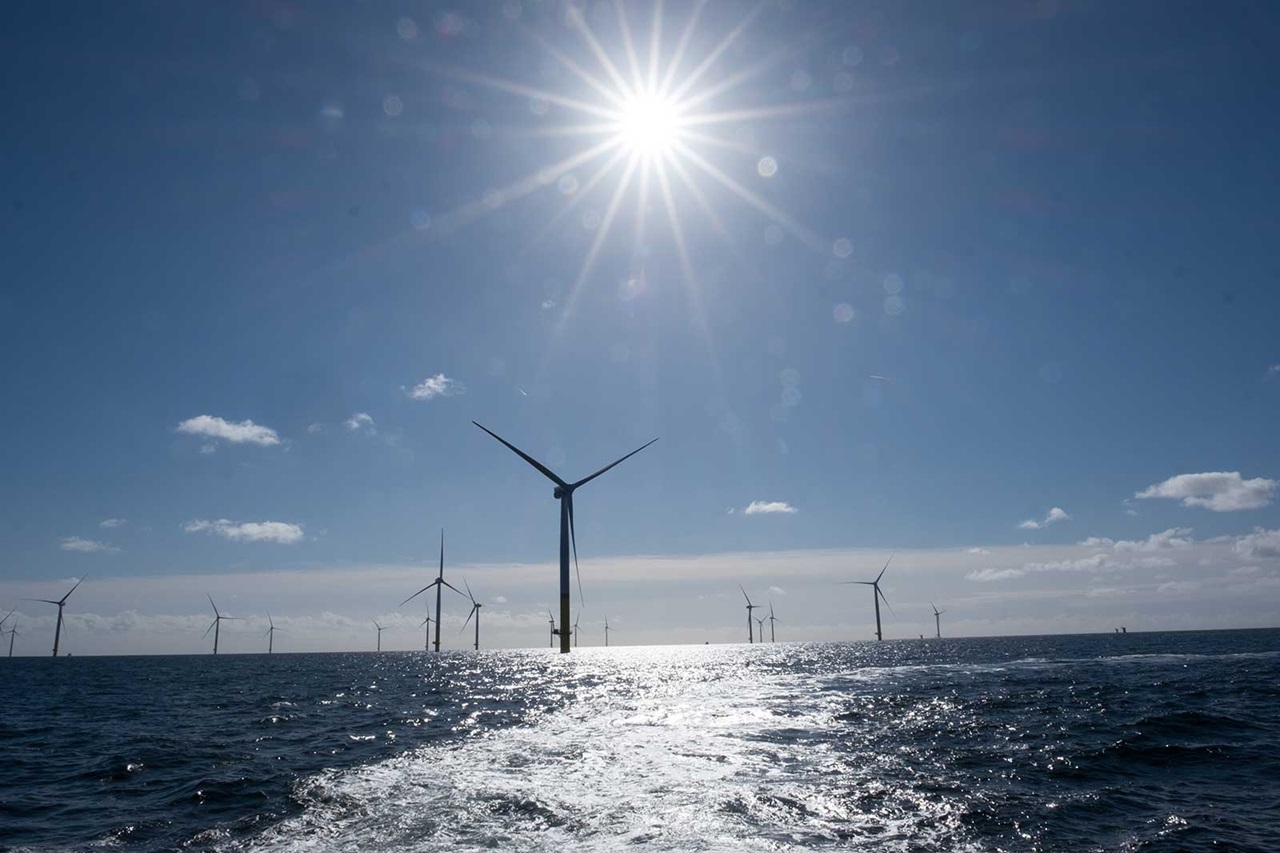
RWE is participating in the Dutch offshore wind tender for Hollandse Kust West (HKW). The company has submitted bids for both HKW site VI and HKW site VII to contribute to the Dutch government’s ambitious build out target of 21 gigawatts (GW) for offshore wind by around 2030. The areas are in the North Sea, about 53 kilometers off the Dutch coast. Both sites will each deliver more than 760 megawatts (MW) of offshore wind capacity. In addition, RWE’s proposed design for HKW site VI endeavors to have a positive net impact for the North Sea ecosystem, whereas RWE’s concept for HKW site VII is a blueprint for the perfect integration of offshore wind farms into the Dutch energy system, including 600 MW electrolyzer capacity onshore with access to storage capacity in the planned onshore hydrogen backbone. Hollandse Kust West VI: Innovations for net positive impact on biodiversity Offshore innovation projects are a key element of RWE’s sustainability strategy. Innovations are also an integral part of the RWE bid for HKW site VI, such that this offshore wind farm will be built and operated in harmony with the ecosystem. RWE’s unique design concept for HKW VI will mitigate negative effects on flora and fauna – above and below sea level – whilst taking significant steps towards rewilding the North Sea. The company will build on its many years of research at existing offshore wind farms and projects that are currently under development and construction, such as Kaskasi in the German North Sea. Innovations will be implemented to allow birds and bats to fly safely between the turbines and under the rotor swept area. Furthermore, RWE intends to rewild the area by adding artificial reefs and floating gardens. This will enhance the habitat, strengthen the food chain, and thereby benefit all species, such as birds, fish and sea mammals. Safeguarding the ecosystem is also a key issue during construction: to minimize disturbance from monopile foundation installation, RWE will make use of special vibro piling techniques. A further key element of RWE’s bid is to drive knowledge leadership in North Sea ecology by investing in a comprehensive Research & Development (R&D) program with leading partners. These will include top universities and research institutes from the Netherlands, and will foster local research on innovations and businesses, including the creation of many new research and PhD positions. In addition, RWE envisages to set up a comprehensive multi-technology monitoring system at HKW VI and will share knowledge widely and freely to enable all stakeholders in offshore wind to do as much for ecology as possible – creating a so called ‘living lab’. Hollandse Kust West VII: Blueprint for the Dutch energy system of the future To address the challenges arising from matching fluctuating electricity production from renewables with flexible demand for energy, RWE has developed a blueprint for the integration of offshore wind farms into the Dutch energy system. The company wants to take a big step in the system integration of offshore wind. To this end, RWE will focus on combining the HKW VII offshore wind warm with 600 MW onshore electrolyzers for green H2 production, supplying H2 and electricity to existing partners and new customers within Dutch industry. Furthermore, the company intends to integrate e-boilers for heating, battery storage and charging solutions for electric vehicles. Large parts of the investments are planned in the Groningen and Brabant areas in close collaboration with partners in those regions. In addition, RWE also plans to accelerate the commercial application of new technologies by supporting a vast amount of innovators and startups in demonstrating their innovation in an operational environment. The company’s goal is to perfectly match the demand for energy to the flexible generation profile of the wind farm, contributing to grid stability. Partnership approach The extensive solutions on system integration and ecology measures, research and knowledge sharing will be implemented together with more than 40 partners. This includes start-ups and innovators that RWE will support in demonstrating their innovation in an operational environment, as well as clients and industrial partners that the company will support in decarbonizing their businesses with new flexible demand investments. Furthermore, RWE will cooperate with universities, educational centers of applied science and vocational schools regarding knowledge sharing and dissemination. |
|
| pageLayoutLeft | Levidian Nanosystems partners with Zero Carbon Ventures to deploy LOOP decarbonization systems | 5/16/2022 12:59:46 PM | False | Levidian Nanosystems partners with Zero Carbon Ventures to deploy LOOP decarbonization systems | Zero Carbon has committed to deploying 500 LOOP50 systems over the next five years. | Zero Carbon has committed to deploying 500 LOOP50 systems over the next five years. | Levidian announces the first customer agreement to deploy LOOPs with Zero Carbon Ventures. Zero Carbon has committed to deploying 500 LOOP50 systems over the next five years. Zero Carbon will be focused on decarbonizing waste gas on landfill and gas flaring sites, partnering with major oil and gas companies, and government agencies across the United Arab Emirates. They will also deploy the first Levidian LOOP10 system at a site in Abu Dhabi owned by IDC. The deployed LOOP systems will together form a critical supply chain network producing high-quality graphene and hydrogen for distribution in the UAE. Using Levidian’s expertise in nanomaterials and Zero Carbon’s extensive network, the graphene produced by LOOP will be used to enhance and further decarbonize industrial materials in applications like paints and coatings, plastics and composites, building materials, and battery technologies. In addition, the clean H2 produced will be utilized in fuel cells and heat and power applications. A single LOOP50 device utilizing waste gas reduces CO2 equivalent (CO2e) by 100 tpy. Over the course of Levidian’s 10-yr agreement with Zero Carbon, the 500 LOOP devices will remove half a million tons of CO2e. “It is very exciting to see our first LOOP device deployed in the UAE. LOOP is at its most powerful when decarbonizing waste gas to generate hydrogen and graphene. Methane is the most potent greenhouse gas and Levidian’s mission is to turn this gas into a powerful tool for decarbonization. We look forward to seeing Zero Carbon’s network of LOOPs growing over the coming years,” said John Hartley, Levidian CEO. “Zero Carbon Ventures’ mission is to scour the globe to find world-class carbon reducing innovations that can make a hugely positive impact in the Middle East. There’s no doubt that Levidian’s game-changing LOOP devices will do just that, producing both green hydrogen and high-quality graphene, right here in the UAE. Both products in turn will have a positive impact on many industrial processes. We can’t wait to get started,” said Martin Reynolds, Zero Carbon Ventures CEO. |
|
| pageLayoutLeft | GenCell partners with RedHawk Energy to deliver clean resilient backup power solutions | 5/16/2022 1:09:50 PM | False | GenCell partners with RedHawk Energy to deliver clean resilient backup power solutions | GenCell Energy and RedHawk Energy Systems announced a partnership to deliver GenCell’s long-duration and zero-emission fuel cell backup power systems to support critical infrastructure requirements in the U.S. rail and other key industry sectors. | GenCell Energy and RedHawk Energy Systems announced a partnership to deliver GenCell’s long-duration and zero-emission fuel cell backup power systems to support critical infrastructure requirements in the U.S. rail and other key industry sectors. | GenCell Energy and RedHawk Energy Systems LLC announced a strategic partnership to deliver GenCell’s ultrareliable, resilient, long-duration and zero-emission fuel cell backup power systems to support critical infrastructure requirements in the U.S. rail and other key industry sectors. RedHawk will be featuring GenCell’s backup power solutions at the 2022 RSSI C&S Exhibition, the U.S.’s premier show in the rail and rail transit, communications and signal industry being held in Kansas City, MO from May 16-18. With the U.S. administration encouraging the accelerated transition to clean energy resources and climate concerns challenging critical industries and services to reinforce the resilience of their power facilities in the event of increasing frequent and severe weather incidents that increase the risk of power outages, private and public service providers across the U.S. are growing the demand for innovative energy technologies to meet these seemingly contradictory challenges. Faced with the tough job of keeping trains moving 24/7 or risking financial losses and customer churn, railroads and transit agencies have especially low tolerance for power interruptions. Since the early 1980’s RedHawk Energy has helped commercial and industrial customers tackle their critical prime and back-up power challenges with innovative solutions supporting diverse power loads. With rich experience in design, engineering and deployment of a broad variety of alternative energy systems from solar and wind to sophisticated ultracapacitors to power different applications, and with particular focus on rail signaling and communications, RedHawk recognizes the unique value of GenCell’s solutions for its customer base. The partners have joined forces to meet the needs of rail and other industries requiring uninterrupted power for the continuous operations of their signal & communications equipment. Incorporating comprehensive operational intelligence software and enabling extended runtime and compliance with sustainability targets while requiring minimal maintenance and support, GenCell’s product portfolio offers RedHawk customers an attractive value proposition at a cost comparable or less than that of pollutant diesel alternatives. “We’re excited to join forces with GenCell Energy to promote and supply their innovative alkaline fuel cells,” said Matt Ulrich, Technical Sales Manager, RedHawk Energy. “We feel that GenCell’s fuel cells powered by hydrogen and/or ammonia fit nicely into our existing alternative energy portfolio and give our customers a new option to meet their critical prime and backup power requirements as well as support their sustainability initiatives.” Rami Reshef, CEO GenCell, said “We are most enthusiastic to work with RedHawk Energy Systems and to demonstrate the value of our technologies to their strong customer base including virtually every Class 1 railroad in North America, shortline railroads, midstream, upstream and downstream oil & gas companies, telecommunication companies, shipping companies, government agencies and many Fortune 500 & 1000 corporations. We appreciate this opportunity to collaborate with RedHawk’s experienced engineering team, to gain deeper knowledge and understanding of the issues facing U.S. railroads and transit agencies and to increase our brand exposure and install base in these key industry sectors and regions in the United States.” |
|
| pageLayoutLeft | Raven SR signs MoU with Gevolve Solutions to expand global H2 footprint into Australia | 5/17/2022 12:29:37 PM | False | Raven SR signs MoU with Gevolve Solutions to expand global H2 footprint into Australia | Raven SR announced the signing of a MoU with Gevolve Solutions to provide opportunities for Indigenous people to continue to lead in the energy transition towards a lower-carbon future. | Raven SR announced the signing of a MoU with Gevolve Solutions to provide opportunities for Indigenous people to continue to lead in the energy transition towards a lower-carbon future. | Raven SR announced the signing of a MoU with Gevolve Solutions to provide opportunities for Indigenous people to continue to lead in the energy transition towards a lower-carbon future. With Raven SR as Gevolve Solutions’ sole international partner for waste-to-H2, the MoU establishes a collaborative relationship between the two companies for the development of a hydrogen and synthetic fuels production network utilizing Raven SR’s proprietary non-combustion Steam/CO2 technology. The initial project will be the establishment of a major regional waste-to- H2 facility in Western Australia, followed by additional regional facilities in remote and regional areas, before expanding into other states and territories of Australia. “As Raven SR continues to expand globally with our non-combustion renewable hydrogen process, we are excited for our venture into Australia through our partnership with Gevolve Solutions. We respect its community values and emphasis on the importance of environmental responsibility and energy independence,” said Matt Murdock, Raven SR CEO. “Our scalable waste-to-energy design will provide for local production and local use across Australia and beyond.” Gevolve Solutions will support local Indigenous-owned businesses and workforces by providing the development, planning and regulatory approvals, procurement, local fabrication and construction services for the waste-to- H2 sites. “Gevolve believes that the success of delivering a greener future tomorrow comes with our ability to collaborate and share innovation today. We seek to ensure the protection and preservation of our land, people and culture. We are truly blessed to partner with Raven SR, who has led with great determination and action to advance technology that will revolutionize how we manage waste across the planet and complement what we are doing to reduce our carbon emissions in Australia,” said Benny Eggmolesse, Gevolve Chairperson and Director. Raven SR’s technology is designed to produce more renewable H2 per ton of waste than competing processes. Raven SR’s process can produce other renewable energy products that help lower emissions, such as synthetic liquid fuels, additives and solvents, electricity via microturbines, and sustainable aviation fuel. |
|
| pageLayoutLeft | Sif Group, GE Renewable Energy and Pondera sign MoU for the feasibility study of a Green H2 centralized offshore wind production project | 5/17/2022 12:46:17 PM | False | Sif Group, GE Renewable Energy and Pondera sign MoU for the feasibility study of a Green H2 centralized offshore wind production project | The AmpHytrite project, is aimed at mastering the complexity of a centralized offshore and off-grid H2 production unit and is aiming a staged construction and operation of this green H2 offshore wind production unit. | The AmpHytrite project, is aimed at mastering the complexity of a centralized offshore and off-grid H2 production unit and is aiming a staged construction and operation of this green H2 offshore wind production unit. | The AmpHytrite project, is aimed at mastering the complexity of a centralized offshore and off-grid H2 production unit and is aiming a staged construction and operation of this green H2 offshore wind production unit. The ultimate objective of the project would be to contribute to affordable large-scale green H2 production at sea, thereby supporting decarbonization and accelerating the energy transition. 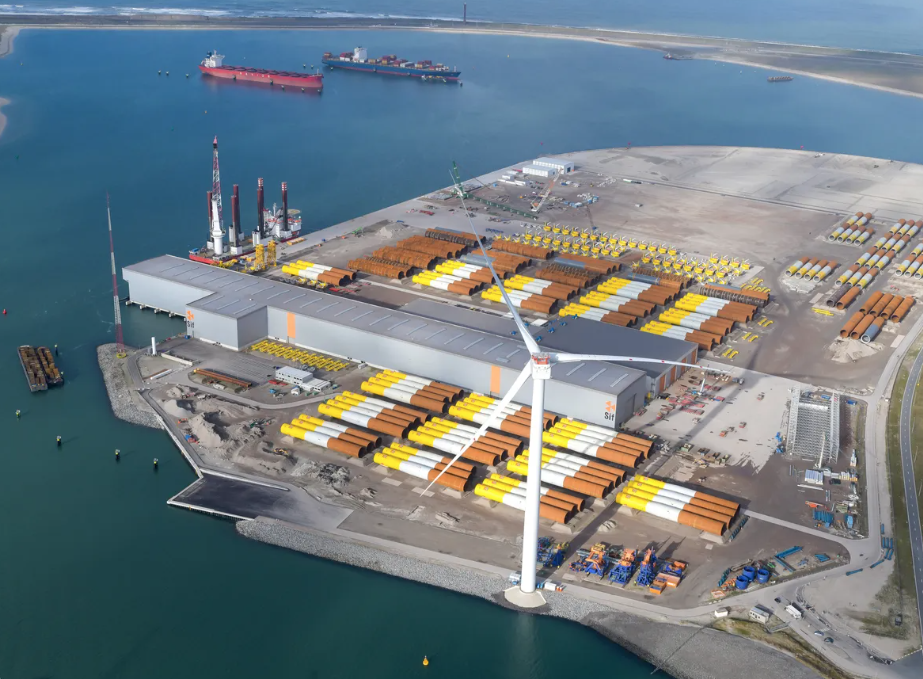
Should the outcome of the study be viable, the realization of the AmpHytrite demonstrator is preferably placed at Sif’s Maasvlakte 2 terminal in the Port of Rotterdam considering all current and future safety perimeters. The Maasvlakte 2 terminal enables the unit to be deployed in a safe manner without impacting Sif’s core business and possible future expansions. The demonstrator is planned for operational use and testing by 2023. The project scope, which is designed to simulate the complexity of having a centralized green H2 unit operating offshore and off-grid, would examine the end-to-end process: from the green electrons provided by the wind turbine generator to the required offtake profile for the onshore H2 customer. In doing so, the MoU would permit the parties to put in place a demonstration project to validate that a full commercial offshore, off-grid centralized green H2 windfarm project could be feasible. The MoU envisions that the project will have three phases. Phase one would involve a concept study in which project teams of KCI, Sif, Pondera and GE Renewable Energy carry out a feasibility study of offshore, off-grid centralized green H2 production. During the second phase, envisioned to be operational by 2023, a small-scale (producing approx. 750 tpy of green H2 onshore unit at Sif’s Maasvlakte 2 terminal is foreseen to be installed, solely powered by the Haliade turbine on site, as if being offshore and off-grid. The objective of this phase would be to develop and construct a smaller version of the main phase as proof of concept, taking on the full complexity of offshore and off-grid operation, whilst being installed onshore at the Sif terminal. The third phase would involve scaling up the concept to a total windfarm size at full scale, offshore and off-grid, using the tested technology of phase 2. |
|
| pageLayoutLeft | Plug Power lands 1 GW electrolyzer order with H2 energy Europe | 5/17/2022 1:06:09 PM | False | Plug Power lands 1 GW electrolyzer order with H2 energy Europe | Plug Power has been awarded an order to deliver a one-gigawatt electrolyzer to H2 company H2 Energy Europe. | Plug Power has been awarded an order to deliver a one-gigawatt electrolyzer to H2 company H2 Energy Europe. | Plug Power has been awarded an order to deliver a one-gigawatt electrolyzer to H2 company H2 Energy Europe. Planned for a green H2 production complex in Denmark, this is the largest capacity electrolyzer installation in the world to date. 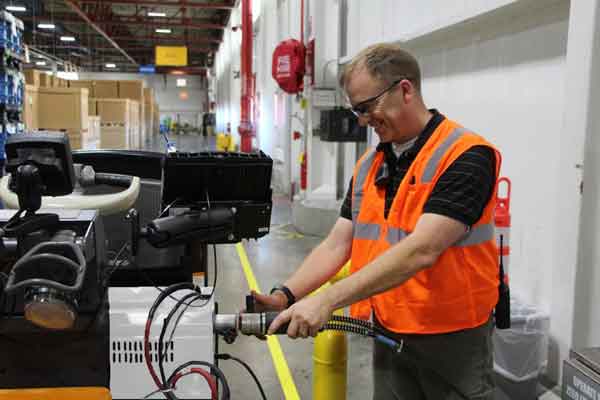
Harnessing offshore wind power, Plug’s electrolyzer technology will enable the production of up to 100,000 metric tpy of green H2 for use in the energy and transportation sector in northern Europe, supplying the fuel needed for the equivalent of approximately 15,000 heavy duty vehicles per day. Through its JV with Hyundai, H2 Energy will supply fleets of heavy-duty fuel cell trucks. In addition, earlier this year H2 Energy entered a joint venture with Phillips 66 to build more than 250 H2 refueling stations in Denmark, Germany and Austria supplied with green H2 from H2 Energy. Pairing Plug’s leading electrolyzer technology with H2 Energy Europe’s engineering capabilities and strong partnerships, this project is a major step towards reducing carbon emissions in the transportation sector for key countries in northern Europe while building energy security. “We see green hydrogen as the future and have made significant investments in green hydrogen including in the construction of a gigafactory for electrolyzer production,” said Andy Marsh, CEO of Plug. “Our operational readiness and manufacturing capacity were key determinants in our selection for the world’s largest order to date, and we are pleased to be a part of this project with H2 Energy.” Plug’s electrolyzer products destined for H2 Energy’s Danish complex will be manufactured at Plug’s gigafactory in Rochester, N.Y., the world's first and largest fuel cell and electrolyzer manufacturing gigafactory. Deployment of the technology at H2 Energy’s complex is expected in 2024, with production of green hydrogen in 2025. The H2 production complex, announced in September 2021 by the Danish government, will be located near Esbjerg and owned and operated by H2 Energy Europe. “Plug Power’s unique knowledge and market position within the green hydrogen ecosystem made our choice of collaboration very easy. We have the same ambitions to reduce CO2 emissions and create a world where hydrogen is the future of energy,” said Rolf Huber, Founder and CEO, H2 Energy. Swiss-headquartered H2 Energy Europe is a joint venture between commodity trading firm Trafigura Pte Ltd. and H2 Energy Holding AG. Through its affiliated companies, H2 Energy was the first to develop and deliver H2 fuel cell trucks to commercial users and create a green H2 fueling ecosystem in Switzerland. |
|
| pageLayoutLeft | Toagosei announces the commercial opening of Toagosei H2 station Tokushima | 5/17/2022 1:26:15 PM | False | Toagosei announces the commercial opening of Toagosei H2 station Tokushima | Toagosei Co. announced the commercial opening of Toagosei H2 Station Tokushima, which supplies H2 to fuel cell vehicles and fuel cell buses. | Toagosei Co. announced the commercial opening of Toagosei H2 Station Tokushima, which supplies H2 to fuel cell vehicles and fuel cell buses. | Toagosei Co. announced the commercial opening of Toagosei H2 Station Tokushima, which supplies H2 to fuel cell vehicles and fuel cell buses. 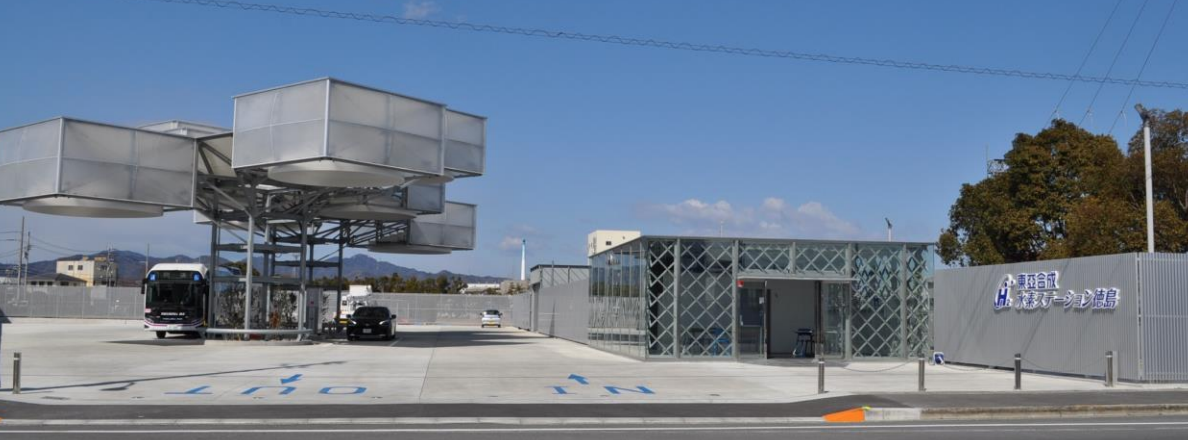
Toagosei is focusing on the utilization of H2 energy to promote the reduction of GHGs based on its target to achieve carbon neutrality by 2050 as part of its measures to prevent global warming. As part of these activities, the Company constructed Toagosei H2 Station Tokushima located next to its Tokushima plant, which manufactures H2. This H2 station is Japan’s first integrated manufacturing and supply-type H2 station. 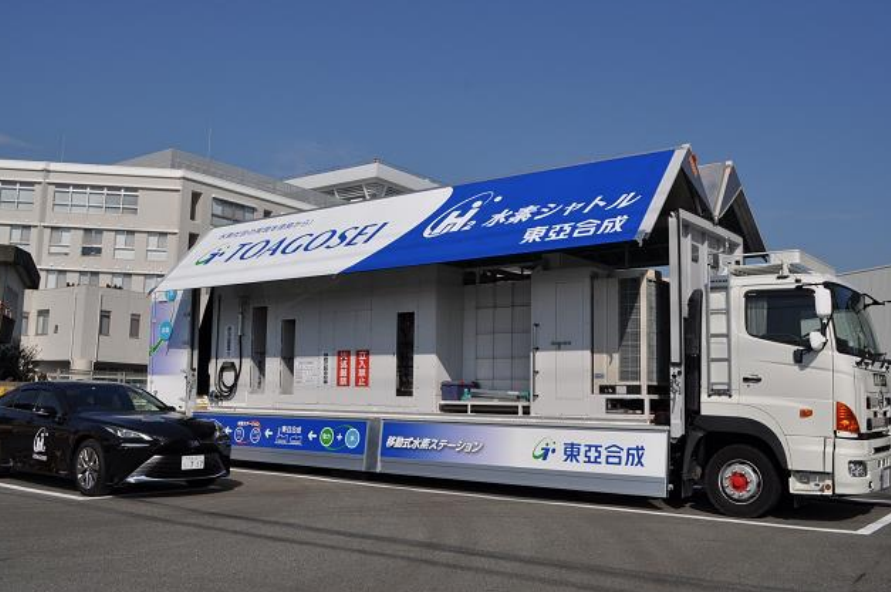
Costs are kept down because there is no cost to transport H2 to the station and CO2 emissions will not be produced in the transportation process, making this facility highly effective in our efforts to reach carbon neutrality. An opening ceremony was held on April 15 for both the station and the Company’s mobile H2 station called the Toagosei H2 H2 Shuttle, marking the official commercial opening. |
|
| pageLayoutLeft | Ultrathin fuel cell uses the body’s own sugar to generate electricity | 5/18/2022 9:30:42 AM | False | Ultrathin fuel cell uses the body’s own sugar to generate electricity | Engineers have developed a glucose power source that could fuel miniature implants and sensors. | Engineers have developed a glucose power source that could fuel miniature implants and sensors. | Engineers have developed a glucose power source that could fuel miniature implants and sensors. Glucose is the sugar we absorb from the foods we eat. It is the fuel that powers every cell in our bodies. Could glucose also power tomorrow’s medical implants? Engineers at MIT and the Technical University of Munich think so. They have designed a new kind of glucose fuel cell that converts glucose directly into electricity. The device is smaller than other proposed glucose fuel cells, measuring just 400 nanometers thick, or about 1/100 the diameter of a human hair. The sugary power source generates about 43 microwatts per square centimeter of electricity, achieving the highest power density of any glucose fuel cell to date under ambient conditions. The new device is also resilient, able to withstand temperatures up to 600°C. If incorporated into a medical implant, the fuel cell could remain stable through the high-temperature sterilization process required for all implantable devices. The heart of the new device is made from ceramic, a material that retains its electrochemical properties even at high temperatures and miniature scales. The researchers envision the new design could be made into ultrathin films or coatings and wrapped around implants to passively power electronics, using the body’s abundant glucose supply. “Glucose is everywhere in the body, and the idea is to harvest this readily available energy and use it to power implantable devices,” said Philipp Simons, who developed the design as part of his PhD thesis in MIT’s Department of Materials Science and Engineering (DMSE). “In our work we show a new glucose fuel cell electrochemistry.” “Instead of using a battery, which can take up 90% of an implant’s volume, you could make a device with a thin film, and you’d have a power source with no volumetric footprint,” said Jennifer L.M. Rupp, Simons’ thesis supervisor and a DMSE visiting professor, who is also an associate professor of solid-state electrolyte chemistry at Technical University Munich in Germany. Simons and his colleagues detail their design in the journal Advanced Materials. Co-authors of the study include Rupp, Steven Schenk, Marco Gysel, and Lorenz Olbrich. A “hard” separation The inspiration for the new fuel cell came in 2016, when Rupp, who specializes in ceramics and electrochemical devices, went to take a routine glucose test toward the end of her pregnancy. “In the doctor’s office, I was a very bored electrochemist, thinking what you could do with sugar and electrochemistry,” Rupp recalls. “Then I realized, it would be good to have a glucose-powered solid-state device. And Philipp and I met over coffee and wrote out on a napkin the first drawings.” The team is not the first to conceive of a glucose fuel cell, which was initially introduced in the 1960s and showed potential for converting glucose’s chemical energy into electrical energy. But glucose fuel cells at the time were based on soft polymers and were quickly eclipsed by lithium-iodide batteries, which would become the standard power source for medical implants, most notably the cardiac pacemaker. However, batteries have a limit to how small they can be made, as their design requires the physical capacity to store energy. “Fuel cells directly convert energy rather than storing it in a device, so you don’t need all that volume that’s required to store energy in a battery,” Rupp said. In recent years, scientists have taken another look at glucose fuel cells as potentially smaller power sources, fueled directly by the body’s abundant glucose. A glucose fuel cell’s basic design consists of three layers: a top anode, a middle electrolyte, and a bottom cathode. The anode reacts with glucose in bodily fluids, transforming the sugar into gluconic acid. This electrochemical conversion releases a pair of protons and a pair of electrons. The middle electrolyte acts to separate the protons from the electrons, conducting the protons through the fuel cell, where they combine with air to form molecules of water — a harmless byproduct that flows away with the body’s fluid. Meanwhile, the isolated electrons flow to an external circuit, where they can be used to power an electronic device. The team looked to improve on existing materials and designs by modifying the electrolyte layer, which is often made from polymers. But polymer properties, along with their ability to conduct protons, easily degrade at high temperatures, are difficult to retain when scaled down to the dimension of nanometers and are hard to sterilize. The researchers wondered if a ceramic — a heat-resistant material which can naturally conduct protons — could be made into an electrolyte for glucose fuel cells. “When you think of ceramics for such a glucose fuel cell, they have the advantage of long-term stability, small scalability, and silicon chip integration,” Rupp notes. “They’re hard and robust.” Peak power The researchers designed a glucose fuel cell with an electrolyte made from ceria, a ceramic material that possesses high ion conductivity, is mechanically robust, and as such, is widely used as an electrolyte in hydrogen fuel cells. It has also been shown to be biocompatible. “Ceria is actively studied in the cancer research community,” Simons notes. “It’s also similar to zirconia, which is used in tooth implants, and is biocompatible and safe.” The team sandwiched the electrolyte with an anode and cathode made of platinum, a stable material that readily reacts with glucose. They fabricated 150 individual glucose fuel cells on a chip, each about 400 nanometers thin, and about 300 micrometers wide (about the width of 30 human hairs). They patterned the cells onto silicon wafers, showing that the devices can be paired with a common semiconductor material. They then measured the current produced by each cell as they flowed a solution of glucose over each wafer in a custom-fabricated test station. They found many cells produced a peak voltage of about 80 millivolts. Given the tiny size of each cell, this output is the highest power density of any existing glucose fuel cell design. “Excitingly, we are able to draw power and current that’s sufficient to power implantable devices,” Simons said. “It is the first time that proton conduction in electroceramic materials can be used for glucose-to-power conversion, defining a new type of electrochemstry,” Rupp said. “It extends the material use-cases from hydrogen fuel cells to new, exciting glucose-conversion modes.” The researchers “have opened a new route to miniature power sources for implanted sensors and maybe other functions,” said Truls Norby, a professor of chemistry at the University of Oslo in Norway, who did not contribute to the work. “The ceramics used are nontoxic, cheap, and not least inert both to the conditions in the body and to conditions of sterilization prior to implantation. The concept and demonstration so far are promising indeed.” Jennifer Chu | MIT News Office |
|
| pageLayoutLeft | DNV to evaluate H2 suitability of Czech Republic natural gas pipeline | 5/18/2022 9:55:15 AM | False | DNV to evaluate H2 suitability of Czech Republic natural gas pipeline | DNV has been requested by NET4GAS to evaluate the H2 suitability of an existing DN 1400 pressure natural gas transmission pipeline and related stations. | DNV has been requested by NET4GAS to evaluate the H2 suitability of an existing DN 1400 pressure natural gas transmission pipeline and related stations. | DNV has been requested by NET4GAS, the international gas transmission system operator based in the Czech Republic to evaluate the H2 suitability of an existing DN 1400 pressure natural gas transmission pipeline and related stations. As a Central European gas transmission system operator, NET4GAS is an important player in the European gas market and is one of the sponsors of the European Hydrogen Backbone initiative that believes a European H2 infrastructure is needed for Europe to achieve its climate and energy objectives and greater energy independence. The initiative is aimed at building a H2 infrastructure, primarily based on repurposing existing gas networks, and effectively connecting major (potential) H2 production and consumption sites, where NET4GAS will, due to its geographical position play an important role in such connections. In addition, NET4GAS is one of the founders of the initiative Central European Hydrogen Corridor. NET4GAS has initiated a large-scale internal project with the aim of mapping the existing infrastructure and its preparedness for the transmission of pure H2 and various H2 blends with natural gas. 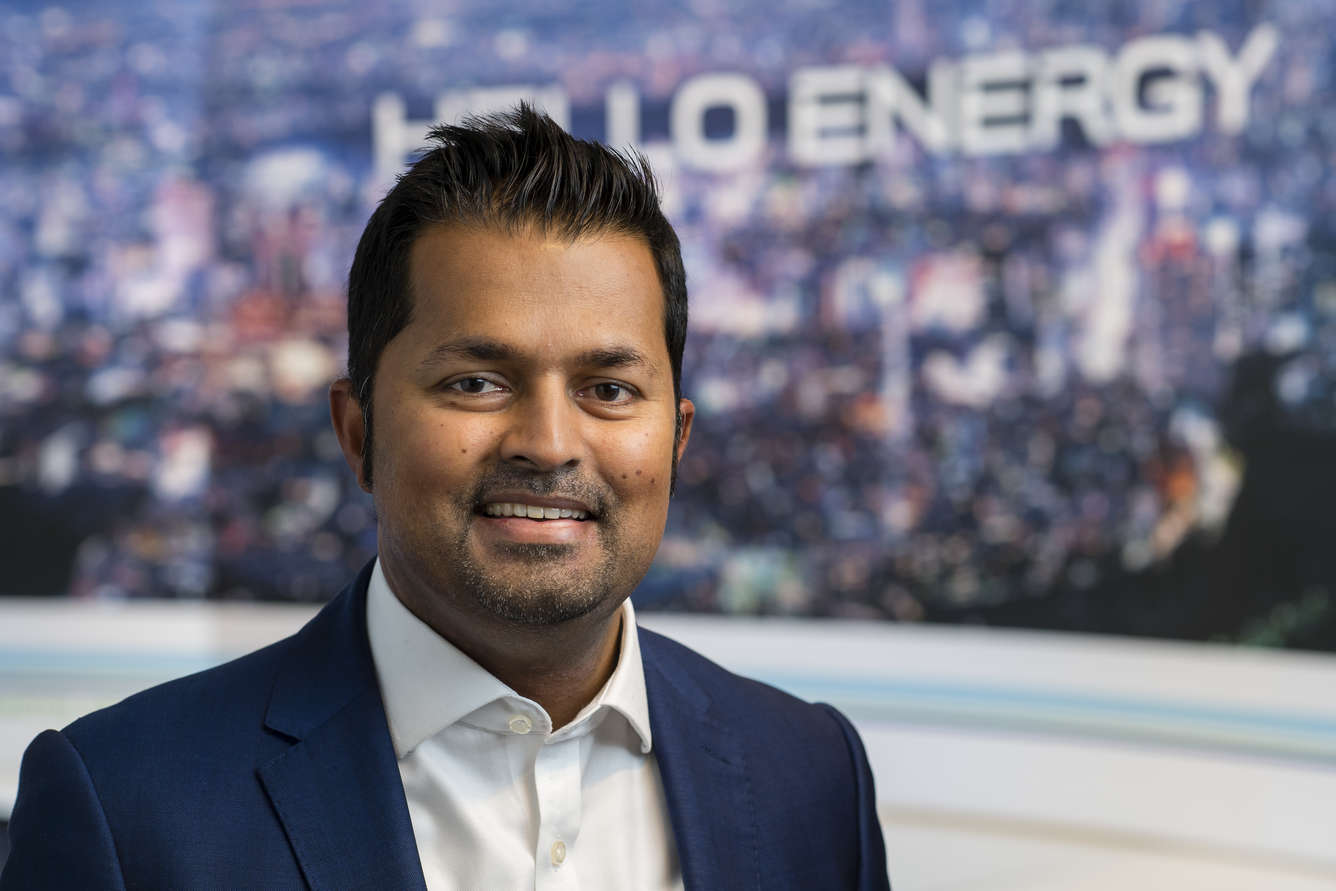
Prajeev Rasiah
In this regard, DNV is investigating different scenarios for mixtures of H2 and natural gas within a range of percentages starting from 2% up to 100% H2. The complex assessment of DN 1400 includes integrity aspects as well as safety, metering, operation and maintenance topics. Conceptual guidance is provided by the American Society of Mechanical Engineers B31.12 code, the European Industrial Gases Association, and Industrial Gases Council guidelines, and is heavily complemented by in-house DNV knowledge. Prajeev Rasiah, Executive Vice President for Energy Systems, Northern Europe at DNV said “It's really encouraging to see another major hydrogen project taking place in Europe and with NET4GAS leading the way in Europe with other gas infrastructure companies. At DNV we see developing and repurposing an efficient hydrogen infrastructure as a key area to advance. This will ensure that Europe and society globally can gain the full benefits of this low emission energy source in the drive to reduce CO2 emissions and reach the Paris agreement targets of 1.5°C.” 
Victoria Monsma
“The assessment for NET4GAS involves a network of DNV industry-recognized experts from The Netherlands, UK, Germany and the U.S working in different areas including material testing, pipeline integrity, safety and metering and flow acoustics. Using our technical knowledge and gas network understanding we can provide NET4GAS with a tailor-made solution and help them to make an informed decision with regards to the conversion of their assets to hydrogen,” said Victoria Monsma, Pipeline Integrity Specialist, Energy Systems at DNV who was responsible for the overall integrity assessment. |
|
| pageLayoutLeft | Chevron launches CCS project in San Joaquin Valley, California | 5/18/2022 10:23:02 AM | False | Chevron launches CCS project in San Joaquin Valley, California | Chevron announced it is launching a CCS project aimed at reducing the carbon intensity of its operations in San Joaquin Valley, California. | Chevron announced it is launching a CCS project aimed at reducing the carbon intensity of its operations in San Joaquin Valley, California. | Chevron announced it is launching a carbon capture and storage (CCS) project aimed at reducing the carbon intensity of its operations in San Joaquin Valley, California. Chevron aims to reduce its carbon intensity - the amount of CO2 emitted per unit of energy produced - by installing CO2 post-combustion capture equipment, capturing the CO2, and then safely storing it thousands of feet underground. This CCS initiative would begin at Chevron’s Kern River Eastridge cogeneration plant in Kern County, California. 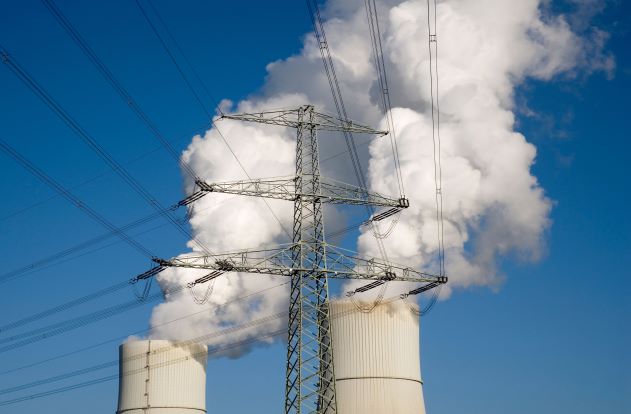
“At Chevron, we believe the future of energy is lower carbon. Reducing the carbon intensity of the energy people rely on day-in and day-out is well-aligned with the ambitions of the Paris Agreement,” said Chris Powers, vice president of carbon capture, utilization, and storage (CCUS) for Chevron New Energies. “We are excited about the opportunity to collaborate and progress this CCS initiative in San Joaquin Valley, a region where we have lived and worked for over a century.” Chevron has applied to obtain a Conditional Use Permit with the Planning and Natural Resources Department of Kern County and will continue to work with appropriate regulators throughout the process. In addition to the Eastridge cogeneration project, Chevron is currently evaluating and deploying multiple carbon capture technology demonstrations to mature more efficient and cost-effective capture solutions, potentially enabling future projects, not only for Chevron, but for other industries. “As Chevron advances to a lower carbon future, we’re identifying ways to advance our operations as well, so we can continue to provide local jobs, support the local economy, and generate local government revenue that supports critical community services,” said Molly Laegeler, vice president, San Joaquin Valley (SJV), Chevron. “We are excited about this Chevron New Energies project and fostering continued collaboration with local regulators throughout this process, not only to position the region to benefit from these lower carbon solutions, but that we continue to protect people and the environment. We believe this project has the potential to benefit the region on many levels and that Kern County is an ideal location for carbon capture and storage.” An August 2020 report by the Lawrence Livermore National Laboratory that highlighted opportunities for California to become carbon neutral noted, “there are various options for geologic storage sites in the state, but we have identified the most promising first candidates in San Joaquin County and in Kern County,” due to the regions’ geologic and subsurface characteristics, as well as the existing oil and natural gas production. Chevron is also actively exploring additional opportunities to lower the carbon intensity of its SJV operations, including the blending of H2 with natural gas in combustion, and the potential use of other emerging lower carbon technologies, such as geothermal. Project support: Kern Economic Development Corporation President and CEO Richard Chapman said “We have a long history of working with Chevron and have appreciated their significant involvement in our community and the role they have played in Kern County. We are excited to see their commitment to lowering the carbon footprint of their local operations and look forward to seeing the innovation and technology they plan to deploy. These efforts aim to ensure job security and workforce development opportunities and maintain the quality of life we enjoy here.” State Building & Construction Trades Council of California President Andrew Meredith said “Energy transition efforts such as this project have the potential to create a significant number of good-paying jobs. There are also several skills in oil and gas jobs that are transferable to new energies, especially CCUS. We appreciate Chevron’s continued commitment to California and our workers.” CA State Sen. Anna Caballero said “As we enter our hottest time of the year, we need to be sure we have enough energy to prevent brownouts and blackouts. This project is designed to serve a dual purpose: ensure we have electricity when we need it and help provide climate action for our Central Valley and California.” |
|
| pageLayoutLeft | Sumitomo Corporation, Promigas enter agreement to accelerate H2 mobility in Colombia | 5/18/2022 10:38:26 AM | False | Sumitomo Corporation, Promigas enter agreement to accelerate H2 mobility in Colombia | Sumitomo Corporation and Promigas announced their intent to collaborate on the development of H2 mobility solutions in Colombia. | Sumitomo Corporation and Promigas announced their intent to collaborate on the development of H2 mobility solutions in Colombia. | Sumitomo Corporation and Promigas announced their intent to collaborate on the development of H2 mobility solutions in Colombia. The purpose of this agreement is to establish a collaboration between the two companies to assess the opportunities related to H2 mobility within the Colombian marketplace. This includes studying and analyzing the market for developing a Proof of Concept, and then analyzing the potential of a commercially viable solution for the transportation and logistics sectors within the country. 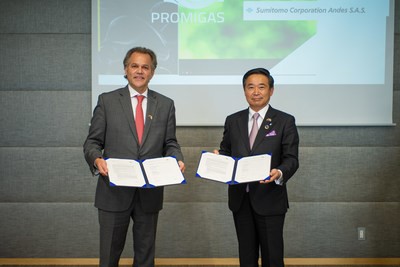
"We are excited to begin this collaboration with Promigas, a widely-respected company and trusted partner within the energy industry," said Takahiro Saito, President, Sumitomo Corporation Andes. "I believe that Sumitomo's vast global network and resources, paired with Promigas' operational excellence and local knowledge, will make this collaboration a success." "It is an honor to join forces with a global organization so rich in history, values and experience," said Mr. Juan Manuel Rojas Payán, President, Promigas. "Hydrogen is leading the revolution in mobility transformation, and our combined experience brings the right kind of resources together to create real, scalable solutions for the future mobility industry in Colombia, and even beyond." Sumitomo Corporation in the Americas has emerged as a strong supporter of H2 technology, especially in the mobility space. Last year, Sumitomo Corporation of Americas invested in OneH2, a H2 production and distribution company providing fuel for immediate use, primarily for forklifts, throughout the U.S. The company also joined the Japanese H2 Forum, which is comprised of a group of leading Japanese affiliated companies with hydrogen businesses in the U.S. that are intent on providing the latest information regarding technology and policy in H2 energy sectors, including state-of-art integrated H2 solutions to support the adoption from governments throughout the country. Promigas has a proven track-record connecting markets in Peru and Colombia to stable energy sources and generating value through responsible environmental management. Experience aside, both companies are rooted in values that go beyond business objectives and share the same vision of enriching society through sustainable development. |
|
| pageLayoutLeft | H2 Clipper, the Foundation for the Development of New Hydrogen to collaborate on advancing the green H2 revolution | 5/18/2022 11:30:39 AM | False | H2 Clipper, the Foundation for the Development of New Hydrogen to collaborate on advancing the green H2 revolution | H2 Clipper announces a collaboration agreement with the Foundation for the Development of New Hydrogen Technologies to establish a framework for the feasibility testing of H2 Clipper’s technologies for transporting and distributing H2 worldwide. | H2 Clipper announces a collaboration agreement with the Foundation for the Development of New Hydrogen Technologies to establish a framework for the feasibility testing of H2 Clipper’s technologies for transporting and distributing H2 worldwide. | H2 Clipper announces a collaboration agreement with the Foundation for the Development of New Hydrogen Technologies, located in Aragon, Spain. The purpose of the agreement is to establish a framework for the feasibility testing of H2 Clipper’s technologies for transporting and distributing H2 worldwide, including the patented Pipeline-In-The-Sky and Pipe-Within-A-Pipe. The agreement was signed on May 16, 2022, by Foundation President Arturo Aliaga Lopez and H2 Clipper Founder and CEO Rinaldo Brutoco during a formal ceremony at the Foundation’s facilities. 
With the joint goal of advancing solutions to decarbonize the EU’s extensive natural gas grid, H2 Clipper and the Foundation will work together to:
Brutoco said, “We are honored and excited to partner with the Foundation in a mutually beneficial effort to plan, design, construct and validate feasibility of H2 Clipper’s technologies for hydrogen transport and distribution throughout Europe, including through the region’s existing natural gas pipeline network. These technologies have significant implications for the renewable energy future of the EU and for Europe’s ability to become independent of Russian oil.” Aliaga Lopez said, “The EU has set a binding target to cut greenhouse gas emissions by 45% below 1990 levels by 2030. Green hydrogen produced through renewable-powered electrolysis will be critical for decarbonizing electricity and gas markets. This may be realized by delivering hydrogen through current natural gas pipeline networks utilizing H2 Clipper’s novel Pipe-Within-A-Pipe technology. By collaborating with energy technology companies like H2 Clipper, we are advancing the Foundation’s mission to significantly reduce fossil fuel usage.” |
|
| pageLayoutLeft | Koil Energy Solutions to provide H2 energy services | 5/19/2022 9:26:22 AM | False | Koil Energy Solutions to provide H2 energy services | Koil Energy Solutions announced the receipt of an order to provide H2 energy related services. This is the company’s first commercial success in support of the energy transition. | Koil Energy Solutions announced the receipt of an order to provide H2 energy related services. This is the company’s first commercial success in support of the energy transition. | Koil Energy Solutions, formerly known as Deep Down, Inc. announced the receipt of an order to provide H2 energy related services. Following its recent rebrand, this is the company’s first commercial success in support of the energy transition. “This award, direct from a major energy producer, validates our strategy to shift focus from core products and services to core competencies, confirms the viability of our decision to rebrand the company, and supports our relocation to a facility geared towards compartmentalized production of a diverse suite of products,” said Charles Njuguna, President and CEO of Koil Energy Solutions, Inc. “Being selected to provide solutions for a nascent industry is a testament to the transferability of expertise developed over the past 25 years.” The project will initially focus on storage, management and enhancement of customer furnished materials utilizing Koil’s alloy welding and other fabrication capabilities. Following validation of early-stage activities, future phases could lead to systems integration activities potentially including the commissioning of systems being developed for the retail consumer market. “This is a critical project for the company, as it allows us to showcase our ability to support the energy transition,” said Njuguna. “Being able to offer services for onshore applications further highlights the breadth of opportunities available to us.” |
|
| pageLayoutLeft | HIF Global launches eFuels company in Germany | 5/19/2022 9:55:21 AM | False | HIF Global launches eFuels company in Germany | HIF Global continues its global expansion with the launch of HIF EMEA headquartered in Berlin, Germany. HIF EMEA will anchor eFuels from HIF Global’s production facilities worldwide to the EMEA region. | HIF Global continues its global expansion with the launch of HIF EMEA headquartered in Berlin, Germany. HIF EMEA will anchor eFuels from HIF Global’s production facilities worldwide to the EMEA region. | HIF Global continues its global expansion with the launch of HIF Europe, Middle East and Africa (HIF EMEA) headquartered in Berlin, Germany, with Armin Schnettler named as President and Thorsten Herdan as CEO of HIF EMEA. HIF EMEA will anchor eFuels from HIF Global’s production facilities worldwide to the EMEA region beginning with the operations of the Haru Oni facility in late 2022 in Magallanes, Chile. Furthermore, HIF EMEA will develop eFuel projects in the region for the region. César Norton, President and CEO of HIF Global said, “We are building a global presence and elite team to fight climate change and accelerate decarbonization. HIF EMEA, under the leadership of Armin Schnettler and Thorsten Herdan, will focus on providing carbon-neutral electricity-based fuels, also known as eFuels, to the EMEA region to speed up decarbonization and improve the security of energy supply.” Armin Schnettler, President of HIF EMEA said, “We need many solutions to support the growing demand for energy worldwide in ways that reduce carbon emissions. When utilizing eFuels, which are produced from renewable electricity, hydrogen, and recycled CO2, we can further decarbonize the transport sector and significantly accelerate the hydrogen economy today in a way that is sustainable, competitive, and secure.” “Innovative energy solutions and diversification are the heartbeat of the global economy and society. At HIF EMEA, we are preparing for deliveries of eFuels to Europe later in 2022, following the inauguration of the Haru Oni facility under construction today in Magallanes, Chile. The expansion of eFuels into European, Middle Eastern and African markets will bring renewable energy to millions of existing vehicles, ships and airplanes, without any modification to required infrastructure,” said Thorsten Herdan, CEO HIF EMEA. |
|
| pageLayoutLeft | WATT Fuel Cell increases efficiency of its fuel cells, reduces CO2 emissions | 5/19/2022 10:15:01 AM | False | WATT Fuel Cell increases efficiency of its fuel cells, reduces CO2 emissions | WATT Fuel Cell announced a technological advancement that increases the efficiency of its fuel cells and reduces their CO2 emissions using a new catalytic partial oxidation fuel processing technology. | WATT Fuel Cell announced a technological advancement that increases the efficiency of its fuel cells and reduces their CO2 emissions using a new catalytic partial oxidation fuel processing technology. | WATT Fuel Cell announced a technological advancement that dramatically increases the efficiency of its fuel cells and reduces their CO2 emissions. WATT achieved the breakthrough efficiency gain by employing a new catalytic partial oxidation (CPOX) fuel processing technology combined with its innovative Additive Manufacturing Process (AMP), a 3D printing process that enables them to tailor the composition and microstructure of their solid oxide fuel cells (SOFCs). WATT's process results in superior performance and thermal shock capabilities that are not achievable with traditional SOFC manufacturing processes. "One of WATT's biggest advantages is that we develop and manufacture our own fuel cell and fuel processing technologies here in the U.S., which we then integrate into our systems. This level of vertical integration enables us to rapidly develop and implement innovative ideas and stay at the cutting edge of SOFC technology. Our technology was already outperforming other similar fuel cell system efficiencies by 10-15%; this advancement continues to extend that advantage," said Caine Finnerty, WATT's President, COO, and founder. The development results from an innovative CPOX reforming process, leading to >50% efficiency in WATT's SOFCs, besting competitors by an additional 10%. CPOX reforming, the combination of air and fuel to produce H2, is used for its simplicity, ability to cycle, and lower price point. The process traditionally yields a lower efficiency than steam reforming, which involves processing fuel with steam rather than air. WATT's new technology levels the playing field, delivering performance comparable to steam-based systems, without the disadvantages of the additional components and costs. A case study analyzing the impacts of the increased efficiency for deployment of the Imperium residential fuel cell systems by a mid-Atlantic gas utility indicates 40% avoided CO2 emissions. WATT is gaining business momentum as the company levers EQT's recent investment, announced in February 2022, and continues preparations to commercialize the Imperium unit. "The firm's ongoing work with Peoples Gas over the past three years, and now EQT's engagement, will enable us to enter the residential market and harvest opportunities we have been pursuing for industrial/business fuel cell commercialization," said Rich Romer, WATT's CEO. |
|
| pageLayoutLeft | ZMHT, Element 1 partner to deliver H2 technology to greater China | 5/19/2022 5:06:00 PM | False | ZMHT, Element 1 partner to deliver H2 technology to greater China | Element 1 has announced the formation of a JV with Zhejiang Methanol Hydrogen Technology to drive methanol-based H2 generation technology and commercialize e1NA’s technology throughout greater China. | Element 1 has announced the formation of a JV with Zhejiang Methanol Hydrogen Technology to drive methanol-based H2 generation technology and commercialize e1NA’s technology throughout greater China. | Element 1 (e1NA) has announced the formation of a JV with Zhejiang Methanol Hydrogen Technology (ZMHT) to drive methanol-based H2 generation technology and commercialize e1NA’s unique technology throughout greater China. The new JV, named Zhejiang Hydrogen One Energy Technology will have rights to sell e1NA’s S-Series product for applications in backup power generation, the M-Series for on-board vehicle H2 generation, and the L-Series product for EV charging, H2 refueling stations and distributed power generation. The JV will work with listed companies across China to develop integrated H2 production and fueling stations in Qingdao, Wuhan, Jiaxing, Wuxi and other cities. These public companies will be investors in a network of H2 production and fueling stations which will be installed throughout China between 2022 and 2025. The H2 generators produced by the JV under license from e1NA use methanol and water as feedstock resulting in cost effective onsite production of H2 and a significant reduction in CO2 emissions and local air pollution when compared to gas and oil. This energy generation can be fully carbon-neutral when using renewable methanol. Under the agreement, ZMHT will receive a 70% ownership interest in the new JV company and will invest additional capital in stages according to the pace of market development. e1NA has granted the JV an exclusive license for Greater China and will have a 10% direct ownership interest in the JV. e1China, an affiliate company of e1NA will have a 20% ownership interest in the JV. Dr. Dave Edlund, the founder and CEO of e1NA said, “I’m delighted with this new partnership which has been formed to deliver hydrogen solutions that will significantly reduce the carbon intensity as well as other harmful emissions (particulate matter, NOx, and SOx) traditionally associated with burning fossil fuels. Whereas fuel cell technology has matured substantially over recent decades, the supply of hydrogen as feedstock to fuel cells has lagged considerably, resulting in significant logistic and economic challenges to the wide-scale deployment of fuel cells. e1NA’s methanol-to-hydrogen technology offers a broad solution to this challenge and is also well suited to support hydrogen combustion engines.” “The cooperation with Element 1 means that China will have a break-through solution on hydrogen production and refueling stations,” said Mr. Zhu Foqing, an industry expert in China's energy field and legal representative of ZMHT. “Through small-size distribution hydrogen production systems, hydrogen stations can produce hydrogen with high-density liquid methanol carrying hydrogen, to completely solve the high logistics cost of hydrogen fuel transportation. Therefore, the utilization of hydrogen energy can be rapidly popularized in a way acceptable to the market. “The e1NA patented technology incorporates decades of R&D effort focused on small scale hydrogen production systems. This, coupled with the JV’s near-term commercial opportunity of 300 hydrogen refueling stations will bring new impetus to the utilization of hydrogen energy in Greater China.” |
|
| pageLayoutLeft | CIP, Allianz Investment Management to conduct feasibility study on German energy island | 5/20/2022 10:27:15 AM | False | CIP, Allianz Investment Management to conduct feasibility study on German energy island | Copenhagen Infrastructure Partners and Allianz Investment Management have agreed to jointly conduct a feasibility study in respect of an artificial energy island in the German North Sea. | Copenhagen Infrastructure Partners and Allianz Investment Management have agreed to jointly conduct a feasibility study in respect of an artificial energy island in the German North Sea. | Copenhagen Infrastructure Partners (CIP) and Allianz Investment Management (AIM) have agreed to jointly conduct a feasibility study in respect of an artificial energy island in the German North Sea. The island is intended to be connected to large-scale offshore wind farms to cost-effectively deliver large-scale renewable energy to the German market. The study is a response to the ambitious announcements made by the German government concerning an accelerated green transition, and the declaration from the May 18, 2022, summit between Germany, Denmark, Belgium and the Netherlands setting the course for regional cooperation aimed at exploiting the enormous potential of the green power plant in the North Sea. Germany has some of the best natural conditions in the world for offshore wind with a combination of high wind speeds and relatively low water depths. This creates attractive conditions for building large-scale offshore wind farms and artificial islands. The energy islands will allow to collect and utilize energy resources located in areas in the North Sea that are otherwise more difficult and more costly to access. Energy islands create an onshore environment at an offshore location which makes it possible to build cost-effectively electrical infrastructure and produce green H2 offshore – renewable energy that can be transported to demand centers in a cost optimized way. If targets set for the green energy transition are to be achieved, the concept of energy islands is one of the most effective ways to ensure speed, volume and the production of renewables on a large-scale that can be integrated into existing energy grids. The power and green H2 from energy islands will be connected to the public grids in Germany to provide a sizeable contribution to domestic energy production and security of supply. Energy islands and wind turbine marine structures will furthermore provide a contribution to biodiversity in the North Sea as these structures create artificial reefs offering shelter for multiple species. CIP and AIM are eager to involve further German stakeholders into the potential development of the energy island and the connected offshore wind. |
|
| pageLayoutLeft | CIP proposes to build a H2 island in the North Sea by 2030 | 5/20/2022 10:40:21 AM | False | CIP proposes to build a H2 island in the North Sea by 2030 | Copenhagen Infrastructure Partners proposes to build an artificial island dedicated to large-scale production of green H2 from offshore wind. | Copenhagen Infrastructure Partners proposes to build an artificial island dedicated to large-scale production of green H2 from offshore wind. | Copenhagen Infrastructure Partners (CIP) proposes to build an artificial island dedicated to large-scale production of green H2 from offshore wind – called “BrintØ” (in English: Hydrogen Island) – in the Danish part of the North Sea. The island is expected to be able to supply an unprecedented amount of green hydrogen by 2030 and will thus be a crucial step in securing Europe’s future green energy supply. The BrintØ project provides a significant contribution to reaching the ambitious targets set by the Danish government earlier this year, as well as the transnational political will demonstrated at the North Sea Summit held the 18th of May in Esbjerg, Denmark. “The Danish, German, Dutch, and Belgian ambitions for the North Sea show the rest of the world how the green transition can be turbocharged if you dare to think big, internationally and in integrated systems. Green energy will be harvested on a large scale out at sea, tied together by energy islands, converted into green hydrogen, and transported across borders via offshore hydrogen infrastructure. The opportunities are significant, and the Danish BrintØ is the first step in that direction,” said Thomas Dalsgaard, Partner at CIP. BrintØ could be a first-of-its-kind. BrintØ – and over time other adjacent energy islands – will produce very large amounts of green H2 from offshore wind for export to nearby countries, e.g. Germany, the Netherlands, and Belgium. BrintØ will thus create a foundation to produce sustainable green fuels via Power-to-X for trucks, ships and aircrafts. BrintØ can become a showcase for Danish competencies within offshore wind, Power-to-X and green energy systems. This will lead to new export opportunities for Denmark, and thus contribute to significant economic growth and local job creation. BrintØ is envisaged to be established on the Danish part of Dogger Bank; an area expected to become a central hub for the future build-out of offshore energy infrastructure in the North Sea. The area consists of a 20,000 km2 sandbank and offers some of the world’s best conditions for producing low-cost green electricity, due to low water depths and strong wind resources. With BrintØ, Denmark therefore has a unique opportunity to secure a strategic role in relation to the expected development of a wide-ranging network of offshore infrastructure, spanning from energy islands to power cables and H2 pipelines, across the North Sea’s territorial boundaries. “It is critical that the Danish flag is planted quickly and strategically in the new expansion of green energy infrastructure in the North Sea. This will help to ensure that both our and future Danish and European generations can continue to benefit from the sustainable and inexhaustible energy source that the North Sea offers,” said Thomas Dalsgaard. Facts about BrintØ
Click here to see a video of the vision for the project. |
|
| pageLayoutLeft | Vattenfall wins £9.3 MM funding boost for world’s first H2-producing offshore wind turbine | 5/20/2022 10:58:57 AM | False | Vattenfall wins £9.3 MM funding boost for world’s first H2-producing offshore wind turbine | Vattenfall has been awarded £9.3 MM in innovation funding from the UK Government to develop the world’s first H2-producing offshore wind turbine. | Vattenfall has been awarded £9.3 MM in innovation funding from the UK Government to develop the world’s first H2-producing offshore wind turbine. | Vattenfall has been awarded £9.3 MM ($11.6 MM) in innovation funding from the Net Zero Innovation Portfolio Low Carbon Hydrogen Supply 2 fund by the UK Government. The funding will be used to develop the world’s first H2-producing offshore wind turbine, with the electrolyzer sited directly onto an existing operational turbine. 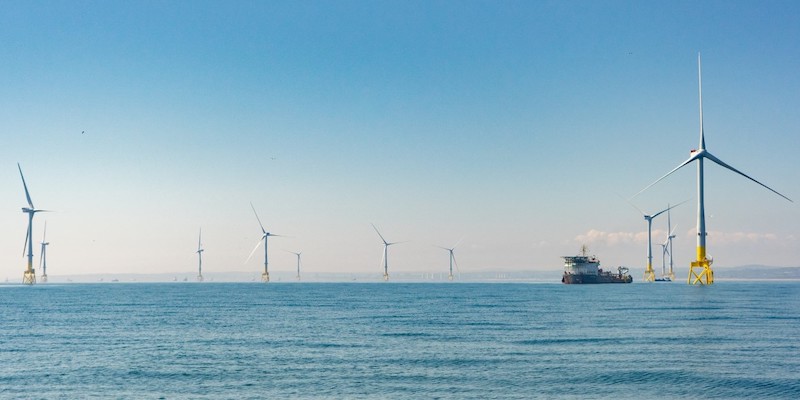
Aberdeen offshore wind farm
The pilot project at Vattenfall’s offshore wind farm in Aberdeen Bay will have an output of 8 MW and will be able to produce enough H2 every day to power a H2 bus to travel 24,000 kilometers. The H2 will be piped to shore at Aberdeen Harbor. “We are very happy with the Government funding. Placing hydrogen electrolyzers on offshore wind turbines is likely to be the quickest and cheapest way of providing fossil-free hydrogen at scale,” said Danielle Lane, UK Country Manager for Vattenfall. The project—called Hydrogen Turbine 1 (HT1)—aims to be first project in the world to test the full integration of H2 production with an offshore wind turbine. HT1 will also map out development and consent processes for large-scale H2 projects co-located with offshore wind farms to speed up future development. The availability of large quantities of fossil-free H2 will play a key role in the decarbonization of heavy industry (predominantly in steel, chemicals, and fertilizer production as well as refining), as well as heavy transport. Work will commence immediately with the goal of first production as early as 2025. |
|
| pageLayoutLeft | Alstom, PKN ORLEN to collaborate on H2 railway | 5/20/2022 11:18:51 AM | False | Alstom, PKN ORLEN to collaborate on H2 railway | PKN ORLEN has signed a strategic cooperation agreement with Alstom for the supply of zero-emission, eco-friendly trains and H2 fuel for public rail transport. | PKN ORLEN has signed a strategic cooperation agreement with Alstom for the supply of zero-emission, eco-friendly trains and H2 fuel for public rail transport. | PKN ORLEN has signed a strategic cooperation agreement with Alstom for the supply of zero-emission, eco-friendly trains and H2 fuel for public rail transport. The corporation, which is consistently implementing the H2 strategy, announced earlier this year, that it will provide the refueling infrastructure for trains produced by Alstom. The first H2 vehicles are likely to roll out on regional lines within two years. 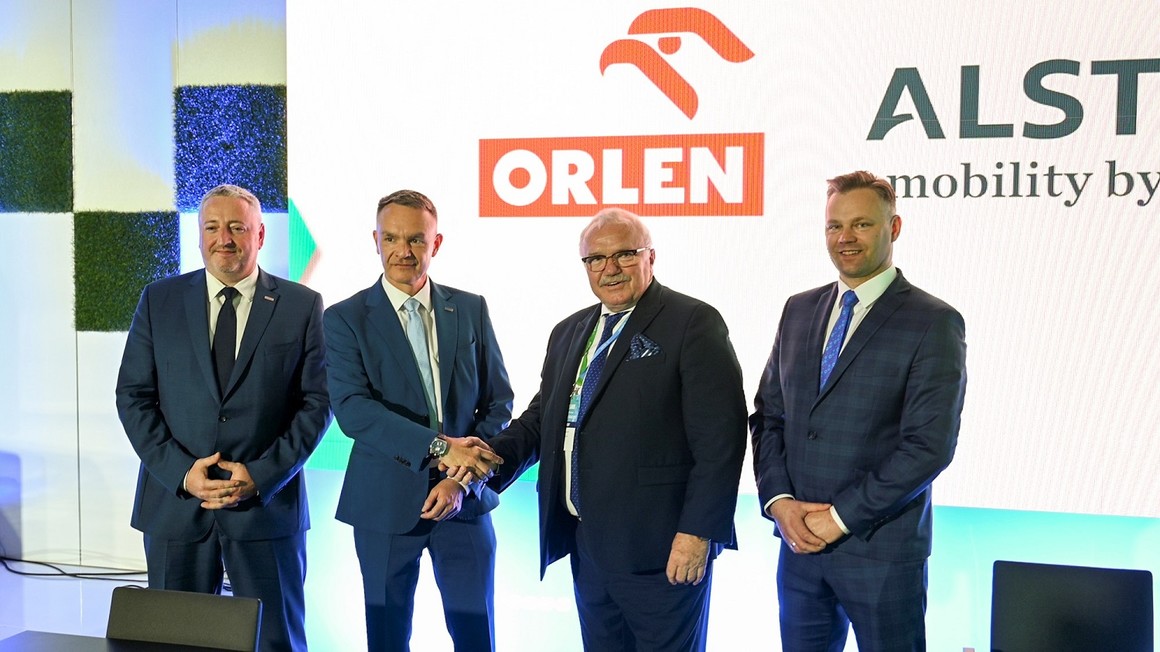
“We are effectively implementing our hydrogen strategy, which supports our efforts to achieve carbon neutrality. By 2030, we intend to allocate about PLN $7.5 B into investments. This will translate into a reduction of 1.6 MMt of CO2 emissions and, most importantly, an increase in Poland's energy security. Cooperation with Alstom is another important step that will strengthen our position as a regional leader in hydrogen technologies,” said Daniel Obajtek, President of the PKN ORLEN Management Board. Under the agreement, Alstom will cooperate with PKN ORLEN in participating in proceedings organized by public rail transport operators. Alstom will be responsible for the supply of zero-emission trains powered by H2 fuel cells. In turn, PKN ORLEN will be responsible for the distribution, storage and supply of H2 fuel for these trains. “Alstom is a pioneer in developing hydrogen technology for rail transport. In 2018, we were the world's first manufacturer to put the Coradia iLint hydrogen train into commercial service. Cooperation with PKN ORLEN will allow us to more effectively realize our ambition of technological leadership in rail transport, as well as Poland's ambition as one of the key countries where hydrogen technologies are being developed and implemented. The main motivation for working on hydrogen technologies is the need to look for emission-free energy sources, also in transport. Increasing zero-emission rail traffic means less pollution and lower CO2 emissions,” said Artur Fryczkowski, Vice-President and Head of Sales and Business Development of Alstom in Poland, Ukraine and the Baltic States. |
|
| pageLayoutLeft | ITM Power wins £9.3 MM to develop 5 MW Gigastack testing platform | 5/20/2022 11:49:10 AM | False | ITM Power wins £9.3 MM to develop 5 MW Gigastack testing platform | ITM Power announces that they have been awarded a contract to accelerate the commercial deployment of ITM Power’s 5 MW Gigastack platform and its manufacture. | ITM Power announces that they have been awarded a contract to accelerate the commercial deployment of ITM Power’s 5 MW Gigastack platform and its manufacture. | ITM Power announces that they have been awarded a contract by The Department for Business, Energy and Industrial Strategy (BEIS), under its Net Zero Innovation Portfolio Low Carbon Hydrogen Supply 2 Competition, to accelerate the commercial deployment of ITM Power’s 5 MW Gigastack platform and its manufacture. The award for the Gigatest project is for £9.3 MM and follows initial designs developed through previous BEIS funding competitions. 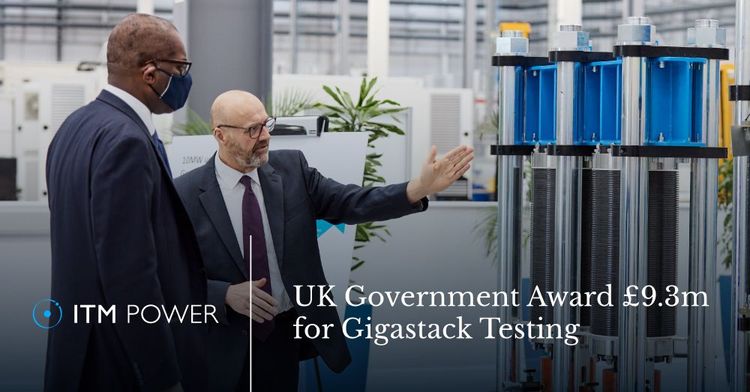
The 5 MW Gigastack platform sits at the heart of the Group’s technology roadmap. Development commenced in 2019 with the completion of a feasibility study funded by the BEIS Low Carbon Hydrogen Supply Competition. This was followed by a second phase, also funded by the BEIS Low Carbon Hydrogen Supply Competition and covered two streams: a front-end engineering design study for a 100 MW deployment at Philips66 and Orsted in the Humber region and the development and validation of the Gigastack platform. The second phase concluded in 2021. As announced in the half year results in January, the testing program for the 5 MW Gigastack platform includes both component level and full-scale evaluation. Gigastack is 2.5 times larger than ITM Power’s previous state-of-the-art stack platform and it will undergo rigorous testing in representative conditions to validate the performance through real-world conditions, ensuring the technology is ready for large-scale commercialization. This 4th-generation stack has multiple competitive advantages including lower capital costs and a smaller system footprint. These advantages will enhance the stack’s ability to operate under flexible conditions when coupled to renewable energy sources, producing green H2 at low cost. Gigatest will also enable the deployment and validation of key manufacturing equipment at the existing Gigafactory and the second, more automated facility on which construction commences later this year. This validation will contribute to the subsequent initiation of semi-automated mass-production of electrolyzer stacks. Graham Cooley, CEO said, “The UK Government has put green hydrogen at the center of its plans to achieve its legislated net zero targets. This was underlined by the recent doubling of green hydrogen to 5 GW in the Energy Strategy published last month. Awards under competitions like this will ensure that the UK remains a world leader in energy transition technology and manufacture, creating jobs, new supply chains and valuable high-tech exports.” Greg Hands, Energy Minister at BEIS said, “The UK is truly leading the world in hydrogen innovation thanks to the exciting efforts of companies like ITM Power. The government support which they have received today will help to boost the development of hydrogen as the clean, affordable, homegrown super fuel of the future.” |
|
| pageLayoutLeft | Atmos Energy installs natural gas-powered fuel cell | 5/20/2022 11:58:08 AM | False | Atmos Energy installs natural gas-powered fuel cell | Atmos Energy recently completed the installation of a natural gas-powered fuel cell at its corporate data center to generate high efficiency, grid-independent electricity with low emissions. | Atmos Energy recently completed the installation of a natural gas-powered fuel cell at its corporate data center to generate high efficiency, grid-independent electricity with low emissions. | Atmos Energy recently completed the installation of a natural gas-powered fuel cell at its corporate data center to generate high efficiency, grid-independent electricity with low emissions. The 460-kilowatt fuel cell generates electricity and heat through an electrochemical process with no combustion or moving parts – allowing it to deliver up to 90% system efficiency and much lower emissions, or emissions-free when coupled with renewable natural gas or carbon offsets. “Natural gas once again proves it plays a pivotal role in lowering greenhouse gas emissions while increasing reliability to our critical facilities,” said Jennifer Ries, Atmos Energy vice president of pipeline safety. “We are excited to have this innovative technology operational and will continue to explore additional pathways to achieve increased reliability and a low carbon energy future.” According to the manufacturer, a natural gas-powered fuel cell offsets approximately three times more CO₂ than either solar or wind thanks to the fuel cell’s high efficiency, high-capacity factor and very low or zero emissions. A fuel cell also uses much less land than other renewable energy projects, generating nearly 500 times more power per square foot annually than solar or wind. Natural gas remains the energy of choice for 3.4 MM Atmos Energy customers across eight states, and this project demonstrates the vital role natural gas plays as a safe and reliable driver of a lower carbon energy future. Looking ahead, Atmos Energy will work to power the fuel cell with renewable natural gas produced from methane captured at landfills and livestock farms or combine with carbon offsets, to further benefit the environment and deliver even greater sustainability. |
|
| pageLayoutLeft | Kraftanlagen energies & services established as general contractor for power-to-gas facilities | 5/23/2022 9:50:00 AM | False | Kraftanlagen energies & services established as general contractor for power-to-gas facilities | Hy2B Wasserstoff GmbH has appointed Kraftanlagen Energies & Services GmbH as the general contractor for the construction of a 5 MW H2 generation plant. | Hy2B Wasserstoff GmbH has appointed Kraftanlagen Energies & Services GmbH as the general contractor for the construction of a 5 MW H2 generation plant. | Power-to-gas solution underpins sustainable energy transition 
|
|
| pageLayoutLeft | Topsoe to build world’s largest electrolyzer production facility to accelerate Power-to-X capacity | 5/23/2022 9:59:50 AM | False | Topsoe to build world’s largest electrolyzer production facility to accelerate Power-to-X capacity | Topsoe announced its intention to construct world’s largest and most advanced industrial scale electrolyzer production plant. | Topsoe announced its intention to construct world’s largest and most advanced industrial scale electrolyzer production plant. | Topsoe announced its intention to construct world’s largest and most advanced industrial scale electrolyzer production plant. Topsoe’s ambition is to rapidly accelerate the adoption of green solutions within Power-to-X. In this field, the company has the leading technology to decarbonize hard-to-abate sectors such as transport, chemicals, steel, and cement. 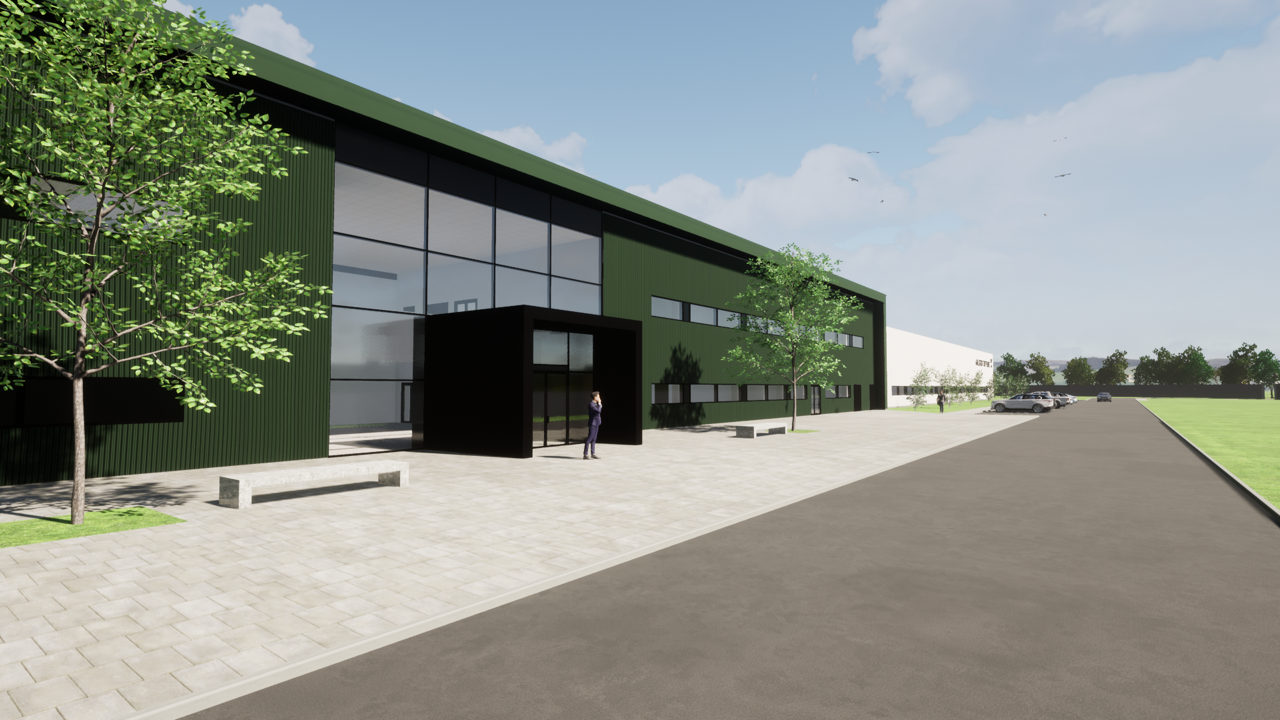
The new electrolyzer production plant, which will be constructed in Herning, Denmark, will be operational by 2024 and have an annual capacity of 500 MW with scalability up to 5 GW, making it one of the first industrial scale plants of its kind. Construction is scheduled to begin in the second half of this year, subject to Board and other regulatory approvals. Roeland Baan, CEO at Topsoe said,” We are willing and able to support society’s green ambitions and the need to accelerate the energy transition, and we have the technology to do it. With our new electrolyzer production plant, we lead the way in speeding up commercial-size Power-to-X solutions, and we do it with our highly innovative technology that outmatches technologies currently in the market.” Topsoe is already seeing considerable interest in our Power-to-X solutions and is in advanced discussion with several potential partners over future offtake agreements and commitments to reserve capacity from the electrolyzer plant. 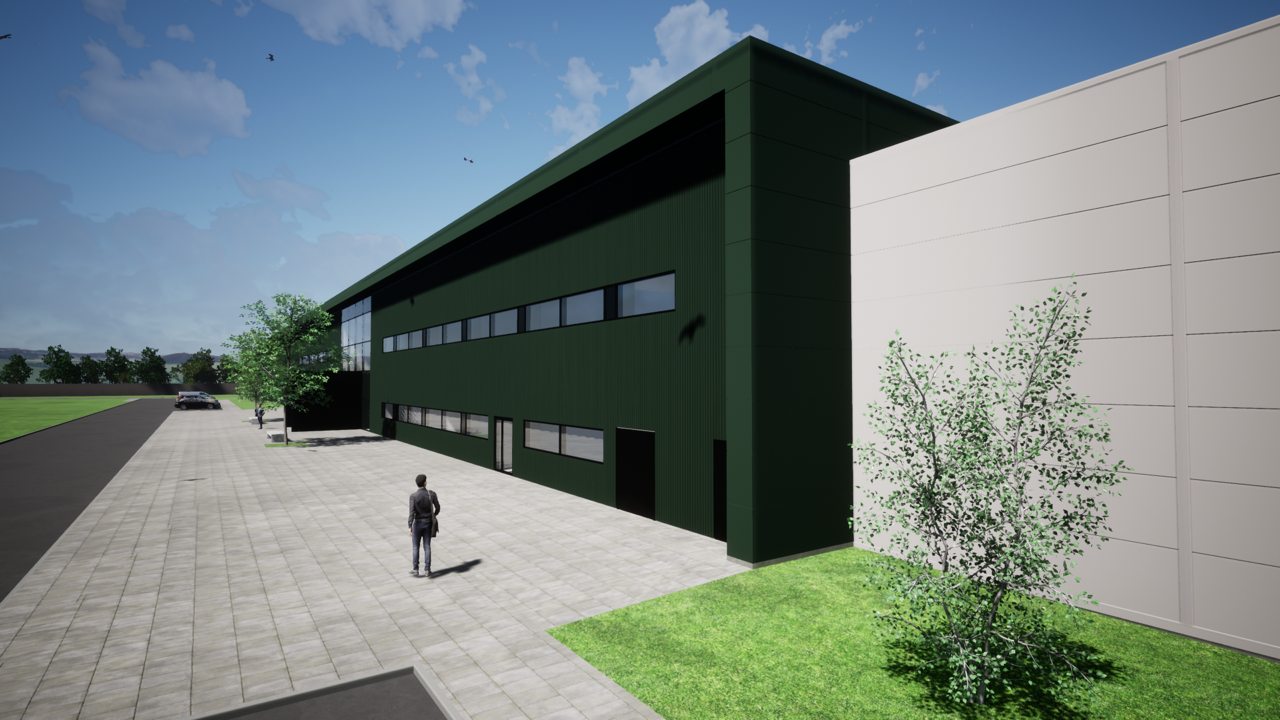
Developing a strong Power-to-X industry in Europe will also enforce EU’s ambitions of being independent of energy imports from other regions. The milestone in ensuring large-scale availability of electrolyzers for Power-to-X solutions takes place at the same time as Ursula von der Leyen, President of the European Commission, and state leaders from Denmark, Germany, The Netherlands, and Belgium signed an agreement, in which the parties agree to invest in a ten-fold capacity increase of offshore wind by 2050. The political agreement ensures significant availability of the renewable power needed to supply future Power-to-X facilities in the EU. Roeland Baan said, “The agreement between the EU Commission and the four North Sea countries is an important step in the transition to renewable energy. At Topsoe, we are also ready to invest. Our mission as a company is to reduce society’s emissions in 2022 by 12 million tons of CO2. By introducing solutions to decarbonize transportation and other hard to abate-sectors, we secure significant CO2 emissions not only in 2022 but for years to come, while also moving closer to energy independence.” Dorte West, Mayor of Herning Municipality said, “There has been a great interest – also internationally – to attract Topsoe’s coming manufacturing plant. The fact that a renowned company like Topsoe chooses Herning makes me happy and proud, and it tells me, that our entrepreneurial spirit and drive is broadly recognized. Sustainability is highly prioritized by the City Council and fits perfectly together with Topsoe’s Power-to-X plans that points to the future. And surely, it’s a great in terms of new jobs in the municipality of Herning.” About the production plant
|
|
| pageLayoutLeft | Howden expands Vietnam operations with new Hanoi office | 5/23/2022 10:20:26 AM | False | Howden expands Vietnam operations with new Hanoi office | Howden has opened a new office in Hanoi, Vietnam. The new office complements Howden’s existing location in Ho Chi Minh City and brings greater access to the company’s procurement, quality control, technical assistance and project execution in northern Vietnam. | Howden has opened a new office in Hanoi, Vietnam. The new office complements Howden’s existing location in Ho Chi Minh City and brings greater access to the company’s procurement, quality control, technical assistance and project execution in northern Vietnam. | Howden has opened a new office in Hanoi, Vietnam. The new office complements Howden’s existing location in Ho Chi Minh City and brings greater access to the company’s procurement, quality control, technical assistance and project execution in northern Vietnam. As a business with a strong reputation for client monitoring and service, this move brings Howden experts closer to hand for vital industries and supports Howden’s original equipment manufacturer, aftermarket and Retrofit expertise. Camille Levy, President of the Asia Pacific Region at Howden, comments: “The opening of our new office in Hanoi comes on the back of the growth we are experiencing in Vietnam, particularly in thermal renewables, H2, power generation, cement and petrochemical. It confirms our significant role and strong reputation as a key provider expertise and innovation which contributes to the energy transition and provides support for our customers’ vital processes. “Howden has a long history of strength in both traditional and emerging sectors in APAC. We already support over 300 pieces of installed equipment within Vietnam and are growing both our OEM, AFM, Retrofit and service support in response to customer demand.” Headed by Mr Tran Nhu Hai, the office is well-located 30km from Hanoi main airport and 8km from the city centre. Sectors supported by the expanded team include power generation, cement, petrochemical, mining, energy recovery, oil & gas, amongst others. Howden focuses on helping customers increase the energy efficiency and effectiveness of their air and gas handling processes enabling them to make sustainable improvements in their environmental impact. Howden designs, manufactures and supplies products, solutions and services to customers around the world across highly diversified end-markets and geographies. The business recently announced its target to be carbon net zero by 2035 through the purchase of renewable energy and carbon free energy; efficiency gains from energy conservation measures; and by renewable energy projects at its manufacturing facilities. The largest impact the business will have on global sustainability will be through its partnership with customers to supply equipment that will make a major impact on their carbon emissions and sustainability. |
|
| pageLayoutLeft | Wärtsilä to partner with Capwatt in green H2 blending project in Portugal | 5/23/2022 10:26:11 AM | False | Wärtsilä to partner with Capwatt in green H2 blending project in Portugal | Wärtsilä will collaborate with Capwatt in the testing of a green H2 and natural gas blend fuel for Capwatt power plant located in Maia. | Wärtsilä will collaborate with Capwatt in the testing of a green H2 and natural gas blend fuel for Capwatt power plant located in Maia. | Wärtsilä will collaborate with Capwatt in the testing of a green H2 and natural gas blend fuel for Capwatt power plant located in Maia. The project will start in Q1, 2023 and it aims at testing blends of up to 10 vol.% green H2. The combined heat and power plant which provides energy for Sonae Campus and the national grid currently operates with a Wärtsilä 34SG engine running on natural gas. This will be one of the first cases where green H2 is used to lessen the carbon footprint of an existing gas fueled Wärtsilä power plant. The Wärtsilä engine at the site is already capable of operating on gas with up to 3% H2. To reach the targeted level of 10% blending to meet the specific needs for Capwatt, modifications will be made to the engine, as well as its control system and the plant automation system. Capwatt intends to produce green H2 using an electrolyzer, powered by renewable energy. “We are committed to decarbonizing our operations and we see the blending of hydrogen and natural gas for fueling this plant as a significant step towards achieving this goal. Wärtsilä is a company with great experience and know-how in this field, and we look forward to working closely with them in this ground-breaking project,” said Sérgio Rocha, CEO at Capwatt. “This project concretely shows how existing power plants can take steps towards carbon-neutral power generation,” said Sushil Purohit, President, Wärtsilä Energy and EVP Wärtsilä Corporation. “As a technology, the combustion engine represents a viable solution for enabling the transformation to utilising future fuels. The flexibility of the Wärtsilä engines already plays an important role in allowing a far greater share of renewable energy to be incorporated into power systems.” The project is in line with the country’s national H2 strategy, which aims to increase the share of H2 in energy consumption by 5% by 2030 in the industry sector. During the coming decade, the aim is to have 2.0 to 2.5 GW of installed H2 producing capacity, and to have 10 to 15% H2 injected into the natural gas grid. Capwatt has a portfolio of nearly 160 MW of cogeneration plants that can benefit from this project’s know-how, which will play a significant role on decarbonization of thermal energy demand, enabling the energy transition of its industrial clients. Wärtsilä engines can be operated on H2/natural gas blends with up to 25% H2, and the company is working towards an engine and power plant concept for pure H2 operations by 2025. Wärtsilä already has engine generating sets operating successfully on a natural gas and H2 blend in a newbuild power plant at an offshore floating testbed in Singapore. |
|
| pageLayoutLeft | H-TEC SYSTEMS introduces scalable Hydrogen Cube System for the production of green H2 | 5/23/2022 12:28:42 PM | False | H-TEC SYSTEMS introduces scalable Hydrogen Cube System for the production of green H2 | H-TEC SYSTEMS will present its new PEM electrolysis Hydrogen Cube System, to produce green H2, to a broad audience at this year’s Hannover Messe. | H-TEC SYSTEMS will present its new PEM electrolysis Hydrogen Cube System, to produce green H2, to a broad audience at this year’s Hannover Messe. | H-TEC SYSTEMS will present its new PEM electrolysis Hydrogen Cube System (HCS), to produce green H2, to a broad audience at this year’s Hannover Messe. The modular system is suitable for large multi-MW PEM electrolysis plants and applications in the industrial, chemical and renewable energy sectors. The modular system allows for successive expansion and scaling, as projects are often already designed for later expansion. 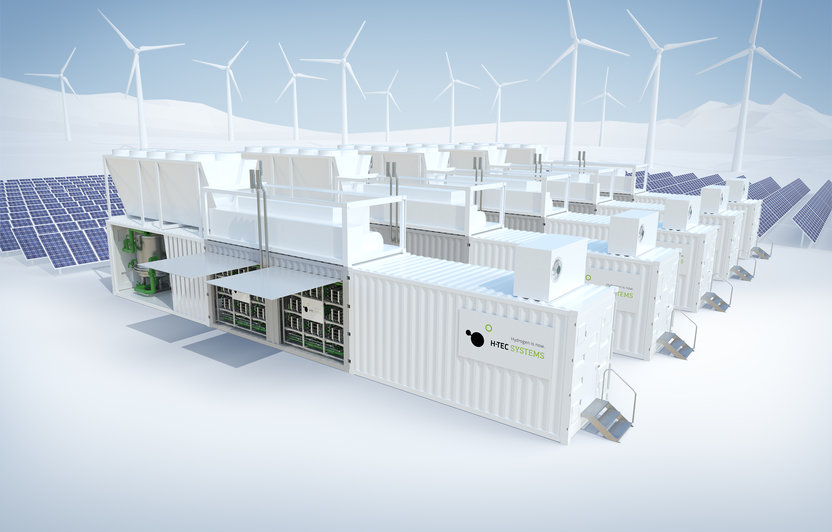
Green H2 production on a multi-megawatt scale The HCS is a modular building block system to realize large PEM electrolysis plants for producing green H2. For this purpose, 2 MW cubes can be combined to form multi-megawatt plants. The cubes achieve a system efficiency of 74% and are equipped with an integrated process water treatment and power supply. In addition, fresh water and H2 treatment or heat extraction can be added to the system, depending on the customers’ requirements. A 10 MW HCS from H-TEC SYSTEMS can produce 4,500 kg of H2 per day. With 10 MW of renewable energy, 40 to 50 trucks or busses could be refueled with green hydrogen every day. The system is designed for modular expansion. All modules can be linked so that the entire plant can be centrally controlled and monitored. The concept is suitable for plants that are to be expanded over the next few years. Projects can thus also start with a 4 MW system, even if the long-term goal is 50 MW or more. Extended application areas enable high CO2 savings With this innovative system, H-TEC SYSTEMS is expanding into larger industrial applications and thus enabling extensive CO2 savings using green H2, as compared to fossil resources. The HCS is suitable for applications in industrial production, such as chemical plants or steel production, as well as in the field of mobility (fleet refueling). For wind farm or PV park operators, the conversion of renewable energy into green hydrogen is a very viable option. Steel production, which is one of the largest producers of emissions in Germany, provides an example of possible CO2 savings. According to the German Steel Industry Association, 26 tons of CO2 emissions can be saved for every ton of climate-neutral H2 used in steel production. A 10 MW HCS from H-TEC SYSTEMS with a daily production of 4,500 kg of green hydrogen would therefore reduce CO2 emissions by 117 tpd, or 42,000 tpy. "The current energy shortage is increasing the pressure on all sectors. At the same time, it offers a chance for many industries. The use of green hydrogen not only helps to significantly reduce CO2 emissions, but also to secure energy supply in the long term," said Robin von Plettenberg, CEO of H-TEC SYSTEMS. "We are therefore very pleased to provide the Hydrogen Cube System, a modular and scalable system that makes it easier for companies in the chemical, mobility and energy sectors to start utilizing green hydrogen now, and also expand their projects at a later date." H-TEC SYSTEMS expands production capacity Due to the rapid growth of the H2 market, H-TEC SYSTEMS is expanding its production capacity. With the support of large-scale plant manufacturer and parent company MAN Energy Solutions, and direct access to Volkswagen's serial production expertise, an automated factory to produce electrolysis stacks will be completed by the end of 2023. Depending on demand, a production capacity of 1000 MW can be reached by 2025, which will be continuously expanded in the following years. |
|
| pageLayoutLeft | EDPR enters into agreement with Lhyfe to develop renewable H2 production projects | 5/24/2022 9:08:25 AM | False | EDPR enters into agreement with Lhyfe to develop renewable H2 production projects | EDP Renewables has entered into an industrial agreement with Lhyfe to jointly identify, develop, build and manage H2 projects in this business area. | EDP Renewables has entered into an industrial agreement with Lhyfe to jointly identify, develop, build and manage H2 projects in this business area. | EDP Renewables has entered into an industrial agreement with Lhyfe to jointly identify, develop, build and manage H2 projects in this business area. 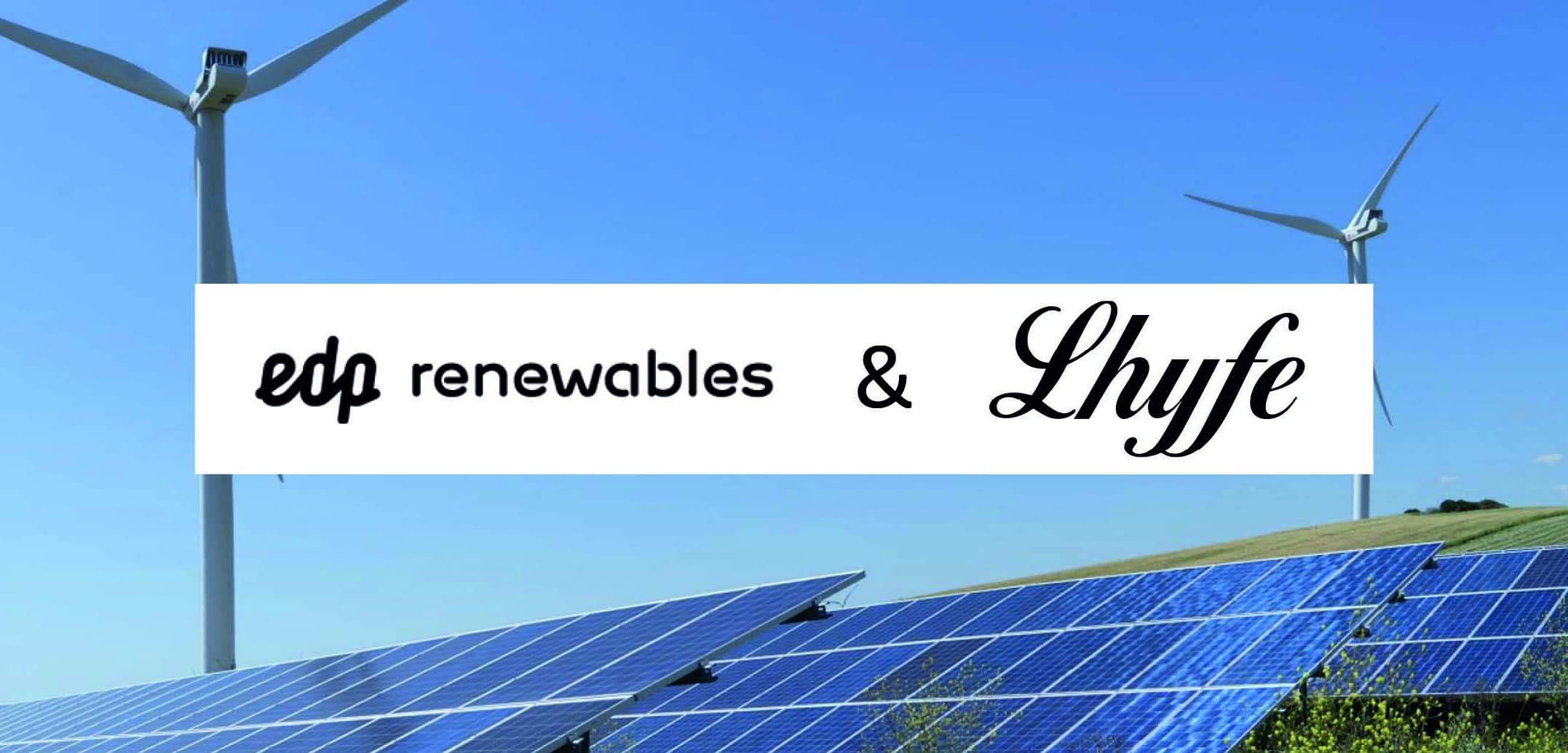
Under said agreement, EDPR will supply renewable electricity to Lhyfe’s H2 generation projects. In addition, the two companies will identify opportunities for the co-development of projects, with EDPR’s shareholding potentially reaching up to 50% of the projects’ capital. The companies will also work together on R&D activities, new project development and equipment procurement. This agreement envisages to create value, leveraging synergies from the complementary skills and capabilities of the two companies, boosting the growth of EDPR’s portfolio, especially in France, and contributing to the development of Lhyfe’s projects all around the world. It also contributes to achieve higher operational and commercial expertise in renewable H2 projects. Miguel Stilwell d’Andrade, CEO of EDP and EDP Renewables said, “We are pleased to have closed this important agreement with Lhyfe as part of its IPO. We believe that renewable hydrogen can complement the direct electrification as the best means for reducing CO2 emissions and achieving the decarbonization of the economy, including in the hard-to-electrify sectors. With this agreement with Lhyfe, we reinforce our commitment to the acceleration of the energy transition while also taking one step toward the achievement of our growth plans.” Matthieu Guesné, founder and CEO of Lhyfe said, “We are very proud to conclude this agreement with one of the world’s largest renewable energy producers. The trust placed in us by EDPR allows us to confidently consider the development of our renewable hydrogen worldwide and on a large scale. We look forward to developing our future production sites alongside them, and to immediately decarbonizing local mobility and industrial uses, thanks to the pooling of our strengths.” |
|
| pageLayoutLeft | ADNOC, Masdar to join bp’s H2 projects in the UK | 5/24/2022 9:36:02 AM | False | ADNOC, Masdar to join bp’s H2 projects in the UK | bp has strengthened its partnership with ADNOC and Masdar of Abu Dhabi, bringing international participation to its planned blue and green H2 developments in Teesside. | bp has strengthened its partnership with ADNOC and Masdar of Abu Dhabi, bringing international participation to its planned blue and green H2 developments in Teesside. | bp has taken a major step forward in strengthening its strategic partnership with ADNOC and Masdar of Abu Dhabi, bringing international participation to its planned blue and green H2 developments in Teesside in the northeast of England. 
ADNOC will take a 25% stake in the design stage of bp’s blue H2 project, H2Teesside. This will be ADNOC’s first investment in the UK. bp and ADNOC will now advance the project, initially to the next stage of design, the pre-FEED stage. H2Teesside is expected to kickstart the UK’s H2 economy at scale with the development of two 500-MW H2 production units by 2030. The project is targeting start of operations in 2027. Masdar has also signed a MoU to acquire a stake in bp’s proposed green H2 project, HyGreen Teesside. This project is planned to produce 60 MWe (megawatt electrical input) of H2 at start-up in 2025, increasing to up to 500MWe by 2030. Together, these two projects could deliver 15% of the UK Government’s recently expanded 10 GW target for H2 production in 2030. bp will also join ADNOC to evaluate a new blue H2 project in Abu Dhabi, conducting a joint feasibility study for a world-scale, low-carbon H2 project in the country. In addition, ADNOC, bp and Masdar have joined with Abu Dhabi Waste Management Centre (Tadweer) and Etihad Airways to explore production of sustainable aviation fuels, from H2 and municipal waste gasification, in the UAE. “By joining forces with ADNOC and Masdar we are reinforcing the world-leading role that Teesside, and the UK more widely, can play in developing new supplies of energy, as well as new skills and supply chains. We’re backing Britain and the resources, capability and net zero ambition here in the UK make it ideal for the development of low carbon hydrogen and together we can help deliver a significant contribution to the UK’s newly increased hydrogen ambition,” said Bernard Looney, bp’s chief executive. “As well as boosting home-grown energy, the global nature of our partnership with ADNOC and Masdar will support our plans to decarbonize some of the most hard-to-abate sectors in the world – like industrial manufacturing, power and aviation. Partnerships like this reach beyond borders to provide the new energy solutions the world needs, and I want to applaud Dr Sultan for his continued commitment to help solve the energy trilemma of providing the world with secure, affordable and cleaner energy.” H.E. Dr. Sultan Ahmed Al Jaber, UAE Minister of Industry and Advanced Technology, ADNOC Managing Director and Group CEO, and Masdar Chairman said, “ADNOC and Masdar’s deepened partnership with bp is a testament to the UAE and UK’s longstanding track record of bilateral partnership in sustainability as well as the UAE’s intent to play a leading role in the fast-growing clean hydrogen economy both domestically and internationally. To that end, we welcome the opportunity to collaborate with bp in both the UAE and UK, laying the groundwork for deeper commercial partnership in the area of new energies and clean technologies. In the UK, our role in Teesside will represent ADNOC’s first investment into the UK and help to accelerate innovation in decarbonization of energy in industrial sectors. Similarly, the partners’ collaboration in Abu Dhabi is expected to further position the UAE as a regional leader in low-carbon energies and technology-driven industrial growth.” Mohamed Jameel Al Ramahi, Masdar’s chief executive said, “Today’s announcements will strengthen the strategic partnership between Masdar, ADNOC and bp and continue to drive clean energy innovation for both the UAE and the UK. Masdar has been a long-standing investor in the UK’s renewable energy sector, and we will leverage our expertise in offshore wind and sustainable aviation fuels to support both nations’ energy transition while solidifying the UAE’s leadership position in the emerging green hydrogen economy.” These new agreements follow from the formation of a strategic partnership for clean energy solutions in the UK and UAE between bp, ADNOC and Masdar in September 2021, including the intention to work together to develop low carbon H2 hubs, such as at Teesside. These initiatives are subject to relevant customary regulatory clearances. UK Minister for Investment, Lord Grimstone said, “This deal will help us supercharge clean growth by harnessing the expertise of the UK’s renewable energy sector. Partnerships like these help level up investment across the country and boost productivity in our high-tech industries. It’s brilliant to see Teesside leading the way towards a net zero future, while also growing the economy and creating hundreds of new jobs.” |
|
| pageLayoutLeft | Volvo introduces H2-based steel in its trucks | 5/24/2022 10:47:46 AM | False | Volvo introduces H2-based steel in its trucks | Volvo has become the world’s first truck manufacturer to introduce fossil-free steel in its trucks, produced by the Swedish steel company SSAB. | Volvo has become the world’s first truck manufacturer to introduce fossil-free steel in its trucks, produced by the Swedish steel company SSAB. | Volvo has become the world’s first truck manufacturer to introduce fossil-free steel in its trucks. The steel is produced by the Swedish steel company SSAB, and the heavy-duty electric Volvo trucks will be the first to include it. 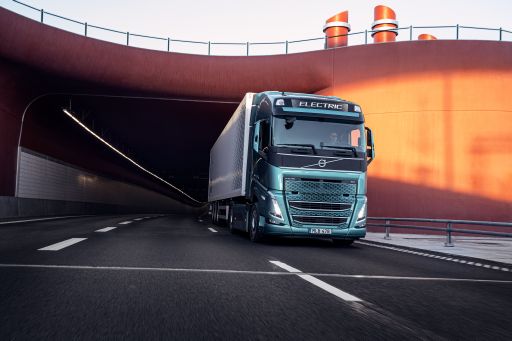
The steel from SSAB is produced using a completely new technology, based on H2. The result is a much lower climate impact than conventionally produced steel. Small scale introduction of the steel in Volvo’s heavy electric trucks will begin in the 3Q of 2022. “We will increase the use of fossil-free materials in all our trucks to make them net-zero not only in operation – but also when it comes to the materials they are built of,” said Jessica Sandström, Senior Vice President Product Management, Volvo Trucks. The first steel produced with H2 will be used in the truck’s frame rails, the backbone of the truck upon which all other main components are mounted. As the availability of fossil-free steel increases, it will also be introduced in other parts of the truck. 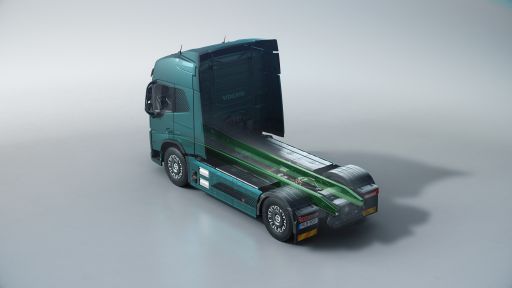
90% of a Volvo truck can be recycled Today, around 30% of the materials in a new Volvo truck come from recycled materials. And up to 90% of the truck can be recycled at the end of its life. “We are continuously striving to further minimize our climate footprint. We are also moving towards greater circularity in both our operations and our trucks,” said Sandström. Volvo Group is collaborating with SSAB on fossil-free steel since 2021. The first machine, a load carrier made of fossil-free steel, was showcased in October 2021. Fossil-free steel will be an important complement to the traditional and recycled steel used in Volvo’s trucks. |
|
| pageLayoutLeft | ClearSign wins grant from Department of Energy to develop a H2 fueled ultra low NOx process burner | 5/24/2022 11:03:39 AM | False | ClearSign wins grant from Department of Energy to develop a H2 fueled ultra low NOx process burner | ClearSign Technologies announced that it was awarded a government grant to develop ultra-low nitrogen oxide H2 burner technology. | ClearSign Technologies announced that it was awarded a government grant to develop ultra-low nitrogen oxide H2 burner technology. | ClearSign Technologies announced that it was awarded a government grant through the Small Business Innovative Research program with the Department of Energy. The goal of this project is to develop ultra-low nitrogen oxide (NOx) H2 burner technology which will enable the adoption of H2 fuel for industrial heating, leading to reductions in the industrial emissions of both CO2 and NOxs. Current burners and previous efforts to decarbonize industrial combustion processes through the utilization of H2 fuel are inhibited by the lack of industrial H2 burners capable of burning pure H2 while preventing additional NOx emissions. “We are grateful to the DOE for this grant and for recognizing the potential of ClearSign Core technology to provide burners for the developing hydrogen economy, which has potential substantial global ramifications, while at the same time reducing the pollutant emissions necessary to maintain a healthy environment today,” said Jim Deller, Ph.D., Chief Executive Officer of ClearSign. “We have previously demonstrated our current ClearSign Core burner technology operating at full scale with over 80% hydrogen content in the fuel gas and are confident in our ability to provide low emissions burner technology to meet the needs of the developing hydrogen fueled industrial burner applications.” The project and funding are in phases. The initial funding amount is approximately $250,000 and the project will last six months, starting at the end of June. If needed, and upon completion of the Phase 1 work, the company will be able to submit a follow-up proposal to continue the development work with a Phase 2 grant. Phase 2 grant funding can be up to $1.6 MM for a 2-year duration. |
|
| pageLayoutLeft | Emerson provides advanced automation technology for Toyota Australia’s H2 production, refueling plant | 5/24/2022 12:00:14 PM | False | Emerson provides advanced automation technology for Toyota Australia’s H2 production, refueling plant | Emerson and Toyota Australia have collaborated to transform part of Toyota Australia’s operations into a commercial-grade H2 production, storage and refueling plant. | Emerson and Toyota Australia have collaborated to transform part of Toyota Australia’s operations into a commercial-grade H2 production, storage and refueling plant. | Emerson and Toyota Australia have collaborated to transform part of Toyota Australia’s operations into a commercial-grade H2 production, storage and refueling plant. The project, supported by the Australian Renewable Energy Agency, adopts Emerson’s automation expertise to provide the control system that helps Toyota Australia demonstrate the technical and economic feasibility of manufacturing H2 fuels, including the use of renewable solar energy. 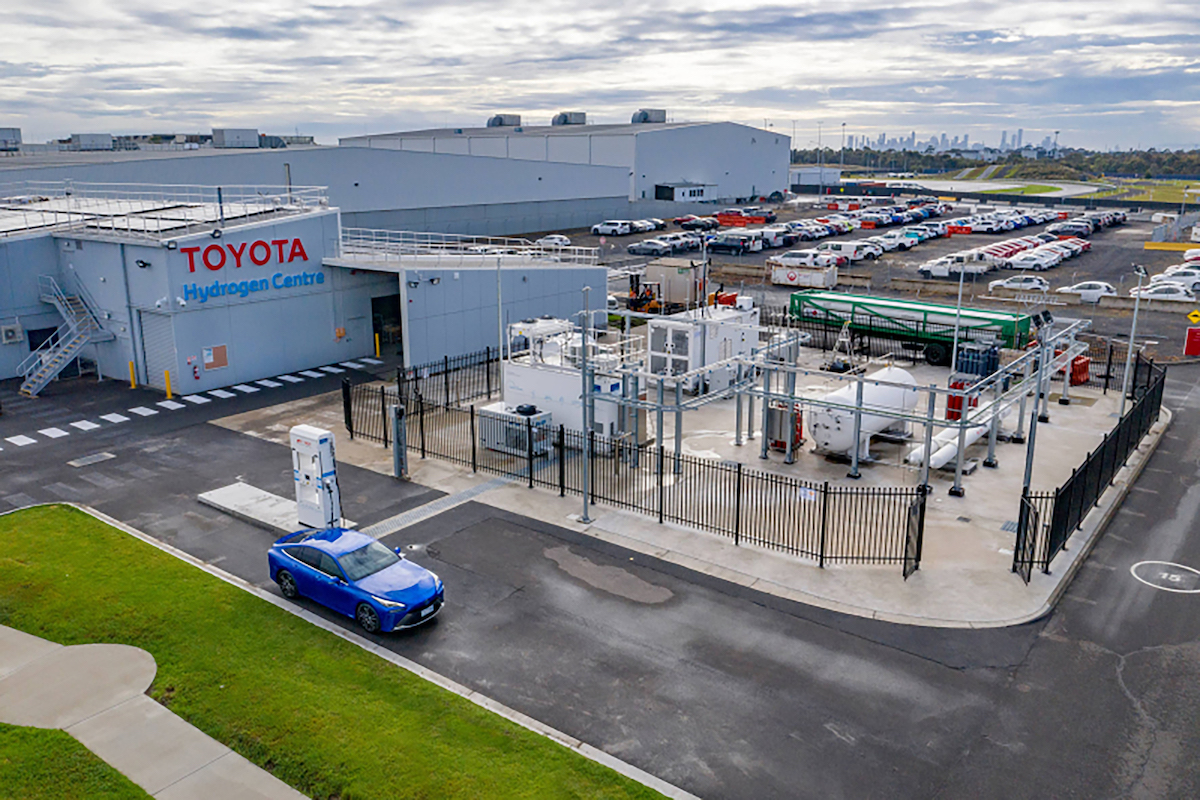
As low and zero-emissions vehicles capture an ever-greater share of the market, countries around the globe need to expand access to renewable fuels like H2. Sustainable H2 projects are challenging because they need to integrate many data sources into one balance-of-plant system, a process that’s critical for a facility’s success. For the Toyota Australia Hydrogen Center, Emerson’s advanced DeltaV distributed control system gathers data from the plant’s complex equipment, making it easier to monitor production and storage of H2 gas and document and validate the sustainability of operations. “By incorporating a digital automation foundation to eliminate data silos, Toyota Australia can not only significantly reduce costs, but also gain greater visibility into system performance, making it easier to maintain and report sustainability performance and increase productivity,” said Mark Bulanda, executive president of Emerson’s automation solutions business. “The data foundation Toyota has built will make it faster and easier for like-minded companies to replicate success as hydrogen refueling networks continue to expand across the continent and the globe.” Emerson’s DeltaV systems control operations for optimal production efficiencies and help ensure safe operations. Edge control technology from Emerson’s PACSystems will further reduce cost and complexity of integrating third-party systems. Rosemount flame detectors will help keep personnel and operations safe. The Toyota Australia team took advantage of pre-existing configuration libraries to reduce setup time. In addition, Emerson’s technologies create a platform to add future remote operations and data analytics more easily and cost effectively. |
|
| pageLayoutLeft | CB&I signs MoU with Korea Gas Corporation to support H2 economy in South Korea | 5/25/2022 10:11:07 AM | False | CB&I signs MoU with Korea Gas Corporation to support H2 economy in South Korea | McDermott's storage business, CB&I and Korea Gas Corporation have signed a MoU to explore the development of large-scale liquid H2 storage to support Korea's H2 economy roadmap. | McDermott's storage business, CB&I and Korea Gas Corporation have signed a MoU to explore the development of large-scale liquid H2 storage to support Korea's H2 economy roadmap. | McDermott's storage business, CB&I and Korea Gas Corporation (KOGAS) have signed a MoU to explore the development of large-scale liquid H2 storage to support Korea's H2 economy roadmap. 
Last year, South Korea announced plans to achieve carbon neutrality by 2050 by replacing coal-fired power generation with renewable sources and internal combustion engine vehicles with H2-powered and battery-based electric vehicles. KOGAS has grown into the largest LNG-importing company in the world and operates four LNG regasification terminals and 4,945 km of natural gas pipelines in South Korea. "Hydrogen has emerged as a key enabler to meet these decarbonization goals and KOGAS will play a leading role in building the infrastructure for hydrogen shipping, storage and distribution to make these ambitions a reality," said Seung Lee, Executive Vice President of KOGAS. CB&I specializes in designing and building field-erected pressure spheres capable of storing liquid H2 at temperatures of minus 423°F and is nearing completion of the world's largest liquid H2 sphere in Cape Canaveral, Florida, U.S. Their history in this field spans more than 60 years. "Viable storage solutions on both ship and shore will be fundamental for South Korea to realize its carbon neutrality goals," said Cesar Canals, Senior Vice President of CB&I. "With ongoing research and development efforts well underway to scale up capacity thresholds for liquid hydrogen storage, CB&I is honored to join KOGAS in setting the pace for the rapid development of a large-scale hydrogen economy for South Korea." |
|
| pageLayoutLeft | Charbone Hydrogen signs agreement with Gaussin for the manufacturing of H2 vehicles in Canada | 5/25/2022 10:53:17 AM | False | Charbone Hydrogen signs agreement with Gaussin for the manufacturing of H2 vehicles in Canada | Charbone has signed an Agreement in Principle with Gaussin, under which Charbone intends to invest to obtain exclusive license to Gaussin technology. | Charbone has signed an Agreement in Principle with Gaussin, under which Charbone intends to invest to obtain exclusive license to Gaussin technology. | Charbone has signed an Agreement in Principle (AiP) with Gaussin, under which Charbone intends to invest to obtain exclusive license to Gaussin technology for the manufacture, marketing, distribution and sale of off-road logistics vehicles. The finalization of the AiP remains subject to the signature for a definitive license agreement for a period of 20 years with the right to sublicense by June 22, 2022. Charbone intends to sub-license the technology to a new joint venture which will be formed in Canada to accelerate the deployment of H2-powered vehicles intelligent and zero-emission models from Gaussin as well as terminal tractors, which market targets Canadian seaports and logistics centers. |
|
| pageLayoutLeft | Johnson Matthey expands presence in green H2 with stake in electrolyzer company, Enapter | 5/25/2022 11:11:24 AM | False | Johnson Matthey expands presence in green H2 with stake in electrolyzer company, Enapter | Johnson Matthey enters a strategic partnership with Enapter, an AEM electrolysis technology company. AEM is a next generation electrolyzer technology that promises to drive down the cost of green H2 towards a point where it becomes competitive with fossil fuels. | Johnson Matthey enters a strategic partnership with Enapter, an AEM electrolysis technology company. AEM is a next generation electrolyzer technology that promises to drive down the cost of green H2 towards a point where it becomes competitive with fossil fuels. | Johnson Matthey enters a strategic partnership with Enapter, a pioneer in AEM electrolysis. AEM is a next generation electrolyzer technology that promises to drive down the cost of green H2 towards a point where it becomes competitive with fossil fuels. 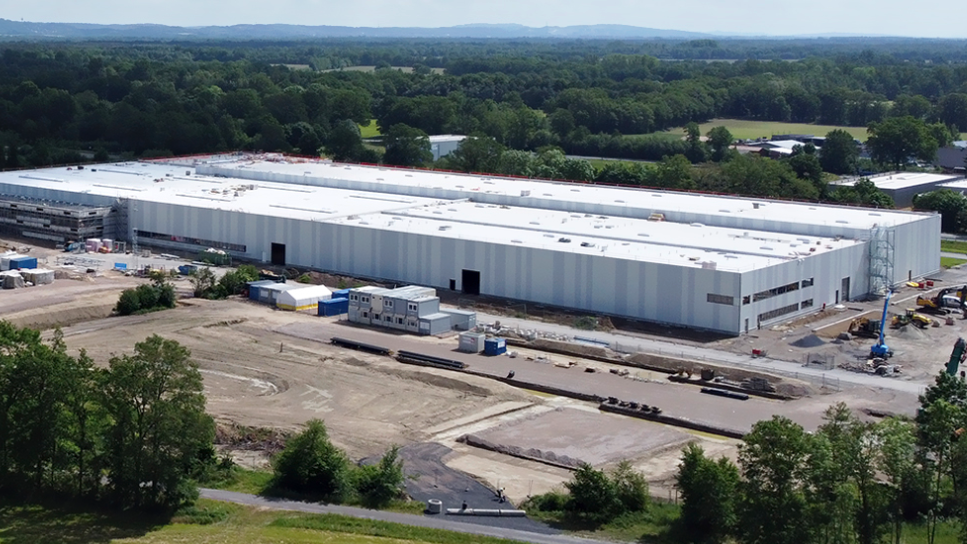
The partnership will include collaborating on the joint development of advanced components for Enapter’s AEM stacks. Specialized catalysts will also be supplied, recognizing Johnson Matthey’s undisputed expertise in catalysis. As part of the partnership, JM will invest €20 MM (representing 4.31%) in Enapter. Both companies are committed to supporting the transition to net zero by accelerating the development of AEM electrolysis. Enapter’s highly efficient standardized and modular AEM electrolyzers allow green H2 production from kW to MW scale at lower associated costs for various applications, including electricity storage (residential and industrial), production of synthetic gas or methane (power-to-gas), mobility (H2 refueling and e-fuels) and industrial use. Johnson Matthey and Enapter will jointly investigate opportunities for the recycling of production scraps and components from end-of-life products, recognizing Johnson Matthey’s competitive advantage in offering closed loop solutions. Liam Condon, CEO of Johnson Matthey said, “Our ambition is to become the global leader in green hydrogen technologies and to diversify our technology base in this booming market, both in the electrolyzer and fuel cell markets. This strategic partnership is at the heart of our strategy as we focus our resources on growth areas targeted at climate change solutions. Working with Enapter is a great opportunity for us to accelerate and further expand in green hydrogen and deliver on our vision for a cleaner, healthier world.” Sebastian-Justus Schmidt, Founder and CEO of Enapter said, “Rapid growth and scaling of our technology lies at the core of our mission to drive down the cost of green hydrogen. This partnership recognizes Johnson Matthey’s pioneering work in material chemistry and its industrialization, and enables us to continue enhancing the efficiency and performance of our products to deliver on the promise of clean energy for all.” |
|
| pageLayoutLeft | Elogen partners with Valmax in Korea for the production of green H2 | 5/25/2022 11:17:07 AM | False | Elogen partners with Valmax in Korea for the production of green H2 | Elogen and Valmax Technology announced the signing of a collaboration agreement for the commercialization of green H2 solutions in Korea. | Elogen and Valmax Technology announced the signing of a collaboration agreement for the commercialization of green H2 solutions in Korea. | Elogen and Valmax Technology announced the signing of a collaboration agreement for the commercialization of green H2 solutions in Korea. 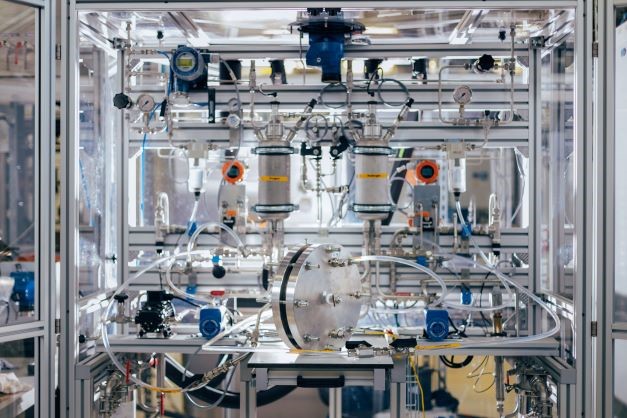
Elogen and Valmax Technology have signed a collaboration agreement to supply electrolyzers in Korea to produce green H2. As part of this collaboration, Valmax will locally assemble the balance-of-plant of Elogen's state-of-the-art electrolyzers and work with local certification companies such as Korea Gas Safety Corporation for their approval and implementation. Jean-Baptiste Choimet, Managing Director of Elogen said, "With this new partnership, Elogen will contribute to the development of the green hydrogen market in Korea. Korea is one of the most active countries in the world for hydrogen developments, with a strong political support as showcased in the Hydrogen Economy Roadmap and Zero-Carbon ambitions. Thanks to its unique technology, Elogen has the ambition to contribute significantly to the numerous projects linked to clean mobility and industry in the country." Park, Dong Yeol, Ph.D., CEO of Valmax Technology Corporation said, "We are honored to be able to play an important role in the development of green hydrogen in Korea thanks to this collaboration with Elogen. In the context of the rapid development of green hydrogen worldwide and the implementation of the Zero-Carbon 2050 objective, the partnership between Valmax and Elogen will contribute to this mission in Korea." |
|
| pageLayoutLeft | Lhyfe and Trelleborgs Energi to collaborate for renewable green H2 production in Sweden | 5/25/2022 12:09:20 PM | False | Lhyfe and Trelleborgs Energi to collaborate for renewable green H2 production in Sweden | Lhyfe and the Swedish local energy company Trelleborgs Energi have joined forces in a pre-study that aims to build a local renewable H2 production system in southernmost Sweden. | Lhyfe and the Swedish local energy company Trelleborgs Energi have joined forces in a pre-study that aims to build a local renewable H2 production system in southernmost Sweden. | Lhyfe and the Swedish local energy company Trelleborgs Energi have joined forces in a pre-study that aims to build a local renewable H2 production system in southernmost Sweden. Both companies are focusing on green H2 as a solution for climate change. The results are due to be presented in the summer 2022. 
The initial study focuses on 5 MW of green H2 production capacity, in Trelleborg. The study covers the questions of energy supply, production capacity, technology selection and location, as well as utilization of waste heat and oxygen. Trelleborg is a major transport hub that will require H2 to supply refueling stations as well as to already ordered H2 vehicles. The number of heavy trucks passing through Trelleborg harbor is forecasted to increase from today’s 800,000 tpy, to 1.8 MM in 2026. Situated in the Öresund region, this project study in Trelleborg may contribute to securing H2 supply for both mobility and industry in efforts to reach zero carbon emissions. The utilization of waste heat and oxygen (a by-product of H2 production) is already being discussed with potential partners. Lhyfe, which is counting among the world’s largest and most advanced players in the green H2 market with 93 projects in development in Europe (more than 4.8 GW of total installed capacity) and a first industrial plant inaugurated in September 2021, connects its production sites directly to local renewable energy sources to fuel local industry and mobility uses. “We are proud to work hand in hand with Trelleborgs Energi, a company in a city that is putting green hydrogen on the Swedish map and above all also into action,” said Björn Arvidsson, Area Manager Nordics & UK at Lhyfe. “We share a common DNA: we both want to act now for the climate, with focus on renewable hydrogen. It is inspiring to collaborate to further propel the energy transition in the region.” The joint pre-study will point towards an optimum initial set up to produce H2, using renewable electricity. “We want to create sustainable energy solutions locally and renewable green hydrogen is part of that plan,” said Magnus Sahlin, CEO of Trelleborgs Energi. “Hydrogen is a clever, multi-purpose energy carrier and can play a part in solving the climate challenge. We believe in making a real difference, in walk the talk, and our renewable hydrogen initiative is one way of doing that.” |
|
| pageLayoutLeft | TES Wilhelmshaven H2 import terminal receives project priority from German government | 5/25/2022 12:34:49 PM | False | TES Wilhelmshaven H2 import terminal receives project priority from German government | Tree Energy Solutions’ import terminal has been included in the list of priority projects supported by the German Government’s LNG Acceleration law. The goal is to replace fossil-gas imports with fossil-free H2-based green gas imports. | Tree Energy Solutions’ import terminal has been included in the list of priority projects supported by the German Government’s LNG Acceleration law. The goal is to replace fossil-gas imports with fossil-free H2-based green gas imports. | Tree Energy Solutions’ (TES) import terminal has been included in the list of priority projects supported by the German Government’s LNG Acceleration law. The law was passed by parliament on May 19th, 2022 and was approved by the Federal Council on May 20th, 2022. The aim of this law is to accelerate the implementation of the critical infrastructure needed to secure the energy supply of the country and its short-term gas imports. 
The new law is designed to reduce permitting and associated approval periods for the construction of onshore import facilities as part of the Wilhelmshaven Green Energy Hub development by TES, specifically on the Voslapper Groden location. Such acceleration will support the targeted commencement of operations of gas imports from 2025 onwards to secure German gas supplies. Subsequently, fossil-gas imports will be replaced by fossil-free H2-based green gas imports to decarbonize and diversify the energy system from 2028 onwards. TES has been preparing to obtain required permits and to clarify nature protection measures since 2019. The Wilhelmshaven terminal layout is planned to comprise 6 ship berths, 1.6 MMm3 of onshore storage capacity using 8 onsite tanks, (of which 4 will be available during the initial stage) the regassification equipment and the main connection to the OGE gas grid. This terminal will play a key role in reducing Germany’s energy dependence on Russia, as well as in the shift to obtain fossil-free energy imports, based on green H2. Paul van Poecke, co-founder and managing director of TES said, “We are delighted that the German government has included the TES onshore terminal in the new LNG law. It is a recognition of the importance the project will play in ensuring the security of gas supply while concurrently accelerating the energy transition and fossil-free gas imports. This will also bring clarity to the Open Season participants that are currently considering the booking of capacity through our terminal. The trust placed in us by the government is greatly appreciated and a reward for leading the development of the onshore terminal at Wilhelmshaven.” |
|
| pageLayoutLeft | ZeroAvia advances regional jet plans, strikes new Agreement with MHIRJ | 5/25/2022 12:57:21 PM | False | ZeroAvia advances regional jet plans, strikes new Agreement with MHIRJ | ZeroAvia has made a big leap forward in plans to deliver H2-electric engines for regional jets, thanks to an expanded agreement with MHI RJ Aviation Group. | ZeroAvia has made a big leap forward in plans to deliver H2-electric engines for regional jets, thanks to an expanded agreement with MHI RJ Aviation Group. | ZeroAvia has made a big leap forward in plans to deliver H2-electric engines for regional jets, thanks to an expanded agreement with MHI RJ Aviation Group (MHIRJ). As part of the collaboration, MHIRJ will provide engineering services, aircraft integration, and its industry renowned OEM experience to support the certification of ZeroAvia’s H2-electric powertrain for retrofit onto airframes in the regional jet markets. 
ZeroAvia is already well advanced in plans to certify its ZA600, 600kW powertrain for smaller, 10-20 seat aircraft, with entry into service planned for 2024. Concurrently, the company is working on ZA2000, a 2-5-MW modular powertrain which targets support for 40-80 seat turboprops by 2026. The ZA2000RJ powertrain will expand this technology to enable passengers to fly in zero-emission regional jets as early as the late 2020s. This expanded agreement follows a MoU signed by the parties at the end of last year. Val Miftakhov, CEO and founder of ZeroAvia said, “There are hundreds of CRJ Series aircraft in daily operation across North America, transporting millions of passengers. All these flights can and should be zero-emission well before the end of this decade. This agreement is a giant step forward in delivering hydrogen-electric engines to the regional jet segment.” The agreement is the first for MHIRJ’s Aerospace Engineering Centre (AEC) in the H2 propulsion field. MHIRJ’s Aerospace Engineering Centre aims to provide engineering, design and certification services to third parties using the wide expertise and experience of its engineering team. Hiro Yamamoto, President and CEO of MHIRJ said, “We are very excited about this agreement with ZeroAvia as it furthers two important goals for MHIRJ. The first is to continue to grow our AEC business through working with other companies and using our vast engineering expertise to advance this state-of-the art project. The second benefit is that we are part of the value chain in bringing innovative sustainable technology into the regional space.” In the last quarter of 2021, ZeroAvia secured partnerships and funding with major airlines Alaska Air Group and United Airlines to accelerate the development of its ZA2000 engine, the largest of ZeroAvia's current powertrain platforms. This announcement with MHIRJ closely follows ZeroAvia's expansion of its Hollister location in California and a deal with Shell for H2 supply, as well as the opening of a new facility at Paine Field in Washington State in January. |
|
| pageLayoutLeft | Air Products, OQ and ACWA Power to collaborate on green H2-based ammonia production facility in Oman | 5/26/2022 9:07:38 AM | False | Air Products, OQ and ACWA Power to collaborate on green H2-based ammonia production facility in Oman | Air Products, OQ and ACWA Power signed a joint development agreement toward a multibillion-dollar investment in a world-scale green H2-based ammonia production facility powered by renewable energy. | Air Products, OQ and ACWA Power signed a joint development agreement toward a multibillion-dollar investment in a world-scale green H2-based ammonia production facility powered by renewable energy. | Air Products, OQ and ACWA Power signed a joint development agreement (JDA) toward a multibillion-dollar investment in a world-scale green H2-based ammonia production facility powered by renewable energy in Oman. 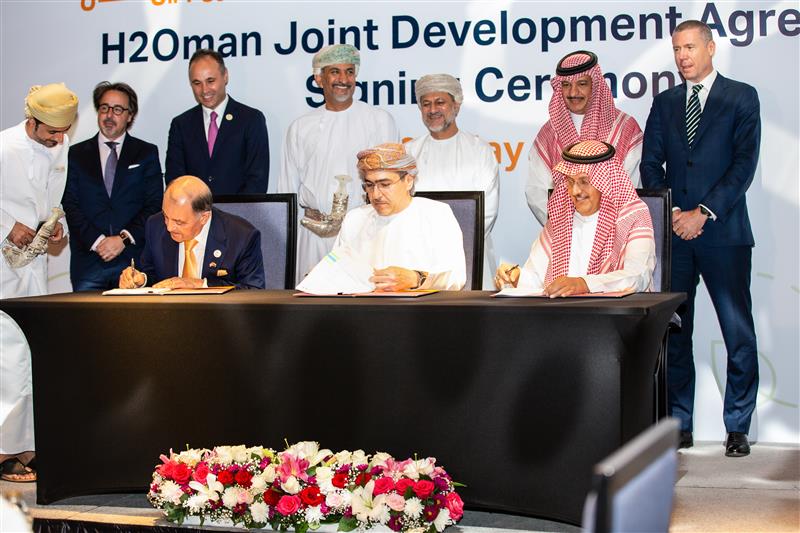
The JDA signing follows a MoU signed in December 2021. Envisioned for Oman's Salalah Free Zone, the JV project would be based on proven, world-class technology and include: the innovative integration of renewable power from solar, wind and storage; production of H2 by electrolysis; production of nitrogen by air separation; and production of green ammonia. It is anticipated that the green H2-based ammonia production facility would be equally owned by the project partners. Air Products Chairman, President and Chief Executive Officer Seifi Ghasemi said, “We are delighted and honored to work with the government of Oman to develop this multibillion-dollar project, which would be similar to the world-scale green hydrogen project we are implementing with our partners in NEOM in the Kingdom of Saudi Arabia. We look forward to applying our know-how, technology and more than 60 years of experience in hydrogen to help move this project forward and take another significant step in decarbonizing the world.” OQ Chairman Mulham Al Jarf said, “We are proud of our partnership with ACWA Power and Air Products. This project positions OQ as an energy transition enabler, while playing on our strengths and leveraging our expertise in the downstream chemicals business, particularly in Salalah where we have extensive operations, and our demonstrated ability to off-take products and competitively deliver them to global customers. The project fits well with the Sultanates’ renewable energy strategy and fosters investments in alternative energy resources, both of which contribute to Oman Vision 2040." ACWA Power Chairman Mohammad A. Abunayyan said, “As a company that is driving the transition towards a greener future through utilizing cutting-edge technologies and innovative solutions, we are extremely proud to support the Government of Oman’s ambition to pursue decarbonization and advance the development of green hydrogen, considered to be the fuel of the future. Our investment in developing and building water desalination and power production plants in Oman started in 2011, and we continue to expand our robust portfolio in the Sultanate. Utilizing our global expertise, we were successfully able to launch Oman’s first utility-scale renewable energy project. Oman continues to be a key market for ACWA Power for its potential, resources and location, making it a tremendous enabler for the production of green hydrogen. The signing of the joint development agreement is another milestone and signifies the continued trust being placed in ACWA Power by all our partners in bringing this ambitious project to life. We aim to leverage our proven track record, knowledge and expertise in developing sustainable global scale green projects including NEOM – a pioneering at-scale green hydrogen and ammonia facility, and we are confident of leading green hydrogen development globally through partnership and collaboration.” |
|
| pageLayoutLeft | CVR Energy subsidiary selects Honeywell for a lower-carbon H2 study | 5/26/2022 10:21:57 AM | False | CVR Energy subsidiary selects Honeywell for a lower-carbon H2 study | Honeywell announced that it has been selected by Coffeyville Resources & Marketing for a feasibility study for lower-carbon H2 production in Coffeyville, Kansas. | Honeywell announced that it has been selected by Coffeyville Resources & Marketing for a feasibility study for lower-carbon H2 production in Coffeyville, Kansas. | Honeywell announced that it has been selected by Coffeyville Resources & Marketing, a wholly owned subsidiary of CVR Energy for a feasibility study for lower-carbon H2 production in Coffeyville, Kansas. The study will evaluate the application of carbon capture and H2 purification as an emission reduction solution. 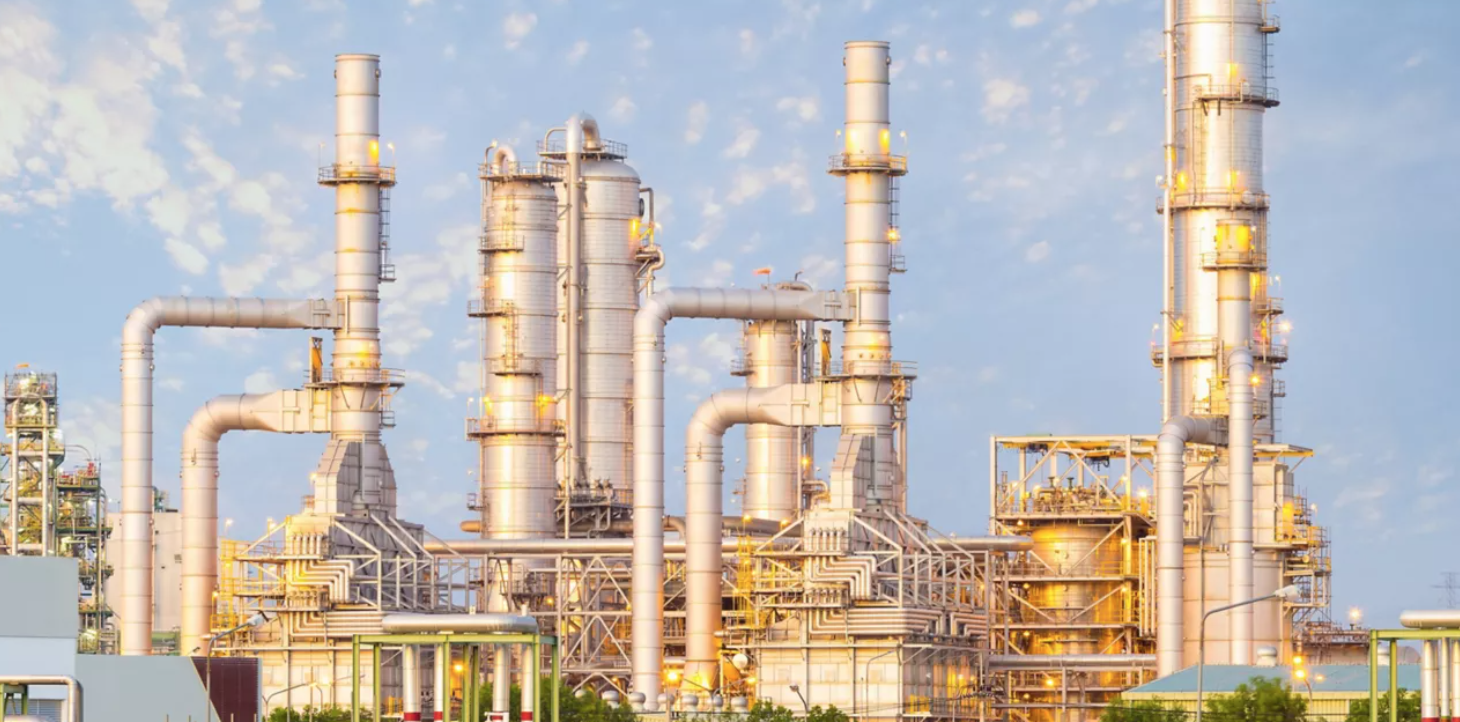
The Coffeyville site is evaluating utilizing Honeywell UOP Ecofining technology to convert seed oils, tallow and white/yellow greases into renewable diesel fuel. CVR and Honeywell will now evaluate further reduction of the carbon footprint at the Coffeyville site with lower-carbon H2. Depending on the inlet gas composition and product requirements, Honeywell UOP carbon capture technologies can recover greater than 99% of the CO2 in the existing H2 plant syngas while increasing high-purity H2 recovery. The amount of net CO2 captured and sequestered by renewable fuel producers can be used to adjust the carbon intensities of the associated fuel pathways. “We are pleased to take another step in our exploration of reduced emissions,” said Dave Lamp, Chief Executive Officer of CVR Energy. “We are excited to evaluate further reducing the carbon intensity of this important product through the potential conversion to lower-carbon hydrogen production at Coffeyville.” “Refiners and companies producing and/or using hydrogen are looking for ways to decarbonize. Honeywell has a suite of carbon capture and hydrogen purification solutions to reduce CO2,” said Barry Glickman, vice president and general manager, Honeywell Sustainable Technology Solutions. “A feasibility study, similar to the one we are conducting for CVR, is one path to help refiners and other companies determine which solution addresses their specific requirements.” |
|
| pageLayoutLeft | Fortescue Future Industries, Qlimate to explore quantum solutions in green H2 | 5/26/2022 11:05:27 AM | False | Fortescue Future Industries, Qlimate to explore quantum solutions in green H2 | Fortescue Future Industries announced that it would become a foundational member of the Qlimate Initiative to explore quantum computing solutions in green H2. | Fortescue Future Industries announced that it would become a foundational member of the Qlimate Initiative to explore quantum computing solutions in green H2. | Qlimate and Fortescue Future Industries (FFI) announced that FFI would become a foundational member of the Qlimate Initiative to explore quantum computing solutions in green H2. 
Qlimate, backed by PsiQuantum has secured substantial capacity on the early machines. Qlimate has a singular focus on partnering with leaders in decarbonization to maximize climate impact and facilitating their access to the first generation of fault-tolerant quantum computers. FFI and Qlimate entered into a membership agreement to explore quantum solutions in the field of green H2. FFI Chairman Dr Andrew Forrest AO and Jeremy O’Brien, co-founder and CEO of PsiQuantum, jointly announced the ambition at the World Economic Forum in Davos. FFI’s membership in Qlimate is the first step towards a broader strategy to develop algorithms solving computational bottlenecks in modelling proton exchange membrane technology and pulse electrolysis – key enablers for more efficient green H2 production – with a view to building and scaling quantum computing-enabled green H2 ventures. Dr Forrest said, “The Qlimate initiative with leading quantum computing company PsiQuantum is critical to lowering emissions through green energy production, and this partnership, through greater knowledge, will help to achieve that faster. PsiQuantum’s fault-tolerant quantum computer could be a leading light in technology for green hydrogen, and FFI as a first mover in green tech will help make it happen.” “We are delighted that FFI shares our vision and is willing to take ambitious steps towards delivering some of the most promising decarbonization tools for potentially taking years off the path to net zero – helping the world to get back onto the target 1.5°C trajectory,” said Jeremy O’Brien, co-founder and CEO of PsiQuantum. “Through this joint effort, we expect to improve the efficiency of green hydrogen electrolysis and significantly decrease production costs, helping build a viable green hydrogen economy. Given the transformational nature of this type of computing, not pursuing it is a bet that industry can’t afford not to make.” |
|
| pageLayoutLeft | Aramco, Repsol to use green H2 and CO2 to generate sustainable synthetic fuels | 5/26/2022 11:26:38 AM | False | Aramco, Repsol to use green H2 and CO2 to generate sustainable synthetic fuels | Johnson Matthey and bp have announced that its Fischer Tropsch CANS and HyCOgen technologies have been selected for use by Aramco and Repsol at a new synthetic fuels plant in Bilbao, Spain. | Johnson Matthey and bp have announced that its Fischer Tropsch CANS and HyCOgen technologies have been selected for use by Aramco and Repsol at a new synthetic fuels plant in Bilbao, Spain. | Johnson Matthey and bp have announced that their co-developed, Fischer Tropsch (FT) CANS technology and Johnson Matthey’s reverse water gas shift technology, HyCOgen, have been selected for use by Aramco and Repsol at a new synthetic fuels plant in Bilbao, Spain. The plant will be one of the world's first to use renewable green H2 and CO2 as its only raw materials. It is due to be commissioned in 2024, with a starting capacity of more than 2,100 tpy. It will produce a sustainable synthetic drop-in fuel that can be blended for existing road vehicle engines, planes and ships. It is the second license signed for the FT CANS technology, which was jointly developed with bp to deliver significant environmental and operational benefits. It converts synthesis gas (syngas), generated from sources such as industrial emissions, direct air capture, municipal solid waste or other renewable biomass, into long-chain hydrocarbons suitable to produce diesel and jet fuels. It is the first license signed for Johnson Matthey’s recently launched HyCOgen technology, which uses a catalyzed process to convert CO2 and green H2 into carbon monoxide, which is then combined with additional H2 to form syngas. Coupling HyCOgen and FT CANS technologies provides an end-to-end, scalable process optimized for high conversion efficiency — enabling the production of premium quality synthetic crude oil. Aramco Chief Technology Officer, Ahmad Al-Khowaiter said, “This agreement supports our ongoing work to develop lower-emission transport solutions and we are thrilled by the opportunity it represents. Converting CO2 into synthetic, lower-carbon fuels can meaningfully contribute to the reduction of transport emissions and, through this strategic partnership, we aim to harness innovative technologies that can unlock the full potential of both sustainable fuels and chemicals — and demonstrate their competitiveness.” Adriana Orejas, Director Industrial Transformation and Deep Tech at Repsol said, “The development of Bilbao synthetic fuel, where sustainable synthetic fuel shall be produced, represents an important step on our commitment of being a net-zero emission company by 2050, aligned with the climate objectives set out in Paris by COP21. Coupling Johnson Matthey, a reliable and demonstrated global leader technologist, HyCOgen and FT CANS Technology allow us to demonstrate the whole value chain of producing sustainable fuel from CO2 and renewable hydrogen as unique raw materials, complementing Repsol´s portfolio of low carbon fuels alternatives.” Noemie Turner, VP Technology development & commercialization at bp said, “Repsol and Aramco choosing to license our co-developed FT CANS technology recognizes great science and engineering. This builds on the first license to Fulcrum Bioenergy, further demonstrating the key role of the technology in the production of sustainable fuels.” Jane Toogood, Sector Chief Executive at Johnson Matthey said, “In licensing both the HyCOgen and FT CANS technologies for their Bilbao plant, Repsol and Aramco have recognized the potential of this pioneering solution — and shown that we’re a trusted partner in sustainable fuel production technology.” |
|
| pageLayoutLeft | Airbus increases its UK innovation footprint to develop new H2 technologies | 5/26/2022 12:38:26 PM | False | Airbus increases its UK innovation footprint to develop new H2 technologies | Airbus is strengthening its presence in the UK with the launch of a zero-emission development center for H2 technologies. | Airbus is strengthening its presence in the UK with the launch of a zero-emission development center for H2 technologies. | Airbus is strengthening its presence in the UK with the launch of a zero-emission development center (ZEDC) for H2 technologies. 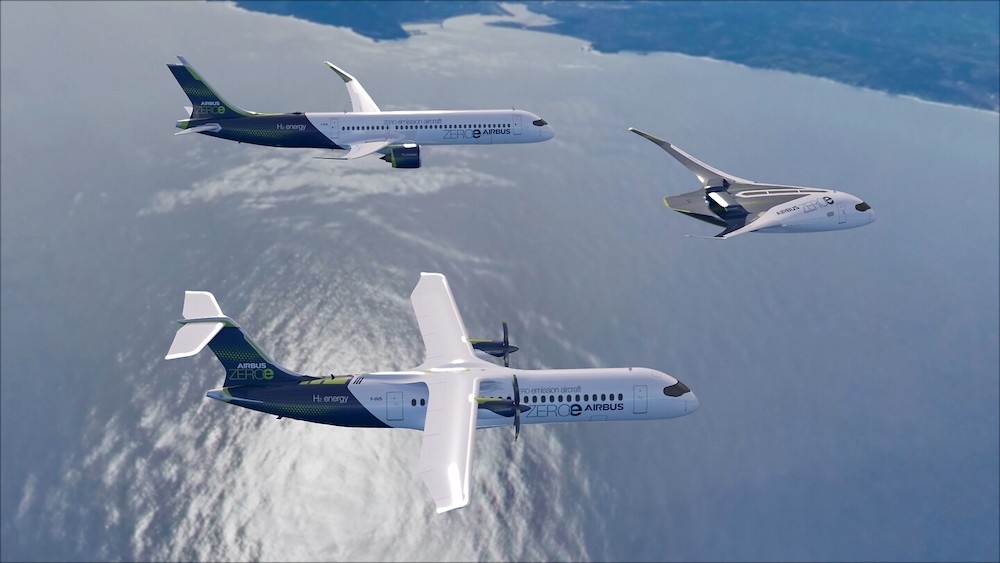
A priority for the UK ZEDC will be the development of a cost-competitive cryogenic fuel system required for the successful entry-into-service of Airbus’ ZEROe passenger aircraft by 2035 and to accelerate UK skills and know-how on H2-propulsion technologies. The UK ZEDC will benefit from the recent commitment by the UK government to guarantee £685 MM of funding to the Aerospace Technology Institute (ATI) over the next three years to support the development of zero-carbon and ultra-low-emission aircraft technologies. “Establishing the ZEDC in the UK expands Airbus’ in-house industrial capabilities to design, develop, test and manufacture cryogenic hydrogen storage tanks and related systems for the ZEROe project across Airbus’ four home countries. This, coupled with our partnership with ATI, will allow us to leverage our respective expertise to realize the potential of hydrogen technology to support the decarbonization of the aviation industry,” said Sabine Klauke, Airbus Chief Technical Officer. Technology development at the new UK ZEDC, to be based in Filton, Bristol, has already started and will cover the full product capabilities from components up to whole system and cryogenic testing. End-to-end fuel systems development, a specialty of Airbus in the UK, is one of the most complex technologies crucial to the performance of a future H2 aircraft. The ZEDC complements Airbus’ existing research and technology footprint in the UK, as well as the work on cryogenic liquid H2 tanks being done at Airbus’ existing ZEDCs in Madrid, Spain and Stade, Germany (composite structure technologies) and in Nantes, France and Bremen, Germany (metallic structural technologies). All Airbus ZEDCs are expected to be fully operational and ready for ground testing with the first fully functional cryogenic H2 tank during 2023, and with flight testing starting in 2026. With this new facility, Airbus reaffirms its long-term commitment to remain a major player in Britain’s world-leading aerospace ecosystem, working with the Jet Zero Council to drive forward research in the sector, supporting green jobs and helping the UK meet its ambitious net zero targets. The launch of the UK ZEDC follows the opening of the £40-MM AIRTeC research and testing facility in Filton in June 2021, jointly funded by the ATI and Airbus, to deliver the next generation of aircraft wing, landing-gear systems and fuel system designs. |
|
| pageLayoutLeft | GE Power Conversion and partners collaborate on solid oxide fuel cell power installations | 5/26/2022 12:57:30 PM | False | GE Power Conversion and partners collaborate on solid oxide fuel cell power installations | GE Power Conversion is marking the success of two innovation projects aimed at reducing maritime GHG emissions. | GE Power Conversion is marking the success of two innovation projects aimed at reducing maritime GHG emissions. | GE Power Conversion is marking the success of two innovation projects aimed at reducing maritime GHG emissions. 
MSC Ship
GE is helping to make progress towards net-zero operations for ship and port operators through cleaner power systems and digital energy management. At sea and on land, its electric microgrid systems can host integration of new energy sources and smarter digital and control technologies as they develop. GE’s projects, part of the UK’s Clean Maritime Demonstration Competition, benefitted from partners’ vessel and port applications to accelerate solutions based on real-world scenarios. Power and energy specialists GE have been working on integration of multi-megawatt (MW) solid oxide fuel cell (SOFC) systems into a large ship architecture with partners Ceres, Lloyd’s Register and MSC Cruise Management (UK) Ltd. The team’s efforts resulted in a major milestone - a collaborative design for up to 10 MW on-board solid oxide fuel cell power installations. At this scale, systems can provide electric power for large ships and replace conventional diesel generating sets. The system has the potential to reduce CO2 emissions by 47%, and significantly improve air quality and noise pollution when ships are in port. SOFC have the benefit of being able to operate on different types of new, cleaner fuels, a benefit as ship operators look to accommodate the transition to future fuels. GE has also been working on reducing emissions at ports by helping to manage power and energy more efficiently. With project partners PD Ports Ltd, Connected Places Catapult and Teesside University, GE’s cloud-based, integrated digital concept aims to improve situational awareness on energy supply and demand. Benefitting from PD Ports’ data has enabled the team to create operational scenarios to carry out testing using an emulated digital twin platform. Digital energy management is part of GE Power Conversion’s range of Port Electrification solutions. GE Power Conversion’s Managing Director in the UK, Andy Cooper said, “Industry is investing in clean ship and clean port technology readiness, but it’s really important we work with customers on their operational needs if the path to net zero is to be viable. Congratulations to the teams on making impressive progress towards potential commercialization.” |
|
| pageLayoutLeft | Aberdeen H2 fueling station hosts deployment of innovative fuel cell generator trial | 5/26/2022 1:20:50 PM | False | Aberdeen H2 fueling station hosts deployment of innovative fuel cell generator trial | A H2-power 25kW energy generator is being trialed by H2 start-up company Hydrologiq at the Aberdeen City Hydrogen Energy Storage site. | A H2-power 25kW energy generator is being trialed by H2 start-up company Hydrologiq at the Aberdeen City Hydrogen Energy Storage site. | A H2-power 25kW energy generator is being trialed by H2 start-up company Hydrologiq at the Aberdeen City Hydrogen Energy Storage (ACHES) site, in partnership with Aberdeen City Council and Norco Energy. 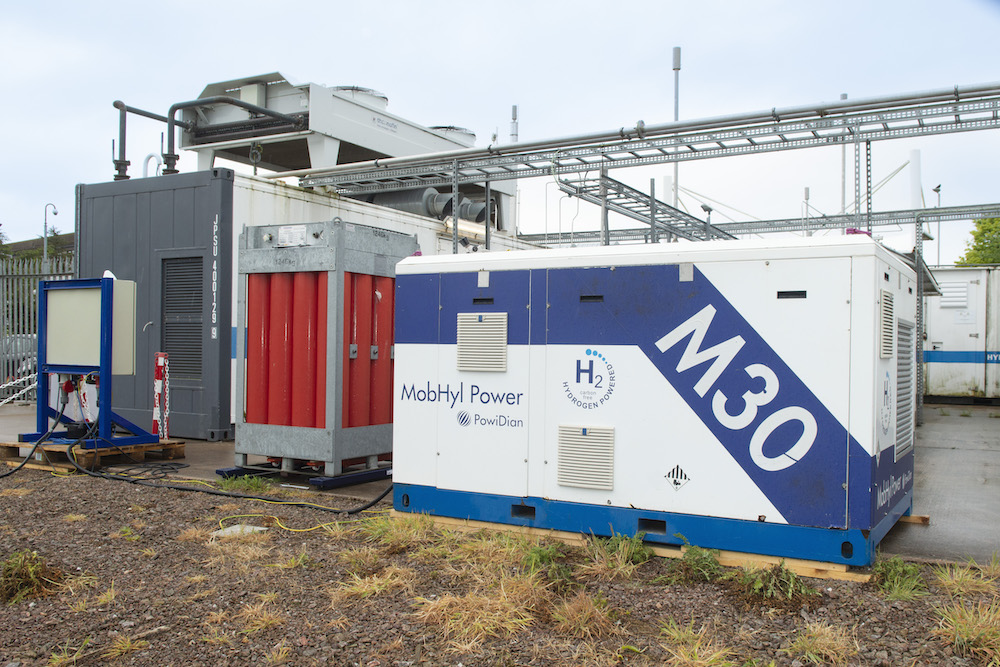
The generator, believed to be the first of its size deployed in the UK, uses a fuel cell to convert H2 and water into an electrical current and is aimed at replacing traditional diesel-fueled generators to produce clean energy with the added benefit of vastly reduced noise and vibration output which lends itself to use at construction sites, filmsets, events and festivals. The trial will stress test the generator before it is deployed more widely across the UK and will use H2 provided by the refueling station at ACHES with deployment support, maintenance and logistics provided by Norco Energy. The trial is running from May 4 until May 30 and is being supported by grant funding from the UK Government’s Department for Business, Energy and Industrial Strategy as part of the Energy Entrepreneurs Fund. Aberdeen City Council Co-Leader Councilor Alex Nicoll said, “Hosting the trial of this generator in Aberdeen further showcases the city at the forefront of innovation for the hydrogen industry across the country. The city has forged ahead to bring hydrogen vehicles into its transport mix and the introduction of new technologies shows the diverse range of uses hydrogen has as a fuel.” Aberdeen City Council Co-Leader Ian Yuill said, “We are thrilled to work with the teams at Hydrologiq and Norco Energy to trial this new technology at ACHES. Both organizations match the passion we have in Aberdeen about the transition to green energy and we are excited to see the results of the trial.” Benjamin Lindley, Director of Hydrologiq said, "2022 heralds a new age for generator power. The diesel engine has been around since the 1800s, so it's about time we embraced new technology to respond to a modern world where air quality and noise pollution are top of the agenda. Everyone at Hydrologiq is proud of our collaboration with Aberdeen City Council and Norco Energy to make this dream a reality today." Frank Burns, Hydrogen Lead at Norco Group Ltd said, “Norco are extremely excited to be working with ACC and Hydrologiq to bring the first Hydrogen fuel cell generator to Aberdeen. Hydrogen has the potential to be the predominant stored energy source globally. At Norco we have recognized this. Transitioning our expertise in electrical stored energy solutions to incorporate hydrogen production, generation and storage was a natural progression for us." |
|
| pageLayoutLeft | Chemours explores capacity investments to advance support of the H2 economy | 5/27/2022 9:45:14 AM | False | Chemours explores capacity investments to advance support of the H2 economy | The Chemours Company and Advanced Performance Materials announced it is investigating capacity investments to support its growing H2 economy business. | The Chemours Company and Advanced Performance Materials announced it is investigating capacity investments to support its growing H2 economy business. | The Chemours Company and Advanced Performance Materials announced it is investigating capacity investments to support its growing H2 economy business. This increased capacity in ionomers would support the demand growth within water electrolysis and fuel cell technology. The company is considering potential locations in the U.S. and Europe, with an eye to local community engagement and collaboration. Chemours continues to set the standard in responsible manufacturing and this capacity will help the company advance their goal to continue shifting the portfolio to sustainable offerings that make a specific contribution to achieving the United Nations Sustainable Development Goals (UN SDGs). “The hydrogen economy demand is growing exponentially, and our products are truly at its core,” said Denise Dignam, President of Advanced Performance Materials at Chemours. “To meet this demand requires private/public partnerships with the right partners—partners that will be an asset to the community—responsible. And we believe Chemours is who communities, regions, and countries should look to in order to deliver capacity necessary to achieve clean energy while maintaining a focus on protecting human health and the environment.” The capacity investment will be focused on ionomers that support the Nafion platform, which is known for unparalleled performance and durability. Nafion ion exchange membranes provide a clean energy solution through water electrolysis creating green H2 from renewable power. Fuel cells—another Nafion membrane application—convert H2 to electricity, an alternative to carbon-based energy sources. |
|
| pageLayoutLeft | Ecopetrol closes alliances with six international companies to develop H2 strategy | 5/27/2022 10:09:44 AM | False | Ecopetrol closes alliances with six international companies to develop H2 strategy | Ecopetrol Group started the production of green H2 with a 50 kilowatts electrolyzer and 270 solar panels at the Cartagena refinery. | Ecopetrol Group started the production of green H2 with a 50 kilowatts electrolyzer and 270 solar panels at the Cartagena refinery. | Ecopetrol Group started the production of green H2 with a 50 kilowatts electrolyzer and 270 solar panels at the Cartagena refinery. Following a robust selection process, which included more than eighty companies from sixteen countries, six companies were chosen as allies. Low-carbon H2 will contribute to the reduction of Carbon emissions of the Ecopetrol Group by 2050. With the purpose of advancing the results of its strategic plan of low-carbon H2 (green, blue and white), Ecopetrol selected Total Eren and EDF from France, Siemens Energy from Germany, H2B2 from Spain, Empati from UK and Mitsui from Japan, as strategic allies. Next June, these six companies and Ecopetrol will begin a joint work to articulate actions that will strengthen the development of the low-carbon strategic plan, with specific projects to decarbonize production of H2 at the refineries and initiatives for industrial use and sustainable mobility. The main objectives of these alliances are:
“We continue working in the development of our plan of low-carbon hydrogen production that seeks to diversify the portfolio and decarbonize our operations. Currently we have eighteen opportunities and initiatives in progress, and these alliances with specialized companies will robust our plan to achieve the goals that we have set in our strategy 2040 Energy that Transform,” said Ecopetrol’s CEO, Felipe Bayón in Davos (Switzerland) where he is attending the 2022 Annual Meeting of the World Economic Forum. More than 80 companies from 16 countries participated in a rigorous and transparent process, that included three sorting stages and concluded with the selection of six companies to close the alliances. The factors considered in the selection process were availability of investment capital, access to cutting-edge technology, experience in project development, access to markets and added valued. For the execution of its strategic plan of green, blue and white H2, that has a production goal of 1 MMtpy by 2040, the Ecopetrol Group estimates annual investments close to $140 MM until 2040. This energetic will contribute with 9% to 11% of the goal of reducing 50% of carbon emissions, in scopes 1, 2 and 3, by 2050. |
|
| pageLayoutLeft | GCTD to test H2 fuel cell bus | 5/27/2022 10:37:14 AM | False | GCTD to test H2 fuel cell bus | GCTD selected H2 fuel cell technology for its preferred zero emission fuel choice. In that effort, GCTD will host a demonstration of a H2 fuel cell bus. | GCTD selected H2 fuel cell technology for its preferred zero emission fuel choice. In that effort, GCTD will host a demonstration of a H2 fuel cell bus. | Gold Coast Transit District (GCTD) is committed to clean transportation and is developing a transition plan to reach zero emissions by 2040. As part of that plan, GCTD selected H2 fuel cell technology for its preferred zero emission fuel choice. In that effort, GCTD will host a demonstration of a H2 fuel cell bus on June 1st and 2nd. The bus, made by New Flyer, will be at GCTD’s operations and maintenance site to be test driven on several routes over those two days. 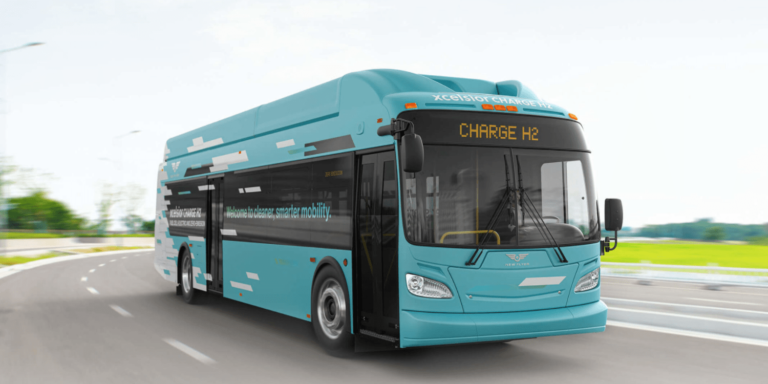
While GCTD’s zero-emission transition plan is still under development, GCTD must strategically decide which type of technology would work best under local operating conditions. There are two types of zero emission buses commercially available: battery electric vehicle buses, and H2 fuel cell electric buses. After thorough analysis of routes and terrain facilitated by project consultant Stantec, Inc., GCTD chose to pursue the H2 fuel cell electric bus due to its range capability and fueling process. A H2 fuel cell bus can travel up to 350 miles on a single refueling and requires no off-board electric recharging. Unlike buses that run on fossil fuels, a H2 fuel cell electric bus is powered by two of earth's most basic components—oxygen and H2. H2 fuel cells produce electricity by combining H2 and oxygen atoms. The H2 reacts with oxygen across an electrochemical cell like that of a battery to produce electricity, water, and small amounts of heat. The electric current is used to power the batteries which ultimately power the buses. “We are excited about the potential for hydrogen fuel cell technology and look forward to testing the bus for a few days to give our employees and passengers a glimpse into our zero-emission future,” said GCTD General Manager, Vanessa Rauschenberger. |
|
| pageLayoutLeft | LSB Industries launches green ammonia project | 5/27/2022 11:24:37 AM | False | LSB Industries launches green ammonia project | LSB Industries announced that it entered into agreements with thyssenkrupp Uhde and Bloom Energy to develop a project to produce approximately 30,000 metric tpy of zero-carbon green ammonia at LSB’s Pryor, Oklahoma facility. | LSB Industries announced that it entered into agreements with thyssenkrupp Uhde and Bloom Energy to develop a project to produce approximately 30,000 metric tpy of zero-carbon green ammonia at LSB’s Pryor, Oklahoma facility. | LSB Industries announced that it entered into agreements with thyssenkrupp Uhde and Bloom Energy to develop a project to produce approximately 30,000 metric tpy of zero-carbon or green ammonia at LSB’s Pryor, Oklahoma facility. Green ammonia is produced by extracting H2 from water using an electrolyzer powered by a renewable energy source, such as solar or wind. Since no natural gas or other fossil fuels are used as the feedstock to the ammonia production process, nor as the power source, the end-product has no associated carbon emissions. Thyssenkrupp Uhde will develop the engineering design to convert a small portion of Pryor’s grey ammonia capacity into green ammonia. Pending results of the feasibility study are underway, and subsequent board approval, the project will be constructed in two phases: first with Bloom supplying a 10 MW solid oxide electrolyzer, followed by the installation of an additional 20 MW alkaline electrolyzer unit, which will be sourced from a leading manufacturer. Bloom will, own, operate and maintain the solid oxide electrolyzer that, once in operation, will be the largest of its kind in the world. Once the second electrolyzer is installed and operational, Pryor will be the largest green ammonia production site in North America. “We are very excited to partner with Bloom Energy and thyssenkrupp Uhde in taking our first step to becoming a leading supplier of zero carbon or green ammonia in a unique facility that will have two electrolyzer technologies operating side by side. We believe that being an early entrant into the green ammonia space will allow us to become a leading player as the market evolves,” said Mark Behrman, President, and Chief Executive Officer of LSB Industries. “This project is very important for LSB and our partners because, in addition to its initial environmental benefit, it provides a learning opportunity. With two electrolyzer technologies working together in a real-world application, we can learn how to effectively develop projects and operate facilities in this exciting new environment. We view this project as our first critical step in becoming a major facilitator and participant in the green ammonia market of the future.” “This project highlights the value that strategic collaborations and industry-leading innovation can bring to lead advancements in decarbonizing today’s energy system,” said Rick Beuttel, vice president of Bloom Energy’s hydrogen business. “With a focus on providing highly efficient and low-cost green hydrogen at scale, we’re proud to partner with LSB to accelerate the adoption of this clean, carbon-free fuel.” The green H2 produced from the electrolyzers as part of the ammonia production process is expected to qualify for federal incentive programs such as the production and investment tax credits currently under evaluation by Congress. |
|
| pageLayoutLeft | California Hydrogen Coalition launches TV ad urging legislature to boost funding for H2 fueling stations | 5/28/2022 1:40:53 PM | False | California Hydrogen Coalition launches TV ad urging legislature to boost funding for H2 fueling stations | The California Hydrogen Coalition is launching an aggressive digital and television advertising campaign this week designed to win support in the California legislature for additional funding to develop H2 fueling stations across the state. | The California Hydrogen Coalition is launching an aggressive digital and television advertising campaign this week designed to win support in the California legislature for additional funding to develop H2 fueling stations across the state. | The California Hydrogen Coalition is launching an aggressive digital and television advertising campaign this week designed to win support in the California legislature for additional funding to develop H2 fueling stations across the state. The Coalition has begun running a television ad promoting hydrogen cars to help meet Governor Gavin Newsom’s 2035 zero emission vehicle goals. With a six figure buy in the Sacramento area, the ad will run for about one month. The 30-second television spot reads: “Reaching for a monumental achievement… is challenging. Like meeting our state’s ambitious climate goals. To get there, we will need a choice, because battery electric cars aren’t for everyone. Hydrogen-fueled cars fill up in minutes. And they go further. But we need more hydrogen fueling stations so we can go long distances without worries. We won’t achieve our climate goals without hydrogen. ACT NOW. Contact your legislator. Urge funding for more hydrogen fueling stations… so California can achieve its zero emissions future.” The TV spot complements the Coalition’s other advertising campaign. Digital promotions have been running on local media websites as well as on social media platforms including Facebook and Instagram, featuring the same message. The Coalition also has billboards along major highways in Sacramento and at Sacramento International Airport. The Coalition also has undertaken a grassroots campaign at fueling stations, signing up drivers to contact their legislators. The Coalition is pushing for additional funding in the state budget for hydrogen fueling stations to help bolster massive private sector investments. It also is backing State Senator Josh Newman’s (D-Orange County) Senate Bill 1329 to expand the state’s H2 fueling network. The California Hydrogen Coalition is dedicated to enabling California’s transition to zero emission vehicles by expanding the availability of reliable, convenient and affordable H2 fueling. Its members include Air Liquide, Chevron, FirstElement Fuel, Hyundai, Shell, and Toyota. |
|
| pageLayoutLeft | California carbon capture bills pass state Senate with bipartisan support | 5/28/2022 2:15:43 PM | False | California carbon capture bills pass state Senate with bipartisan support | Three bills to advance carbon capture and storage in California passed the state Senate this week, bringing the state one step closer to commercializing CCS. | Three bills to advance carbon capture and storage in California passed the state Senate this week, bringing the state one step closer to commercializing CCS. | Three bills to advance carbon capture and storage in California passed the state Senate this week, bringing the state one step closer to commercializing CCS – climate technologies deemed critical to decarbonization by the International Energy Agency and the Intergovernmental Panel on Climate Change. “As set forth in the California Air Resources Board (CARB) draft Scoping Plan, achieving carbon neutrality in California by 2045 requires carbon capture and storage, which provides a permanent solution to mitigate emissions from large, hard-to-abate industries like cement, steel, and heavy-duty transport,” said Andrew Place, State Energy and Climate Policy Director at Clean Air Task Force (CATF). “California has been a leader not only in climate action and emissions reductions, but also in technology innovation and commercialization. We’re pleased to see the Senate advance these important bills and meaningfully contribute to California’s climate goals.” The three bills are:
Place continued: “Permitting carbon capture and storage projects in California currently entails a complex and opaque process. Projects are subject to multiple regulatory jurisdictions and there is currently no centralized coordination for permitting and siting. A coordinated and rigorous permitting process will facilitate project development by shortening permitting timelines, which will reduce risk for operators and allow for a faster scale-up of greenhouse gas emissions reductions, while also ensuring that projects are constructed in a safe and efficient manner.” “Carbon capture and sequestration projects, when deployed in an equitable way that supports the health and economic resiliency of overburdened and underserved communities while ensuring local benefits are maximized, can be a critical tool to achieving deep decarbonization at least cost. These bills will help to accelerate the deployment and commercialization of technologies to decrease emissions from industrial facilities in California and help commercialize the technology for deployment around the world – something leading energy and economic models find is critical to addressing climate change.” |
|
| pageLayoutLeft | Wärtsilä in U.S. customer collaboration to test H2 blended fuel | 5/30/2022 12:09:24 PM | False | Wärtsilä in U.S. customer collaboration to test H2 blended fuel | Wärtsilä, WEC Energy Group, the Electric Power Research Institute and Burns & McDonnell, have been contracted to carry out H2 fuel testing at the A.J. Mihm power plant in Michigan, U.S. | Wärtsilä, WEC Energy Group, the Electric Power Research Institute and Burns & McDonnell, have been contracted to carry out H2 fuel testing at the A.J. Mihm power plant in Michigan, U.S. | Wärtsilä, WEC Energy Group, the Electric Power Research Institute and Burns & McDonnell, have been contracted to carry out H2 fuel testing at the A.J. Mihm power plant in Michigan, U.S. The project supports WEC’s ambition to reduce the CO2 emissions from its electric generating fleet by 60% by the end of 2025, and by 80% by the end of 2030 from 2005 levels, and to be net carbon neutral by 2050. 
This will be one of the first cases where H2 is tested for use to reduce the carbon footprint of an existing gas-fueled power plant delivered by Wärtsilä. The 55 MW plant operates with three Wärtsilä 50SG engines running on natural gas. The parties will aim for testing fuel blends of up to 25 vol.% H2 mixed with natural gas, thus demonstrating the capability of the plant to reduce GHG emissions. The Wärtsilä engines can operate with this level of H2 blended with gas with little to no modification needed. Though Wärtsilä engines can be operated on even higher hydrogen-blend levels, these tests will be restricted to the limit of 25 vol% H2 for natural gas systems, according to the international equipment standard IEC/EN 60079-20-1. “These hydrogen tests reinforce the viability of the internal combustion engine as a future-proof technology that plays a key role in decarbonizing the power industry. We have long had a focus on creating solutions that enable zero-carbon power generation and are excited to begin this hydrogen testing project in the U.S. as a natural next step in developing our products to meet customer needs for a decarbonized future. Our engines already have the flexibility for both balancing the input of renewables into the power system, and baseload generation with a continuously increasing range of fuels,” said Jon Rodriguez, Director, Engine power plants, Wärtsilä North America. One engine will be selected for the test program, during which time it will continue to deliver power to the grid. For defined engine load levels, the H2 content within the fuel will be gradually increased to a maximum of 25 vol.%. Measurements of the engine’s performance will be made throughout the testing. Wärtsilä has already successfully carried out engine tests at its testing facilities in Vaasa, Finland and Bermeo, Spain, to assess the optimum engine parameters for operating with H2 fuel. In addition to the A.J. Mihm power plant, Wärtsilä has also supplied WEC Energy Group with seven Wärtsilä 50SG gas engines for the F. D. Kuester power plant in Michigan. Wärtsilä already has engine generating sets operating successfully on a natural gas and hydrogen blend in a newbuild power plant at an offshore floating testbed in Singapore. |
|
| pageLayoutLeft | DATS 24 opens a public H2 filling station in Wilrijk | 5/30/2022 12:32:37 PM | False | DATS 24 opens a public H2 filling station in Wilrijk | The opening of this public H2 station along the A12 motorway in Wilrijk is the starting shot for the opening of five new H2 stations in Belgium. | The opening of this public H2 station along the A12 motorway in Wilrijk is the starting shot for the opening of five new H2 stations in Belgium. | DATS 24, Colruyt Group's energy and fuel supplier, continues to play a pioneering role in the field of sustainable alternatives. In addition to its well-known commitment to CNG, it is also fully committed to electric driving. Electric cars also mean driving on H2. The opening of this public H2 station along the A12 motorway in Wilrijk is the starting shot for the opening of five new H2 stations in Belgium. Together with several partners, DATS 24 is also helping companies to introduce H2 cars into their fleets. 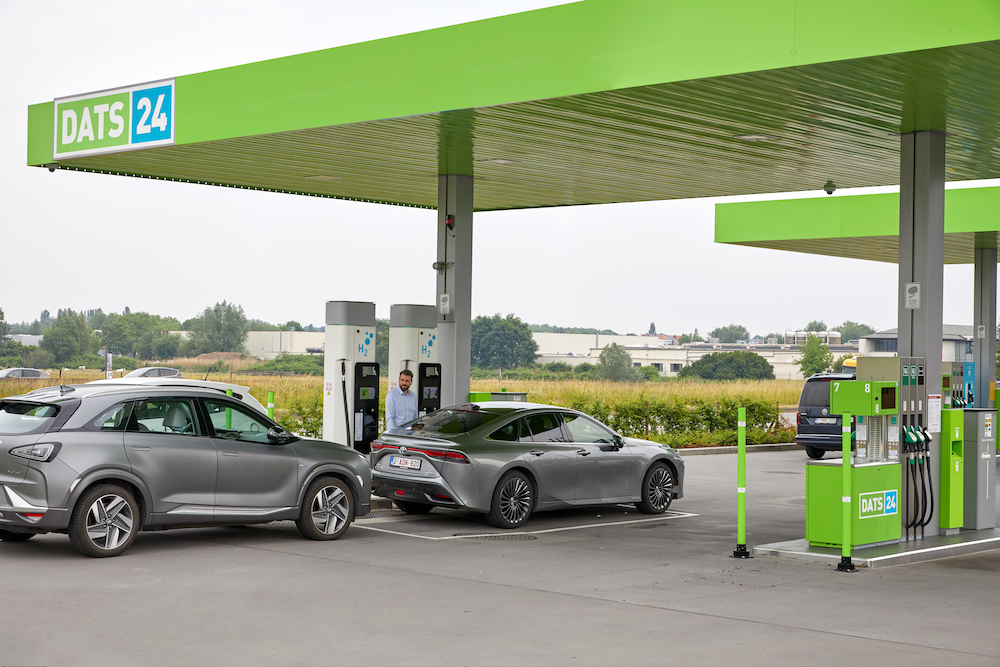
For DATS 24, H2 has strong potential as a sustainable fuel. In 2018 it launched the first fully integrated H2 filling station in Europe at its home base in Halle. Their second, new H2 station in Wilrijk next to the Cardoen site is now creating additional opportunities for companies and families in the Antwerp region. The intention is that H2 refuse lorries will soon be able to refuel here too. And the City of Antwerp is looking forward to this in the context of its sustainable mobility applications. Besides Wilrijk, in the coming months DATS 24 will be opening H2 stations in Haasrode, Erpe-Mere, Ollignies and Herve. This means that in the wide vicinity of these locations’ H2 is becoming a real option for the transport of people and goods. H2 powered electric vehicles offer unique advantages 
"Sustainability remains the guiding principle in everything we do. Both at Colruyt Group and at DATS 24. This means that we continue to invest in the production and distribution of renewable energy and fuels. The aim of DATS 24 is to make hydrogen as widely available as possible for the transport of people and goods," said Raf Flebus, Business Unit Manager of DATS 24. "Driving on hydrogen is driving electrically with, on top of that, a combination of unique advantages: a quick refill, emission-free driving and a guaranteed electric range of 650 to 700 km. All you need is a H2 filling station nearby. For many companies in this area this is now possible." DATS 24 can count on the support of several partners. One of those partners is WaterstofNet, which unites the H2 industry in Flanders and the south of the Netherlands in the Hydrogen Industry Cluster. Adwin Martens, Managing Director of WaterstofNet said, "An acceleration is needed to get society moving towards zero emissions. Green molecules such as hydrogen will play a crucial role in getting everyone on board. That is why we have ensured that this DATS 24 hydrogen station, quite a substantial investment, was co-financed within the Hydrogen Region 2.0 program of Interreg Flanders-Netherlands.” |
|
| pageLayoutLeft | Smoltek inks collaboration agreement to trial nanofiber-based cell material for PEM electrolyzers | 5/30/2022 1:03:11 PM | False | Smoltek inks collaboration agreement to trial nanofiber-based cell material for PEM electrolyzers | Smoltek Innovation has signed a collaboration agreement with a large international manufacturer of material for electrolyzers. | Smoltek Innovation has signed a collaboration agreement with a large international manufacturer of material for electrolyzers. | Smoltek Innovation has signed a collaboration agreement with a large international manufacturer of material for electrolyzers. The collaboration agreement includes the development of demonstrators based on Smoltek's highly efficient nanofiber-based cell material for PEM electrolyzers. The parties have signed a collaboration agreement, which means that Smoltek's carbon nanofibers and corrosion protection will be combined with other materials from the manufacturer, and catalyst particles from a third party, into a lab-sized demonstrator. This demonstration material will then be integrated into a complete PEM electrolyzer cell, followed by test runs and measurement of its performance. “It is exciting that we and our partner have now signed a collaboration agreement for this development project, and we are both looking forward to developing a complete PEM electrolyzer cell with our patent-protected technology,” said Fabian Wenger, Tech Lead at Smoltek Innovation. This project is conducted to verify the potential of Smoltek's nanofiber-based cell material and its ability to reduce the amount of extremely expensive catalyst particles in PEM electrolyzers. Smoltek's carbon nanofiber technology increases the active surface that is in contact with the membrane in the electrolyzer cell, which in turn reduces the total size of the electrolyzer with maintained production capacity. “Together, these properties significantly reduce the production cost for green hydrogen,” said Ellinor Ehrnberg, President of Smoltek Innovation. EU H2 investments are skyrocketing On May 18, 2022 the European Commission presented a wide range of initiatives to reduce Europe’s reliance on fossil fuels and a list of proposals aimed to stimulate the production of renewable H2 and to improve framework conditions for European electrolyzer manufacturers were included in this plan, known as RePowerEU. These proposals included, among others, two main targets: To increase the industry target from 50% renewable H2 consumption in 2030 to 75%. And to doubling the next ETS Innovation Fund call for large scale projects set to be announced in Autumn of this year. €3 B will be made available, for among other electrolyzer manufacturers. ”Furthermore, the European electrolyser manufacturing capacity must be scaled-up significantly to meet the expected demand for renewable hydrogen production. Electrolyser manufacturers in Europe set the objective to have in place by 2025 a combined annual electrolyser manufacturing capacity in Europe of 17.5 GW, and to further increase that capacity by 2030 in line with projected demand for renewable and low-carbon hydrogen48. To support these objectives, the European Commission will put in place enabling regulatory framework, facilitate access to finance and promote efficient supply chains. The upscaling of the electrolyser manufacturing capacities will require investments estimated at up to €2bn,” said the RePoweEU plan. |
|
| pageLayoutLeft | Caterpillar to launch demonstration project using H2-fueled combined heat and power system | 5/31/2022 8:50:38 AM | False | Caterpillar to launch demonstration project using H2-fueled combined heat and power system | Caterpillar announced a three-year project with Minnesota-based District Energy St. Paul to demonstrate a H2-fueled combined heat and power system. | Caterpillar announced a three-year project with Minnesota-based District Energy St. Paul to demonstrate a H2-fueled combined heat and power system. | Caterpillar announced a three-year project with Minnesota-based District Energy St. Paul to demonstrate a H2-fueled combined heat and power (CHP) system. The project is supported and partially funded by the U.S. Department of Energy and backed by the National Renewable Energy Laboratory. “Caterpillar is focused on supporting our customers with reliable, sustainable power solutions,” said Joe Creed, Caterpillar group president of Energy and Transportation. “This hydrogen demonstration project will enable us to evaluate additional hydrogen fuel options for an existing energy-efficient engine, providing even more possibilities for helping our customers meet their climate-related goals and objectives.” CHP systems from Caterpillar provide both electricity and heat simultaneously, increasing overall efficiency and reducing exhaust emissions. To assess the potential of a H2-fueled CHP system under real-world operating conditions, power and heat from the demonstration project will integrate into District Energy St. Paul’s electrical and thermal infrastructure. District Energy St. Paul distributes chilled water and hot water to heat and cool buildings and single-family homes in downtown St. Paul, Minnesota, and adjacent areas. Scheduled to start early next year, the demonstration project builds on Caterpillar’s 35 years of experience with high-H2 fuel. The company currently offers a 1250 kW Cat generator set capable of operating on 100% H2, including fully renewable green H2, on a designed-to-order basis, as well as commercially available power generation solutions from 400 kW to 4.5 MW that can be configured to operate on natural gas blended with up to 25% H2. |
|
| pageLayoutLeft | SSAB, Alfa Laval join forces to produce the first heat exchanger made using H2-reduced steel | 5/31/2022 9:15:44 AM | False | SSAB, Alfa Laval join forces to produce the first heat exchanger made using H2-reduced steel | SSAB and Alfa Laval have signed an agreement to collaborate on the development and commercialization of the world’s first heat exchanger to be made using fossil-free steel. | SSAB and Alfa Laval have signed an agreement to collaborate on the development and commercialization of the world’s first heat exchanger to be made using fossil-free steel. | SSAB and Alfa Laval have signed an agreement to collaborate on the development and commercialization of the world’s first heat exchanger to be made using fossil-free steel. The goal is to have the first unit made with H2-reduced steel ready in 2023. 
The collaboration between the two industrials is an important step in Alfa Laval’s journey to become carbon neutral by 2030. It is also well aligned with SSAB’s aim to largely eliminate CO2 emissions from its own operations in around 2030. Together with our partners and customers, SSAB aims to create complete fossil-free value chains from the mine to the end-product using HYBRIT technology. “We're proud to welcome Alfa Laval as a partner and look forward to jointly exploring ways forward to mitigate climate change,” said Martin Lindqvist, President and CEO of SSAB. “With this collaboration we´re reaching new segments, and hopefully inspiring a whole new range of customers.” “I’m pleased to announce this collaboration with SSAB which builds on our shared expertise and a determination to drive innovation,” said Tom Erixon, President and CEO of Alfa Laval. “By bringing together their fossil-free steel and our energy-efficient heat exchangers we can contribute to the industry’s transformation towards carbon neutrality.” |
|
| pageLayoutLeft | North Carolina State University develops new technique for extracting H2 gas from liquid carriers | 5/31/2022 12:07:55 PM | False | North Carolina State University develops new technique for extracting H2 gas from liquid carriers | Researchers from North Carolina State University have developed a new technique for extracting H2 gas from liquid carriers which is faster, less expensive and more energy efficient than previous approaches. | Researchers from North Carolina State University have developed a new technique for extracting H2 gas from liquid carriers which is faster, less expensive and more energy efficient than previous approaches. | Researchers from North Carolina State University have developed a new technique for extracting H2 gas from liquid carriers which is faster, less expensive and more energy efficient than previous approaches. 
“Hydrogen is widely viewed as a sustainable energy source for transportation, but there are some technical obstacles that need to be overcome before it can be viewed as a practical alternative to existing technologies,” said Milad Abolhasani, corresponding author of a paper on the new technique and an associate professor of chemical and biomolecular engineering at NC State. “One of the big obstacles to the adoption of a hydrogen economy is the cost of storage and transportation.” H2 fuel does not result in CO2 emissions. And H2 refueling stations could be located at existing gas stations, taking advantage of existing infrastructure. But transporting H2 gas is dangerous, so H2 needs to be transported via a liquid carrier. A key obstacle for this strategy is that extracting H2 from the liquid carrier at destination sites, such as fueling stations, is energy intensive and expensive. “Previous research has shown that it is possible to use photocatalysts to release hydrogen gas from a liquid carrier using only sunlight,” Abolhasani said. “However, existing techniques for doing this were laborious, time consuming and required a significant amount of rhodium – a metal that is very expensive.” “We’ve developed a technique that applies a reusable photocatalyst and sunlight to extract hydrogen gas from its liquid carrier more quickly and using less rhodium – making the entire process significantly less expensive,” said Malek Ibrahim, first author of the paper and a former postdoctoral researcher at NC State. “What’s more, the only byproducts are hydrogen gas and the liquid carrier itself, which can be reused repeatedly. It’s very sustainable.” One key to the success of the new technique is that it is a continuous-flow reactor. The reactor resembles a thin, clear tube packed with sand. The sand consists of micron-scale grains of titanium oxide, many of which are coated with rhodium. The H2-carrying liquid is pumped into one end of the tube. The rhodium-coated particles line the outer part of the tube, where sunlight can reach them. These particles are photoreactive catalysts that, in the presence of sunlight, react with the liquid carrier to release H2 molecules as a gas. The researchers precisely engineered the system so that only the outer grains of titanium oxide are coated with rhodium, ensuring the system uses no more rhodium than is necessary. “In a conventional batch reactor, 99% of the photocatalyst is titanium oxide and 1% is rhodium,” Abolhasani said. “In our continuous flow reactor, we only need to use 0.025% rhodium, which makes a big difference in the final cost. A single gram of rhodium costs more than $500.” In their prototype reactor, the researchers were able to achieve a 99% yield – meaning that 99% of the H2 molecules were released from the liquid carrier – in three hours. “That’s eight times faster than conventional batch reactors, which take 24 hours to reach 99% yield,” Ibrahim said. “And the system should be easy to scale up or scale out to allow for catalyst reuse on commercial scale – you can simply make the tube longer or merge multiple tubes running in parallel.” The flow system can run continuously for up to 72 hours before its efficiency decreases. At this point, the catalyst can be regenerated without removing it from the reactor – it’s a simple cleaning process that takes about six hours. The system can then be restarted and run at full efficiency for another 72 hours. NC State has filed a provisional patent for the technology. |
|
| pageLayoutLeft | Varanger KraftHydrogen AS, Norwegian Hydrogen AS to build fueling stations for H2 | 5/31/2022 12:39:29 PM | False | Varanger KraftHydrogen AS, Norwegian Hydrogen AS to build fueling stations for H2 | Norwegian Hydrogen has entered a collaboration with Varanger KraftHydrogen to build H2 fueling stations in Finnmark. | Norwegian Hydrogen has entered a collaboration with Varanger KraftHydrogen to build H2 fueling stations in Finnmark. | Finnmark has Norway's largest factory to produce green H2. It is located in Berlevåg and is owned by Varanger KraftHydrogen—a subsidiary of Varanger Kraft. Now, the plans to use the H2 are about to be realized, through a collaboration with the company Norwegian Hydrogen. 
“We have entered into a cooperation agreement that states that we will produce green hydrogen, and Norwegian Hydrogen will build the fueling infrastructure and distribute the hydrogen. Together we will help the market mature and work with potential customers. It is a collaboration we believe has great potential,” said Christian Bue, CEO Varanger KraftHydrogen AS. Norwegian Hydrogen’s head office is in Ålesund, but the company is also present in several other locations in the Nordic region. They have several projects in both Sweden and Denmark, but CEO Jens Berge emphasizes that they are serious about the collaboration with Varanger KraftHydrogen and that the company will invest in Finnmark. “The fact that hydrogen is already being produced in Finnmark is unique and a reason to invest. We also experience that both municipalities and Finnmark county are far more proactive here than in other parts of the country. In addition, we of course believe that this will be good business in the long run, said Jens Berge, CEO Norwegian Hydrogen AS. Berge reveals that they have already entered into an agreement to rent an office in Berlevåg and have established a separate company with responsibility for Arctic areas, Arctic Hydrogen AS. 3-4 stations in the first phase In the first phase, the two companies are planning 3-4 stations in East Finnmark. Berlevåg is given since that is where the factory is located. An emission-free energy carrier Cars, buses, or other vehicles/vessels that run on H2 will only emit clean water. Since the H2 from Berlevåg is produced from renewable electricity, it is green and emission-free in both production and use. This means that those who choose to replace fossil fuels with H2 can cut all their emissions. Seeking support from Enova H2 production in Berlevåg has started thanks to funding support from EU. For the fueling infrastructure, both Norwegian Hydrogen and Varanger KraftHydrogen expect Norwegian Enova to grant support. |
